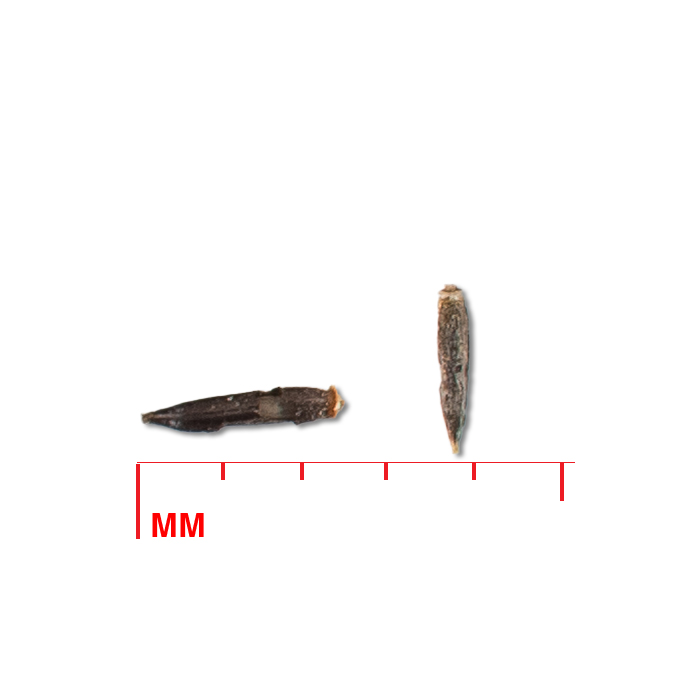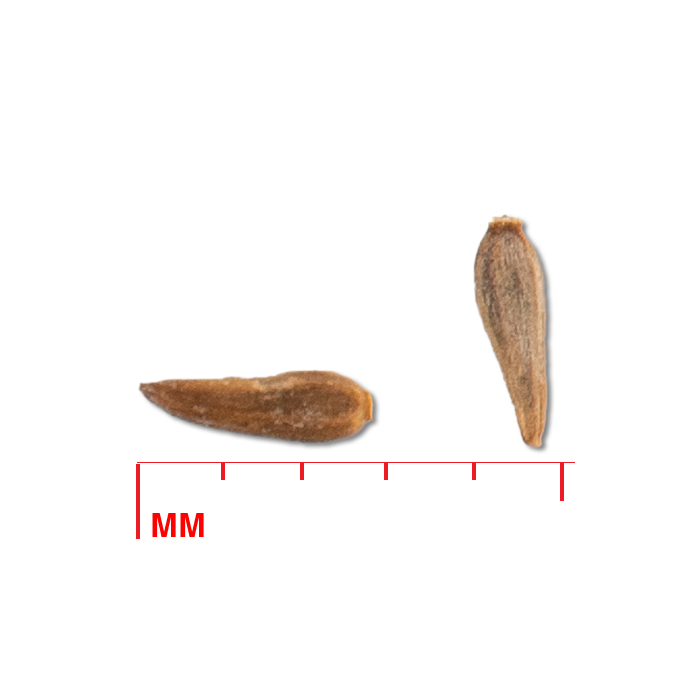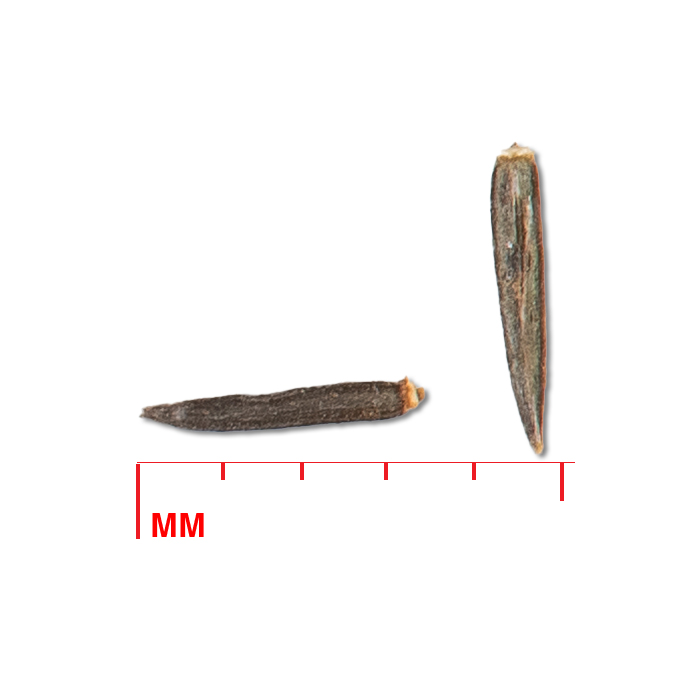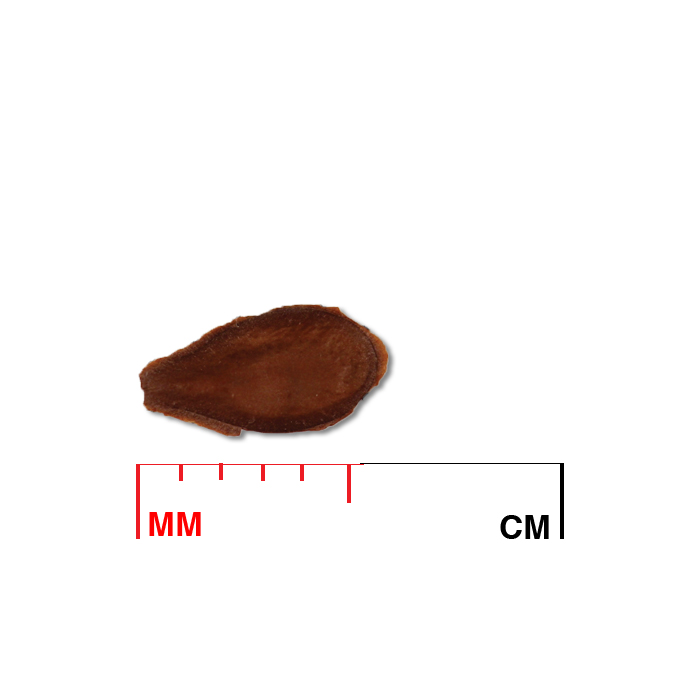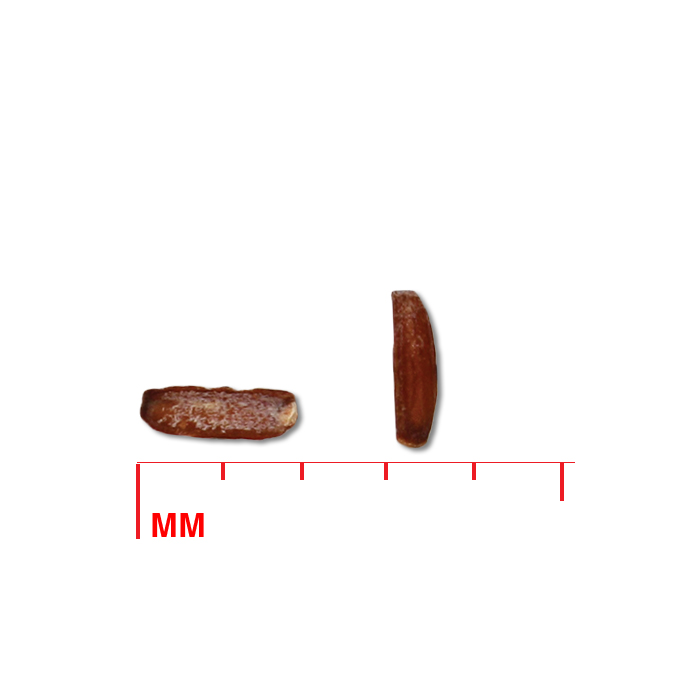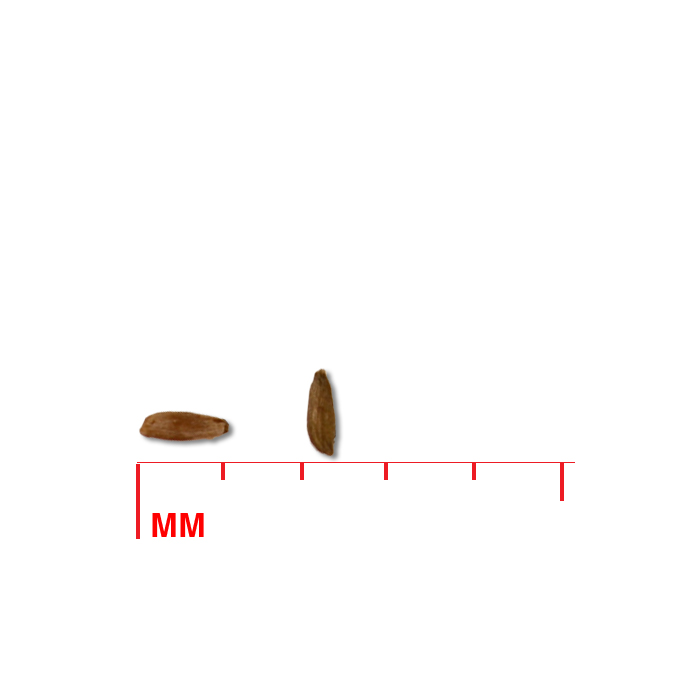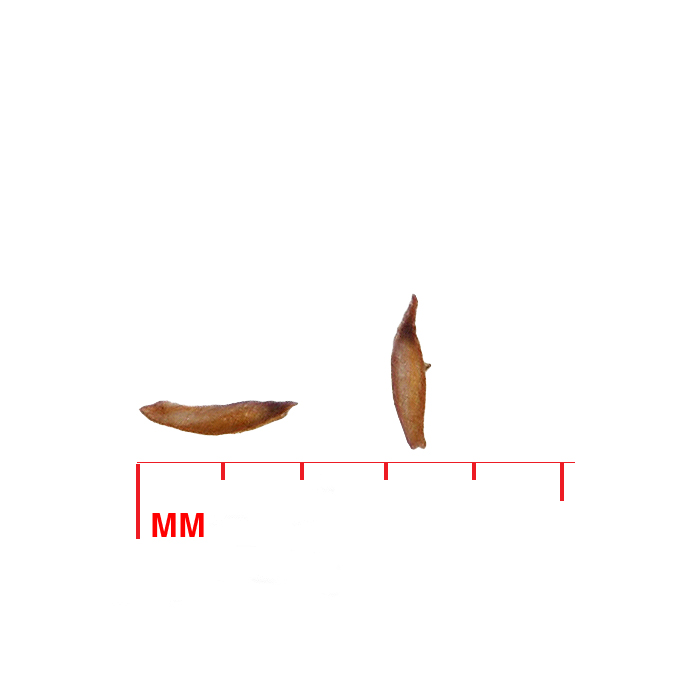Species Production Guides
Species Production Guides sagemThis section consists of specific information on seed production for selected species in the following functional groups: forbs (wildflowers), legumes, warm season grasses, cool season grasses, sedges, and woody species (prairie shrubs). Each species production guide includes a description of the species (with photos), its habitat, range map, and conservation status.
Recommendations for stand establishment, management, seed harvest, and seed cleaning are provided. These are based primarily on direct experience at the Tallgrass Prairie Center, together with published information from the NRCS Plant Materials Program, scientific publications, personal communication with other native seed growers, and publicly available databases such as the Seed Information Database and the Propagation Protocols Database of the Native Plant Network. A graph of potential seed yields is provided in each guide, based on harvest records from seed production plots at the Tallgrass Prairie Center.
Each species guide is provided as both a webpage and a printable file (pdf). If you prefer to work with a print version, we encourage you to print pdfs of the species you need and organize them in a binder.
This section is a work in progress. We will continue to add new species guides as they are completed. If you have comments, questions or would like to share propagation information for potential inclusion in these guides, please email laura.walter@uni.edu.
Forbs
Forbs sagemThe Species Production Guides for forbs (wildflowers) provide specific information about growing each of these species for seed production.
Scroll the list (alphabetized by scientific name) or press ctrl-f (or command-f) to search for any name in this page.
A printable file (pdf) is also provided on each species page for those needing a print version.
This section is a work in progress. We will continue to add new species guides as they are completed.
Anemone canadensis / Canadian anemone
Anemone cylindrica / candle anemone
Anemone virginiana / tall thimbleweed
Asclepias syriaca / common milkweed
Asclepias tuberosa / butterfly milkweed
Asclepias verticillata / whorled milkweed
Chelone glabra / white turtlehead
Coreopsis palmata / stiff tickseed
Coreopsis tripteris / tall tickseed
Potentilla arguta / tall cinquefoil
Echinacea pallida / pale purple coneflower
Eryngium yuccifolium / button eryngo
Euthamia graminifolia / flat-top goldentop
Fragaria virginiana / Virginia strawberry
Gentiana alba / plain gentian
Gentiana andrewsii / closed bottle gentian
Heliopsis helianthoides / smooth oxeye
Helianthus pauciflorus / stiff sunflower
Hypericum ascyron / great St. Johnswort
Liatris aspera / tall blazing star
Liatris ligulistylis / Rocky Mountain blazing star
Liatris pycnostachya / prairie blazing star
Lobelia cardinalis / cardinalflower
Lobelia siphilitica / great blue lobelia
Lythrum alatum / winged lythrum
Monarda fistulosa / wild bergamot
Monarda punctata / spotted beebalm
Oligoneuron riddellii / Riddell's goldenrod
Oligoneuron rigidum / stiff goldenrod
Parthenium integrifolium / wild quinine
Pedicularis lanceolata / swamp lousewort
Prunella vulgaris ssp. lanceolata / lance selfheal
Pycnanthemum verticillatum var. pilosum / whorled mountainmint
Pycnanthemum tenuifolium / narrowleaf mountainmint
Pycnanthemum virginianum / Virginia mountainmint
Ratibida pinnata / pinnate prairie coneflower
Rudbeckia subtomentosa / sweet coneflower
Ruellia humilis / hairy wild petunia
Silphium integrifolium / wholeleaf rosinweed
Silphium laciniatum / compassplant
Solidago missouriensis / Missouri goldenrod
Solidago speciosa / showy goldenrod
Symphyotrichum laeve / smooth blue aster
Symphyotrichum novae-angliae / New England aster
Symphyotrichum oolentangiense / skyblue aster
Symphyotrichum praealtum / willowleaf aster
Tradescantia bracteata / longbract spiderwort
Tradescantia ohiensis / bluejacket
Vernonia baldwinii / Baldwin's ironweed
Vernonia fasciculata / prairie ironweed
Veronicastrum virginicum / Culver's root
Zizia aptera / meadow zizia
Zizia aurea / golden zizia
Template to Clone / common name
Template to Clone / common name sagem[Image for header, must be 2500px X 898px or 1920px X 689px]
Latin name, Scientific Authority
Alternate Common Name(s): text
Scientific Synonym(s): text
Family: Text
Functional Group: text
Description
- Life cycle and growth form
Xxxxxxx
Height: X - X ft
[Image]
- Leaves and stem
[Image]
Xxxxx
- Flower, fruit and seedhead
Flower: xxx
Fruit/seedhead: xxxx
[Image]
- Seed
[Image]
Seed characteristics
Seed weight: [seeds per ounce, 1000 seed weight]
Description: [shape, length, color, attached structures]
Typical seed test
PLS: %
Purity: %
Germination: %
Dormancy: %
(average of XX tests of purchased seed lots)
- Habitat and range
Habitat: [soils, sun exposure, preferred conditions for seed production]
Conservation status: xxx
[BONAP Map]
General Comments
[Important ecological, ethnobotanical, economic characteristics, or other, not covered in botanical description above]
Recommendations for Seed Production
- Establishment for seed production
Direct seeding
*We do not have experience with direct seeding this species for seed production.
Seeding rate: xxx
Row spacing: xxx
Seeding time: xxx
Weed control: xxx
Greenhouse
Seed pre-treatment: xxx
Sowing: xxx
Transplanting: xxx
Note: xxx
- Stand management
Weeds: xxx
Pests: xxx
Diseases: xxx
Soil moisture: xxx
- Seed production
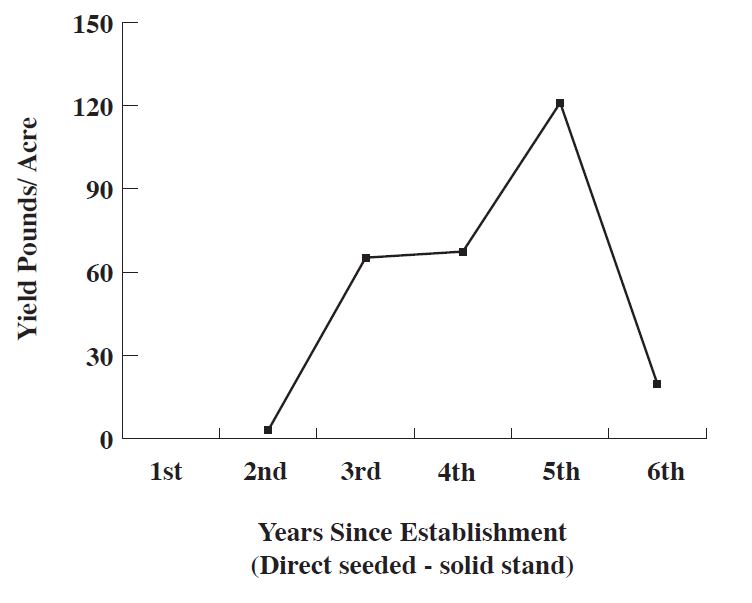 First harvest: xxx
First harvest: xxxYield: xxx
Stand life: xxx
Flowering date: xxx
Seed maturity: xxx
Harvest date range at TPC (20xx-20xx): xxx
Recommended harvest method: xxx
DELETE: Please place the yield graph in by placing your cursor in front of First harvest then inserting the image. Use left aligned wrap text setting. Scale the image to be 500px like the example shown above.
- Seed cleaning and storage
Cleaning process: xxx
Seed storage: xxx
Released Germplasm
Source Identified material: Text, delete if none.
[Accession map if available, 700px middle aligned]
NRCS release(s): Text, delete if none.
Cultivated varietie(s): Text, delete if none.
- References
Species Guide Updated 0/0/2024
common boneset
common boneset sagem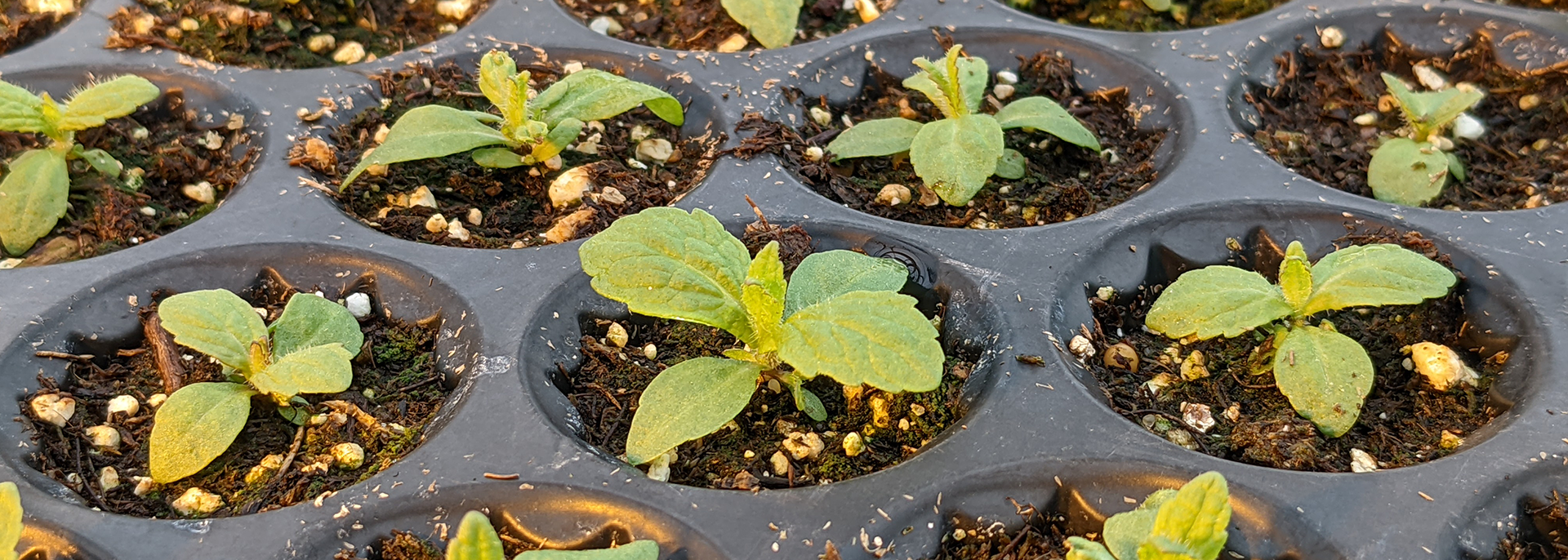
Eupatorium perfoliatum, L.
Alternate Common Names: boneset, thoroughwort
Scientific Synonyms: Eupatorium chapmanii Small, Eupatorium perfoliatum var. colpophilum Fernald & Griscom, Eupatorium perfoliatum var. cuneatum Engelmann
Family: aster or sunflower family (Asteraceae)
Functional Group: forbs (wildflowers)
Description
- Life cycle and growth form
Perennial, short-rhizomatous, spreads slowly to form small colonies.
Height: 2-4 ft
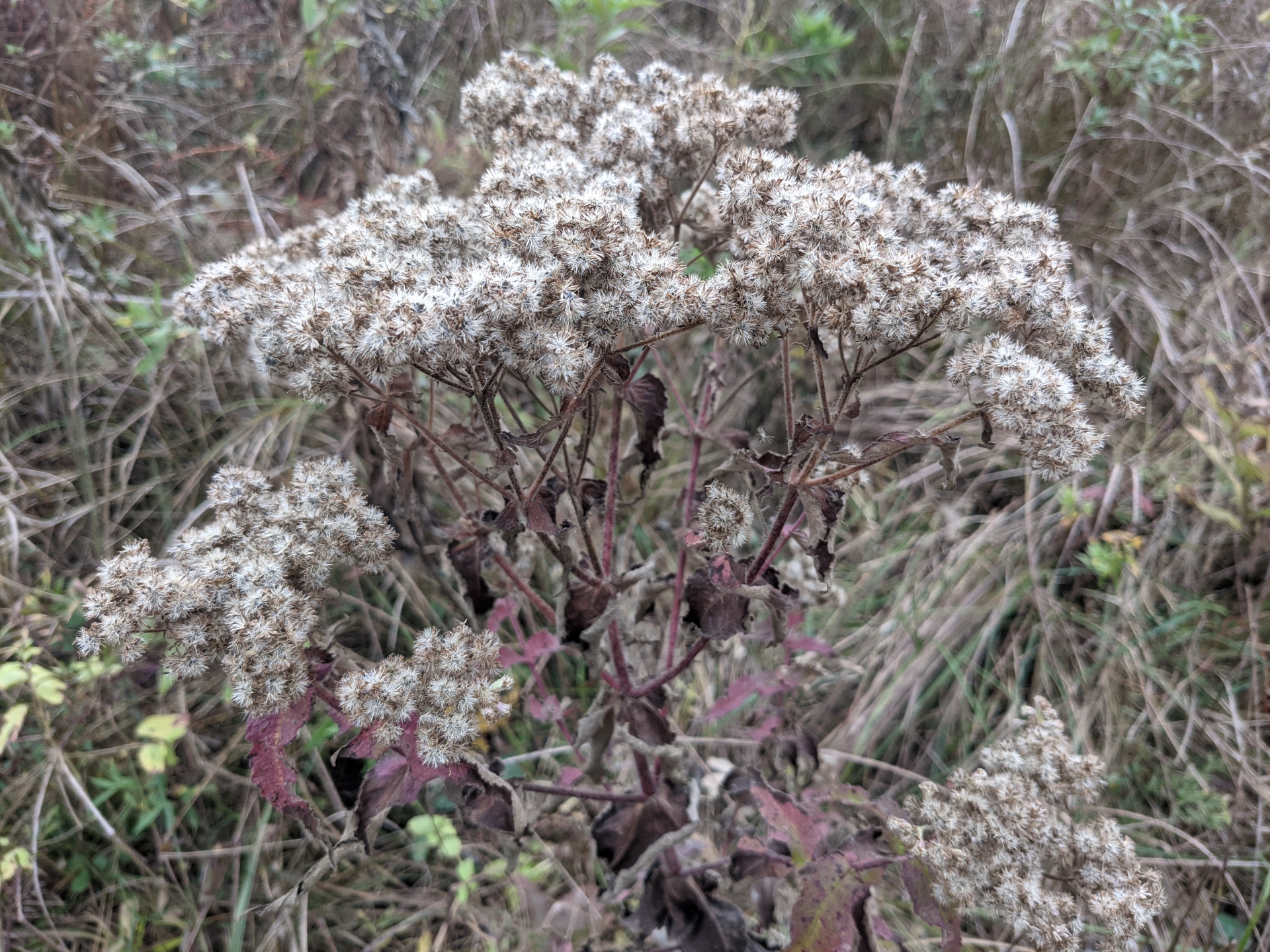
- Leaves and stem
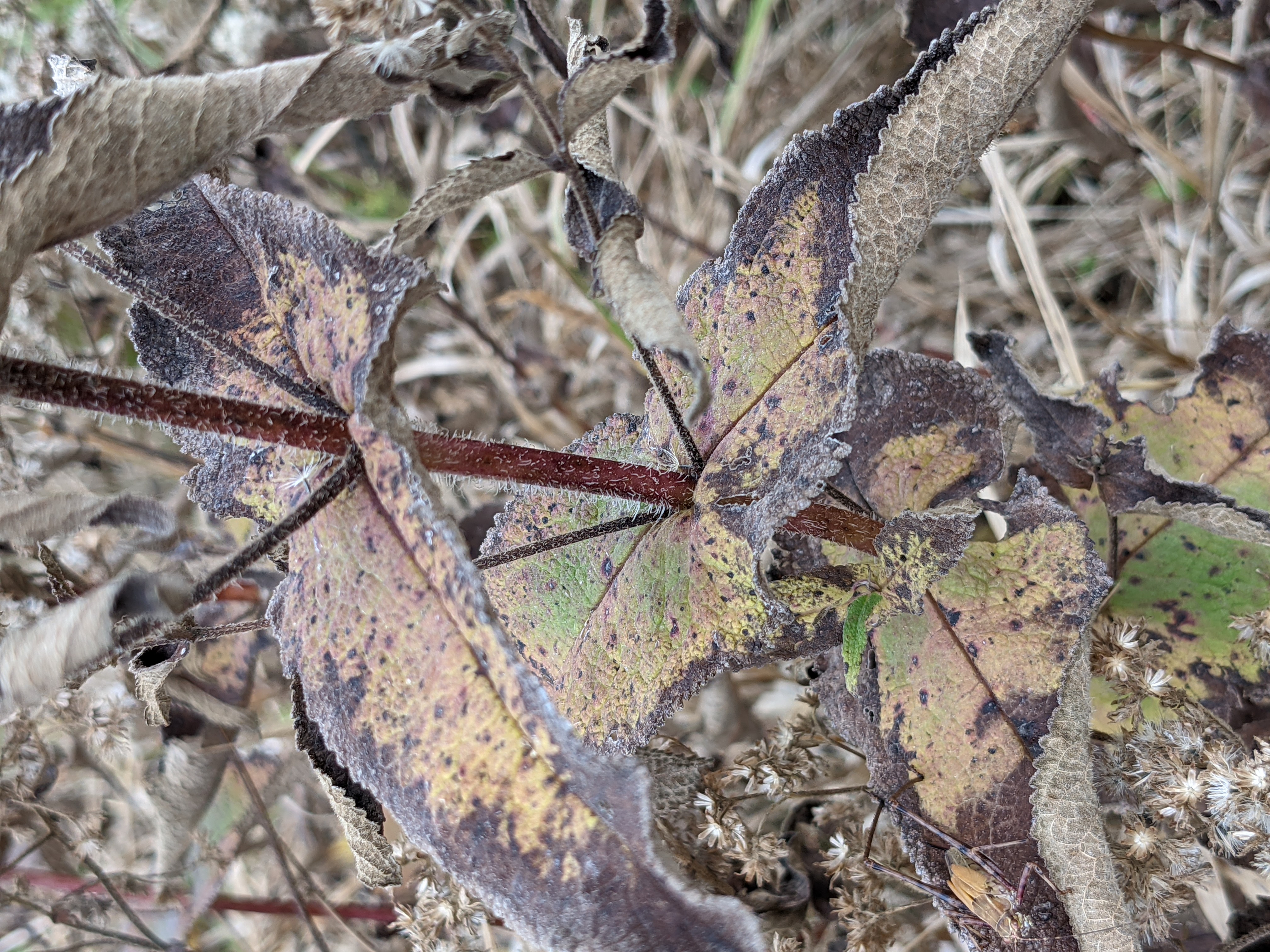
Leaves join around the stem making them look like one leaf (perfoliate) and then taper to a point, opposite arrangement (rarely whorled), leaf margins are wavy with small teeth (crenulate), leaf surfaces have a wrinkled appearance, upper and lower leaf sides are hairy; stems are hairy, erect, and branched in the upper portion of the plant.
- Flower, fruit and seedhead
Flower: Tiny heads (¼ in) of up to 15 disc florets (no visible “petals” or rays), grouped in flat-topped to slightly domed clusters of dozens to hundreds of heads; flower clusters appear fuzzy due to thin styles that extend from each floret.
Fruit/seedhead: Clusters become fluffy from the center outwards as seeds mature and pappus expands.
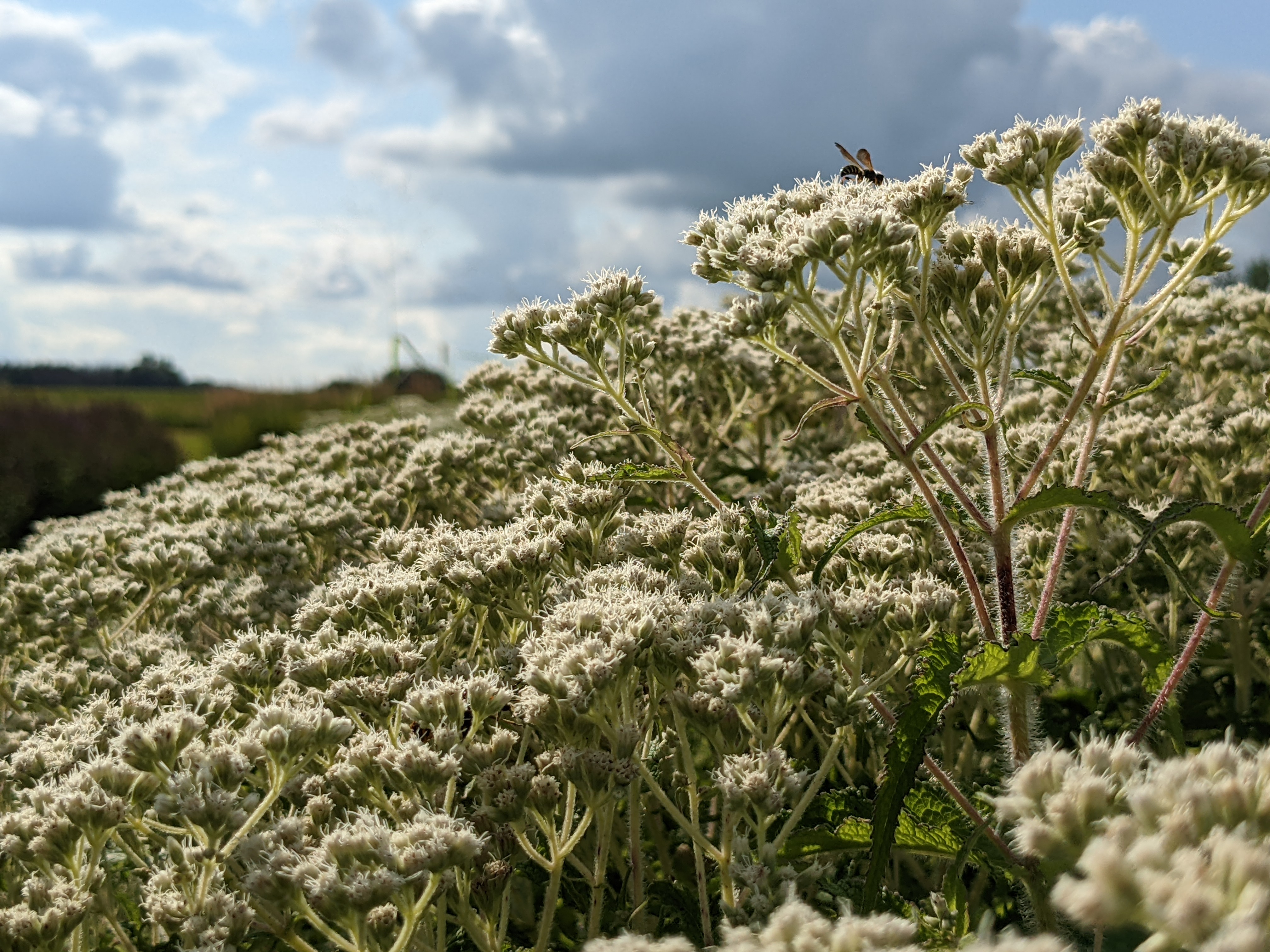
- Seed
Seed characteristics
Seeds per ounce: 160,000 (IA NRCS)
1000 seed weight: 0.11 g (Seed Information Database)
Description: Long slender, dark gray seeds (achenes) up to 2.5 mm long with a short tuft of white hairs (pappus).
Typical seed test
PLS: 68% (n = 6)
Purity: 71% (n = 6)
Germination: 16% (n = 5)
Dormant: 81% (n = 5)
(averages obtained from n tests of purchased seed lots)
- Habitat and range
Habitat: Moist to wet, organic-rich soil; full sun; wet pastures, sedge meadows, fens; The USDA classifies it as an Obligate Wetland species in the Midwest region. It benefits from irrigation in production systems.
Conservation status: Global- G5, secure; Kansas- S3, vulnerable (NatureServe)
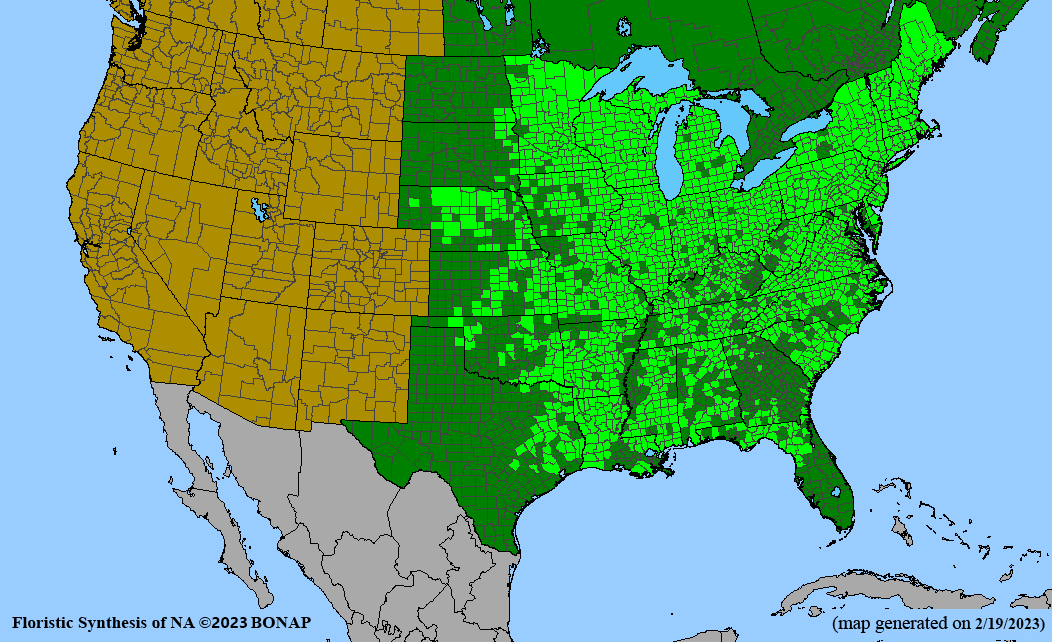
General Comments
The clouds of sweet-scented flowers attract a diverse assemblage of pollinating insects. Bitter compounds in the foliage deter mammalian herbivores, although some moth larvae use common boneset as a host plant. This species has traditional medicinal and ceremonial uses among Native tribes within its range, and was adopted as a treatment for colds and fevers by colonial settlers. It is currently under investigation by researchers in Germany and India for use in treatment of viral illnesses such as colds, flu, and dengue fever as well as malaria. Caution: this plant also contains phytochemicals that may be toxic to the liver.
Recommendations for Seed Production
- Establishment for seed production
Direct seeding
We do not have experience direct seeding this species for seed production. It reportedly has low germination rates in direct seedings. High seeding rates and fall planting are recommended.
Greenhouse
Seed pre-treatment: 60 days cold-moist stratification.
Sowing: Seed is small and should be surface sown. If started in germination flats, transplant to individual plugs when seedlings have their first pair of true leaves, about 4 weeks after seeding.
Transplanting: Seedlings are ready to transplant to the field about 6-8 weeks after being transferred to plugs, when their roots are well-branched and numerous root tips are visible at hole(s) in the base of the plug. Pop out a few plugs to check for adequate root development that will provide sturdy plugs for planting. Seedlings are fast growing and may need to be clipped back before transplanting to improve the shoot:root ratio. A week or two before transplanting, move flats outside to ‘harden off.’ (See Propagation chapter in General Information for more details).
- Stand management
Weeds: In the first season after transplanting, weeds are suppressed by a plastic weed barrier. Plants spread slowly by short rhizomes; in second and subsequent years, holes in plastic may need to be expanded or plastic removed to make room for new stems. Well-established plots shade out most weeds.
Pests: None noted.
Diseases: None noted.
Soil moisture: Irrigation is necessary in most soils to obtain maximum seed yield.
- Seed production
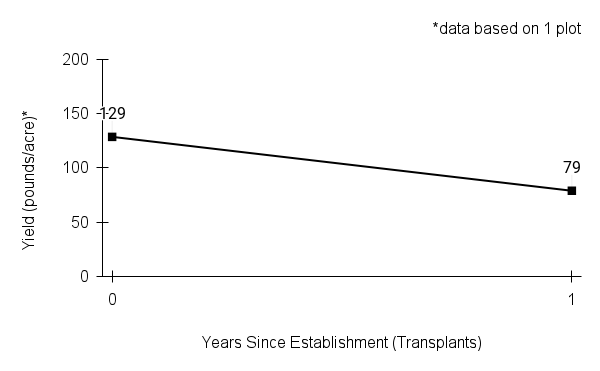 First harvest: Plants flower and set a little seed the first year when transplanted in spring.
First harvest: Plants flower and set a little seed the first year when transplanted in spring.Yield: 80-130 pounds/acre (based on 1 plot)
Stand life: unknown
Flowering date: August - September in northeast Iowa
Seed maturity: mid-September - mid-October
Harvest date range at TPC (2022-2023): Sept 15 - Oct 7
Recommended harvest method: Watch for the centers of seed clusters to begin shattering, and pick early maturing seed heads (clip stalks below seed clusters). If some heads in a cluster are still closed (not fluffy), pull apart a few heads to see if the seeds are dark colored and separate easily from the base (receptacle). Combine the rest of the plot at peak maturity. Turn off air or combine will disperse the fluffy seeds.
- Seed cleaning and storage
Cleaning process: If hand clipped, run dried material through a ¼ in mesh to thresh seed from stalks. Use a brush machine (soft bristles, minimum vacuum) to remove pappus. Seed is fragile, and some seed is dehulled, even when soft bristles are used. Winnow with a box fan to separate seed from most of the pappus and chaff. Airscreen 2-3 times to finish cleaning. See Appendix C for specific settings.
Seed storage: Cool/dry (orthodox) for up to 3 years (USDA Plant Fact Sheet).
Released Germplasm
Source Identified material: Natural Selections/Iowa Ecotype Zone NI
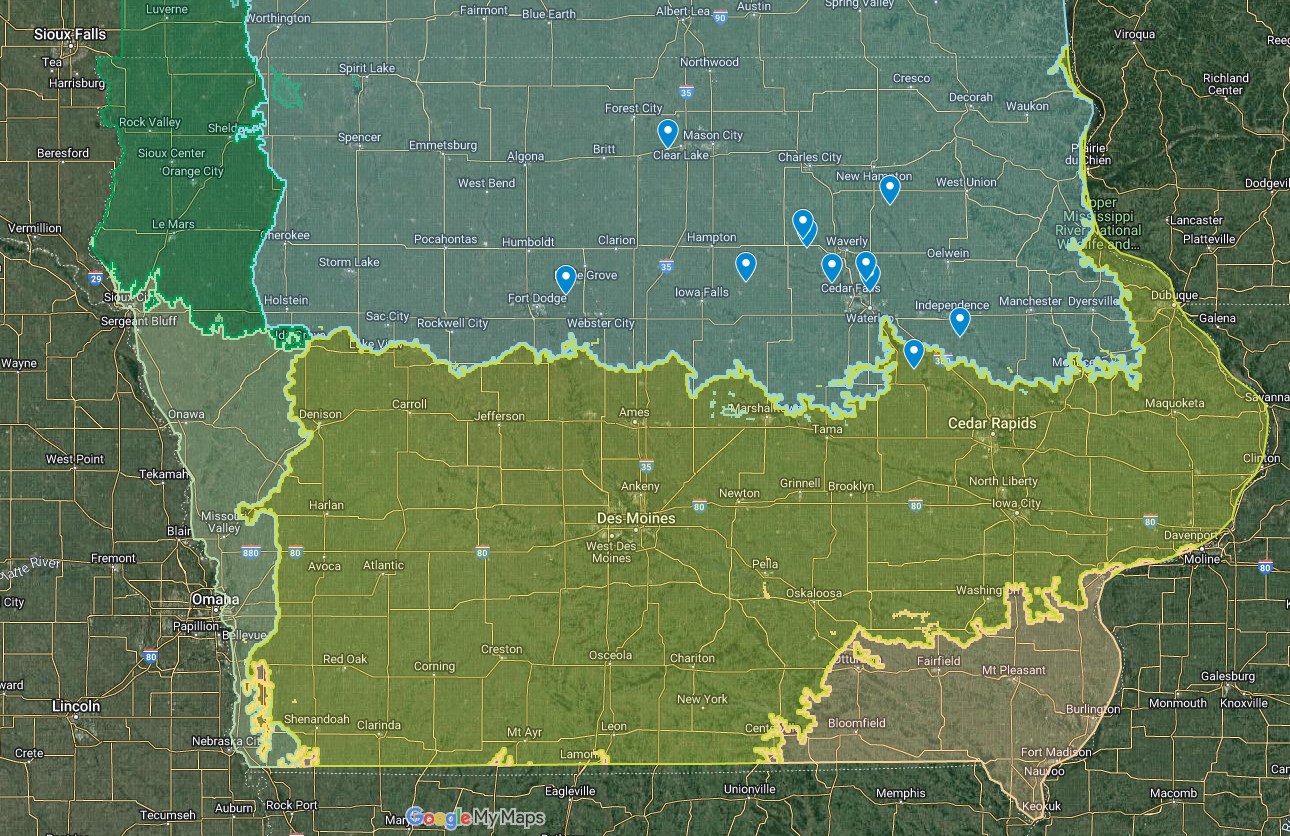
- References
Belt, S. (2009). Plant fact sheet for common boneset (Eupatorium perfoliatum L.). USDA-Natural Resources Conservation Service, Norman A. Berg National Plant Materials Center, Beltsville, MD 20705.
Chayka, Katy. (n.d.). Eupatorium perfoliatum (Common Boneset). Minnesota Wildflowers. https://www.minnesotawildflowers.info/flower/common-boneset
Cochrane, T. S., Elliot, K., & Lipke, C. S. (2014). Boneset. In Prairie Plants of the University of Wisconsin-Madison Arboretum (3rd ed., p. 79). University of Wisconsin-Madison Arboretum.
Eupatorium perfoliatum. Prairie Moon Nursery. (n.d.). https://www.prairiemoon.com/eupatorium-perfoliatum-boneset-prairie-moon-nursery.html
Hilty, J. (2019). Common Boneset - Eupatorium perfoliatum. Illinois Wildflowers. https://www.illinoiswildflowers.info/prairie/plantx/cm_boneset.htm
Kartesz, J.T., The Biota of North America Program (BONAP). 2023. North American Plant Atlas. (http://bonap.net/napa). Chapel Hill, N.C. [maps generated from Kartesz, J.T. 2023. Floristic Synthesis of North America, Version 1.0. Biota of North America Program (BONAP). (in press)]
NatureServe. 2024. NatureServe Network Biodiversity Location Data accessed through NatureServe Explorer [web application]. NatureServe, Arlington, Virginia. Available https://explorer.natureserve.org/. (Accessed: February 28, 2024).
SER, INSR, RBGK, Seed Information Database (SID). (2023). Eupatorium perfoliatum. https://ser-sid.org/species/e29e87df-3177-43f1-bfcd-bc052339de84
USDA NRCS National Plant Data Team. (n.d.). Eupatorium perfoliatum L. USDA plants database. https://plants.usda.gov/home/plantProfile?symbol=EUPE3
Siripun, K. C., & Schilling, E. E. (2020, November 6). Eupatorium perfoliatum Linnaeus. Flora of North America. http://floranorthamerica.org/Eupatorium_perfoliatum
Species Guide Updated 3/5/2024
parasol whitetop
parasol whitetop sagem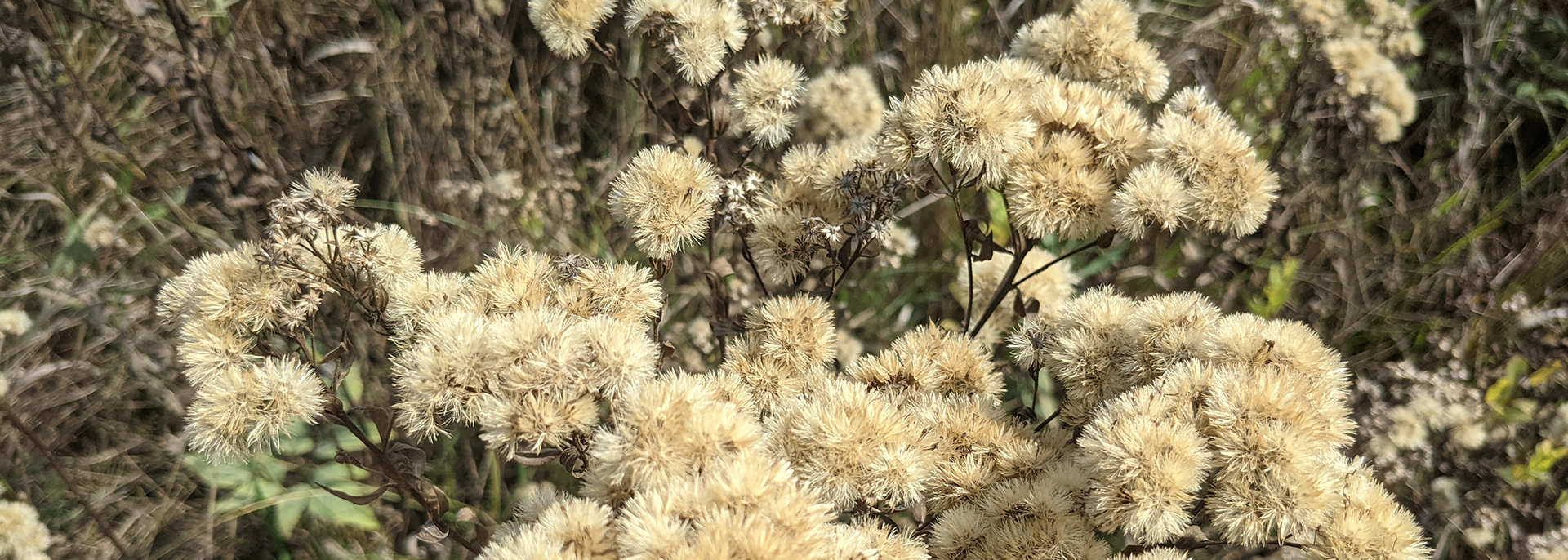
Doellingeria umbellata, (Mill.) Nees
Alternate Common Names: flat-top aster, parasol aster, tall flat-topped white aster
Scientific Synonyms: Aster umbellatus Miller, Diplopappus umbellatus (Miller) Hooker, Diplostephium umbellatum (Miller) Cassini
Family: aster or sunflower family (Asteraceae)
Functional Group: forbs (wildflowers)
Description
- Life cycle and growth form
Long-lived perennial, spreads by short rhizomes to form small colonies.
Height: 1-5 ft
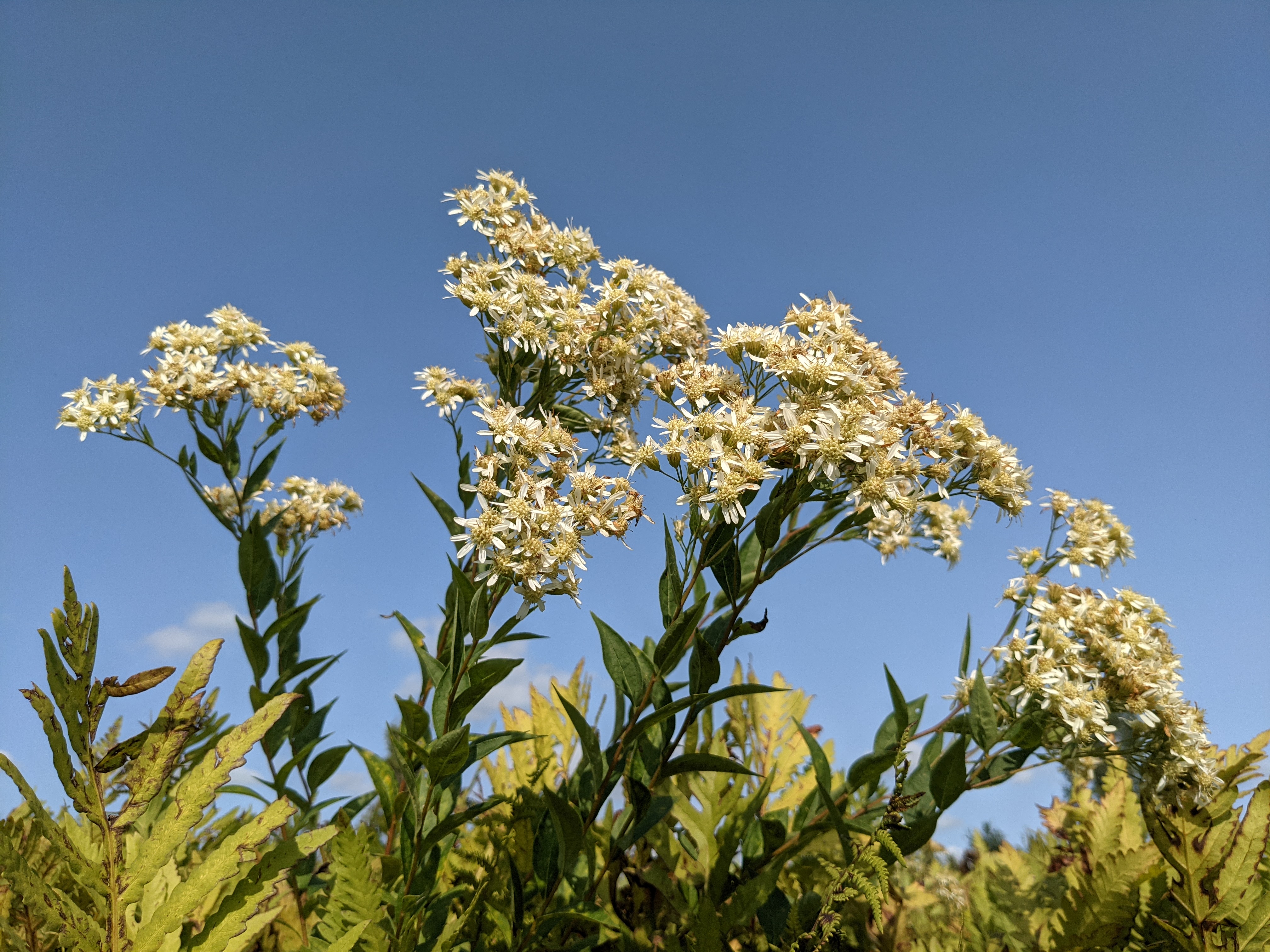
- Leaves and stem
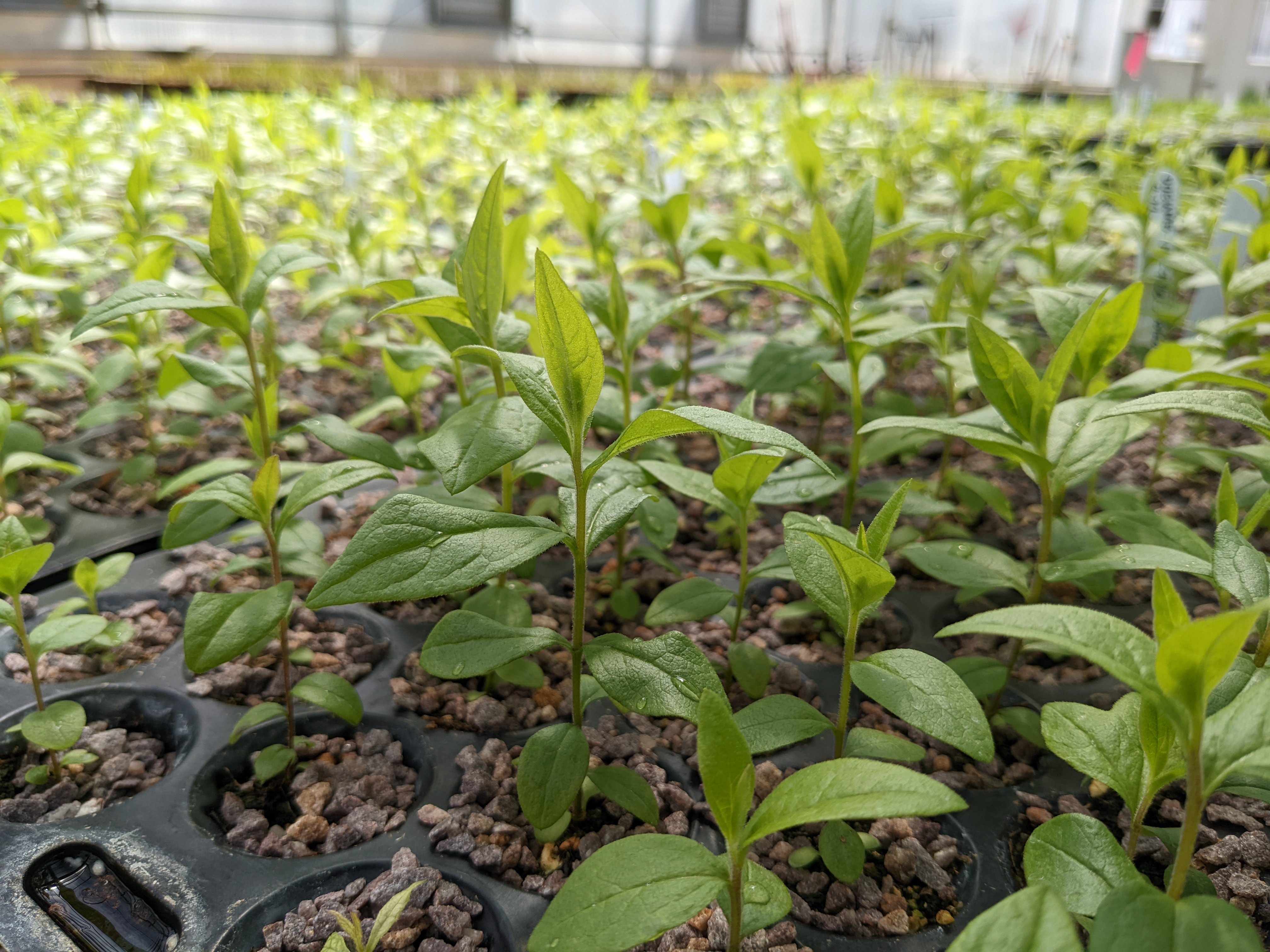
Lance-shaped, 3-5 in long and ½-1 in wide, leaf margins toothless, leaf surfaces usually hairless or with short hairs, alternate arrangement; stems are erect and unbranched except within the flower head, with few to no hairs, generally light yellowish-green but sometimes purple.
- Flower, fruit and seedhead
Flower: Individual heads are daisy-like, about ½ in wide, with yellow to tan centers and usually 5-10 (up to 15) white “petals” (rays) irregularly arranged around the central disc; dozens to hundreds of heads in a branched, flattened cluster up to 10 or 12 in wide.
Fruit/seedhead: Seed head appears fuzzy due to creamy-white fluff (pappus) on seeds.
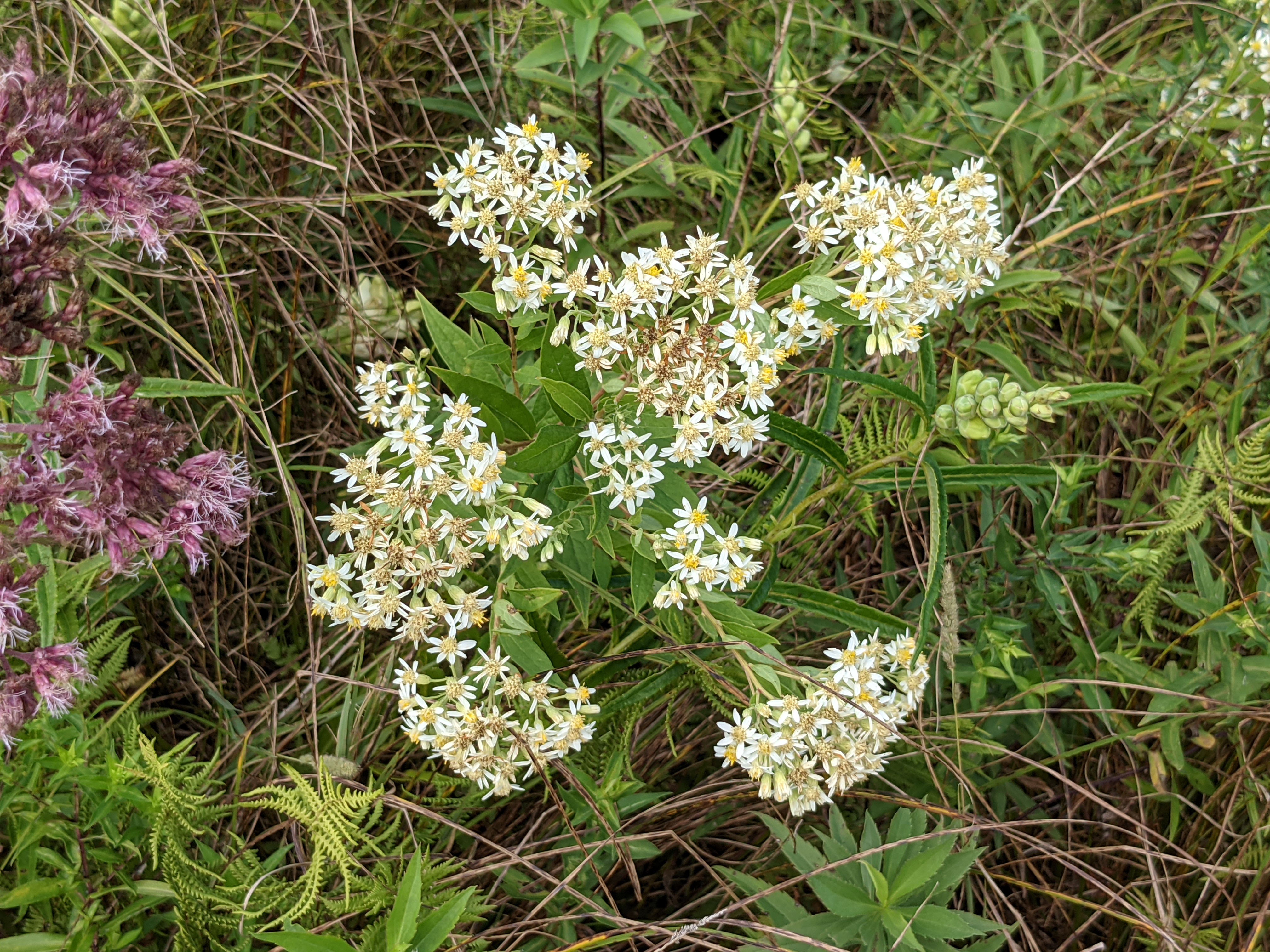
- Seed
Seed characteristics
Seeds per ounce: 67,000 (IA NRCS)
1000 seed weight: 0.7 g (Seed Information Database)
Description: Seed (achene) is light brown, 2.5-3 mm long, approximately 1 mm wide near the top, tapered to a point on the lower end, and bears a “parachute” of creamy white fluff (pappus).
Typical seed test
PLS: 85% (n = 5)
Purity: 90% (n = 5)
Germination: 22% (n = 4)
Dormant: 71% (n = 4)
(averages obtained from n tests of purchased seed lots)
- Habitat and range
Habitat: Moist to wet soils, preferably with some sand; partial to full sun; wet prairies, sedge meadows, seasonally wet ditches, and fens; benefits from irrigation in production systems. The USDA classifies it as a Facultative Wetland species in the Midwest region.
Conservation status: Global- G5, secure; Delaware, Iowa, and North Carolina- S3, vulnerable (NatureServe)
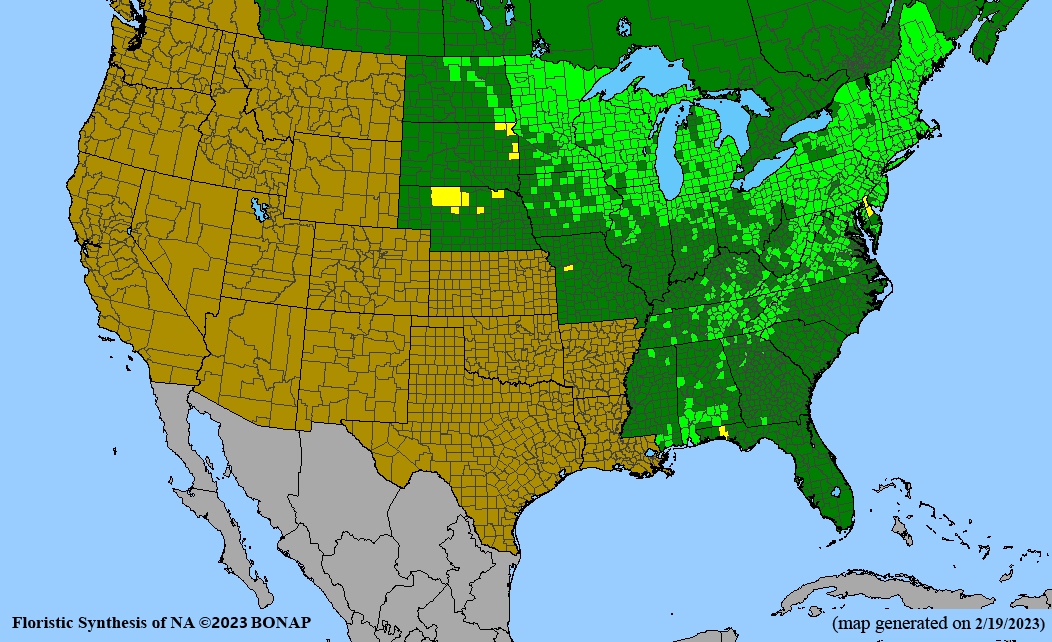
General Comments
Parasol whitetop is a late season nectar and pollen source for diverse species of bees (including specialist bees), wasps, beetles, flower flies, and skipper butterflies. It is a larval host to some species of checkerspot and crescent butterflies. It can grow and flower for many years in mesic soils but benefits from irrigation in production systems.
Recommendations for Seed Production
- Establishment for seed production
Direct seeding
We do not have experience with direct seeding this species for seed production.
Greenhouse
Seed pre-treatment: 60 days cold-moist stratification results in uniform and high rates of germination.
Sowing: Seed is small and should be only lightly covered with growing media. If started in germination flats, transplant to individual plugs when seedlings have their first pair of true leaves, about 2 weeks after seeding.
Transplanting: Seedlings are ready to transplant to the field about 6-8 weeks after transferring them to plugs, when their roots are well-branched and numerous root tips are visible at hole(s) in the base of the plug. Pop out a few plugs to check for adequate root development that will provide sturdy plugs for planting. Seedlings are fast growing and may need to be clipped back before transplanting to improve the shoot:root ratio. A week or two before transplanting, move flats outside to ‘harden off.’ (See Propagation chapter in General Information for more details).
- Stand management
Weeds: In the first season after transplanting, weeds are suppressed by a plastic weed barrier. Plants spread slowly by short rhizomes; in second and subsequent years, holes in plastic may need to be expanded or plastic removed to make room for new stems.
Pests: None noted.
Diseases: None noted.
Soil moisture: This species benefits from drip irrigation when planted in mesic soils.
- Seed production
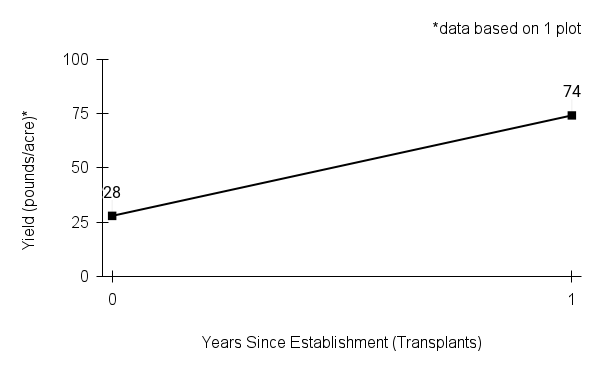 First harvest: Plants will flower and produce a small amount of seed in the planting year when started from transplants.
First harvest: Plants will flower and produce a small amount of seed in the planting year when started from transplants.Yield: 28-74 pounds/acre (based on 1 plot)
Stand life: unknown
Flowering date: August - September
Seed maturity: late September - late October
Harvest date range at TPC (2022-2023): Sept 15 - Oct 20
Recommended harvest method: Seed is released from heads within days of the fluffy “parachutes” expanding. Watch for the centers of seed clusters to begin shattering, and pick early maturing seed heads (clip stalks below seed clusters). If some heads in a cluster are still closed (not fluffy), pull apart a few heads to see if the seeds are dark colored and separate easily from the base (receptacle). Combine the rest of the plot at peak maturity. Turn off air or combine will disperse the fluffy seeds.
- Seed cleaning and storage
Cleaning process: If hand clipped, run dried material through a ¼ in mesh to thresh seed from stalks. Use a brush machine (medium bristles, low vacuum) to remove pappus. May need two rounds of brushing. Winnow with a box fan to separate seed from most of the pappus and chaff. Airscreen 2-3 times, then indent to remove broken bits of stems. See Appendix C for specific settings.
Seed storage: cool/dry (orthodox)
Released Germplasm
Source Identified material: Natural Selections/Iowa Ecotype Zone NI
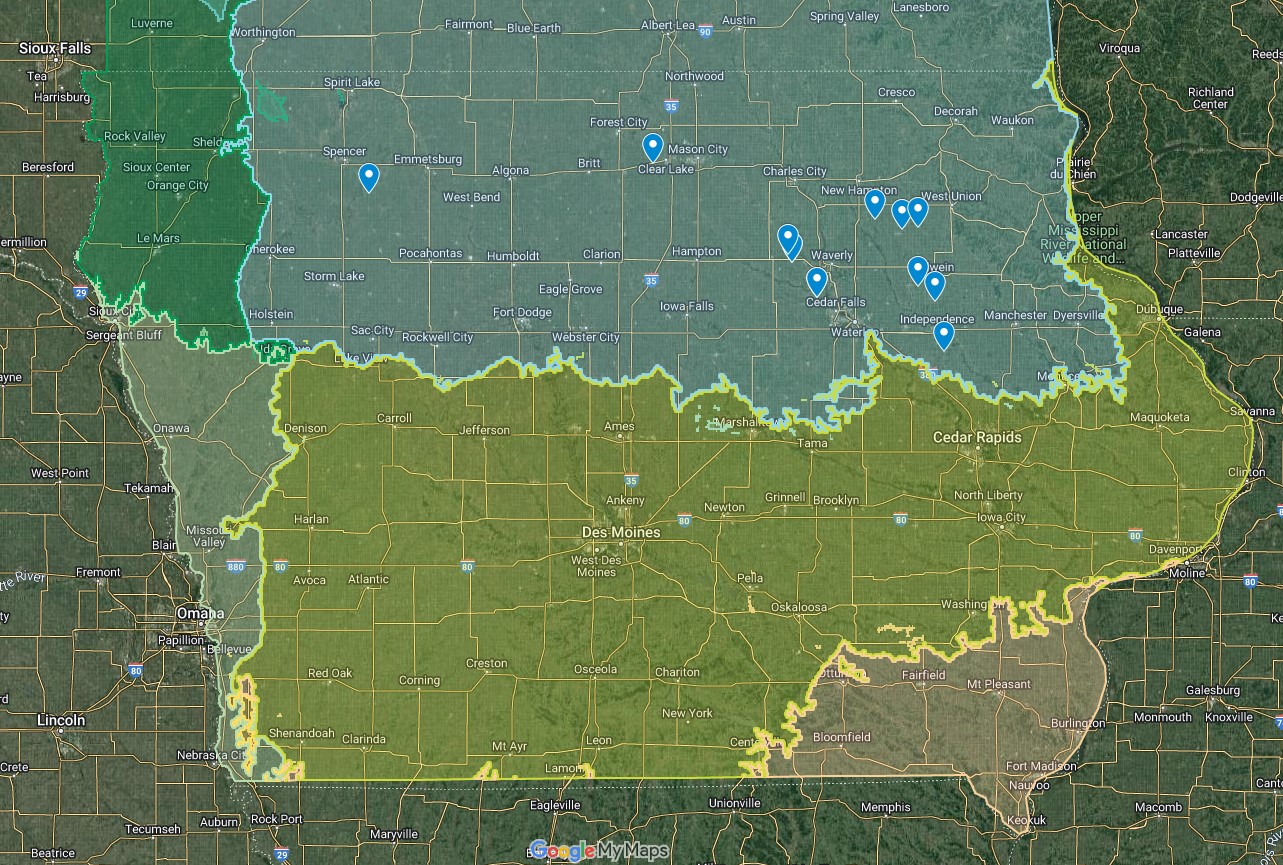
- References
Cochrane, T. S., Elliot, K., & Lipke, C. S. (2014). Asteraceae - Sunflower Family. In Prairie Plants of the University of Wisconsin-Madison Arboretum (3rd ed., p. 133). University of Wisconsin-Madison Arboretum.
Chayka, Katy (n.d.). Doellingeria umbellata (Flat-topped White Aster). Minnesota Wildflowers. https://www.minnesotawildflowers.info/flower/flat-topped-white-aster
Hilty, J. (2019). Flat-Topped Aster - Doellingeria umbellata. Illinois Wildflowers. https://www.illinoiswildflowers.info/wetland/plants/fltp_aster.html
Kartesz, J.T., The Biota of North America Program (BONAP). 2023. North American Plant Atlas. (http://bonap.net/napa). Chapel Hill, N.C. [maps generated from Kartesz, J.T. 2023. Floristic Synthesis of North America, Version 1.0. Biota of North America Program (BONAP). (in press)]
NatureServe. 2024. NatureServe Network Biodiversity Location Data accessed through NatureServe Explorer [web application]. NatureServe, Arlington, Virginia. Available https://explorer.natureserve.org/. (Accessed: February 28, 2024).
Society for Ecological Restoration, International Network for Seed Based Restoration and Royal Botanic Gardens Kew. (2023) Seed Information Database (SID). Available from: https://ser-sid.org/ (February 2023)
USDA NRCS National Plant Data Team. (n.d.). Doellingeria umbellata (Mill.) Nees. USDA plants database. https://plants.usda.gov/home/plantProfile?symbol=DOUM2
Van Der Grinten, Martin. (2001). Propagation protocol for production of Container (plug) Aster umbellatus P. Mill. plants USDA NRCS - Big Flats Plant Materials Center Corning, New York. In: Native Plant Network. URL: https://NativePlantNetwork.org (accessed 2024/02/02). US Department of Agriculture, Forest Service, National Center for Reforestation, Nurseries, and Genetic Resources.
Semple, J. C., & Chmielewski, J. G. (2020, November 6). Doellingeria umbellata (Miller) Nees. Flora of North America. http://floranorthamerica.org/Doellingeria_umbellata
Species Guide Updated 3/5/2024
spotted joe pye weed
spotted joe pye weed sagem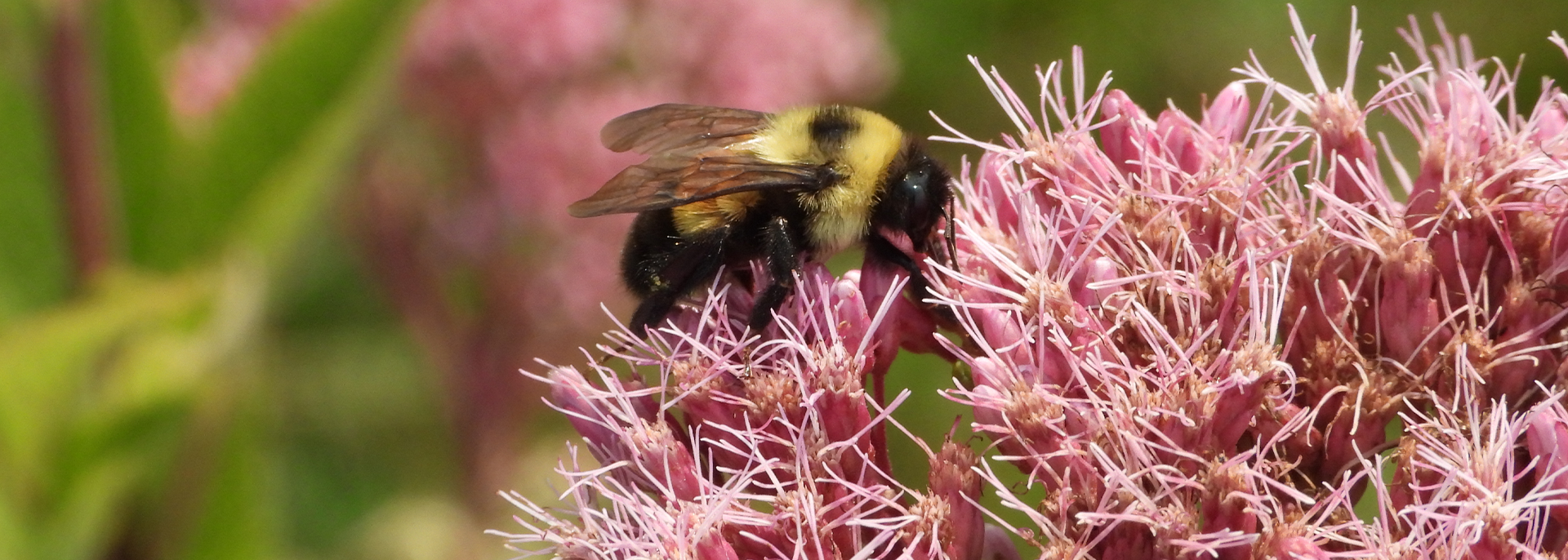
Eutrochium maculatum, (L.) E. E. Lamont
Alternate Common Names: purple boneset, spotted trumpetweed
Scientific Synonyms: Eupatoriadelphus maculatus (L.) R. M. King & H. Rob., Eupatorium maculatum L., Eupatorium purpureum L. var. maculatum (L.) Darl., Eupatorium purpureum subsp. maculatum (L.) Á. Löve & D. Löve, Eupatorium trifoliatum var. maculatum (L.) Farwell
Family: aster or sunflower family (Asteraceae)
Functional Group: forbs (wildflowers)
Description
- Life cycle and growth form
Perennial, spreads slowly by rhizomes to form clumps.
Height: 2-10 ft (mostly 3-6 ft)
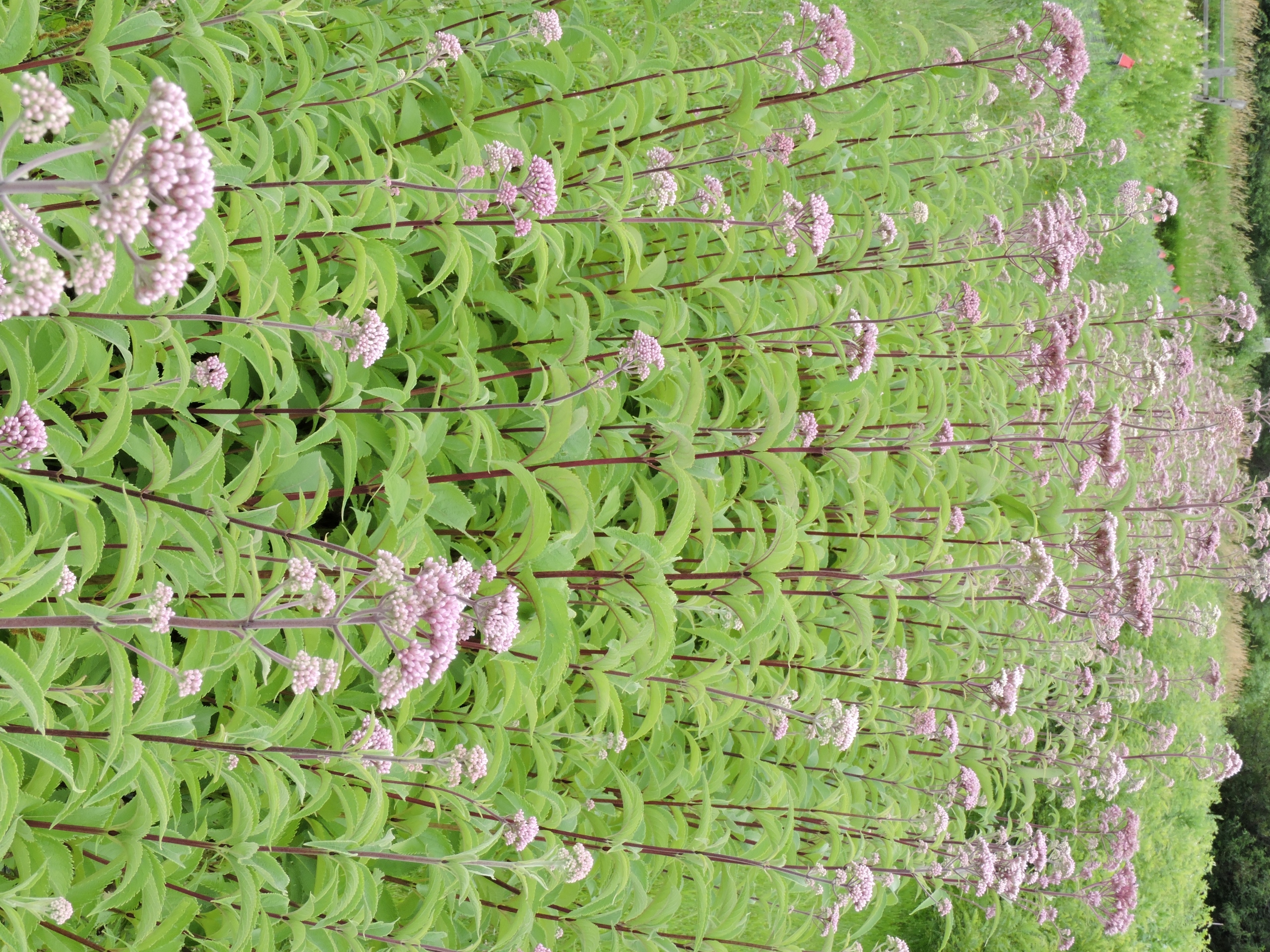
- Leaves and stem
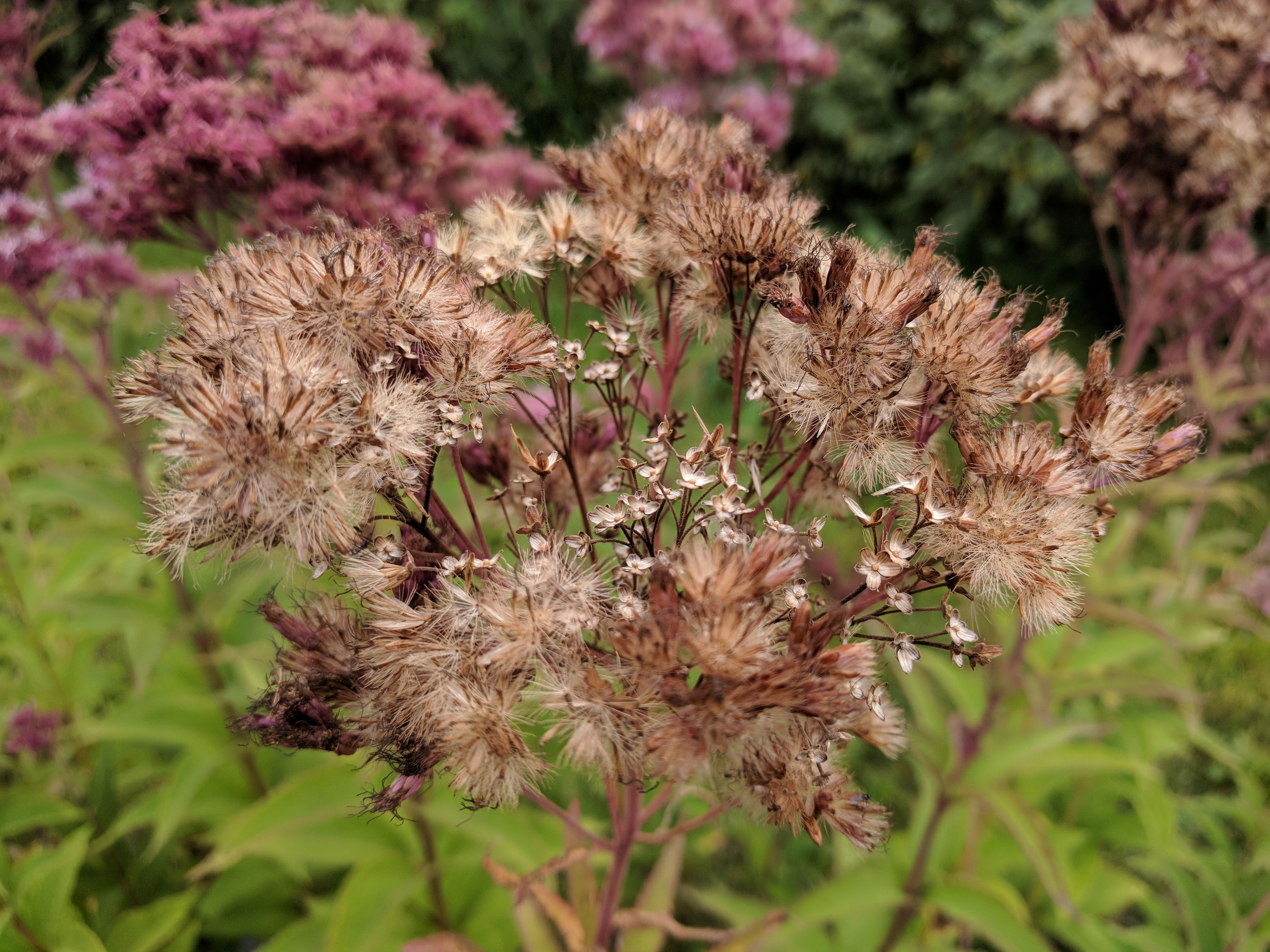
Lance-shaped, up to 9 in long with serrated margins, whorled in groups of 4-5 (usually) at each node; unbranched stems purple to purple-spotted (the name ‘maculatum’ means spotted and refers to this trait).
- Flower, fruit and seedhead
Flower: 3-5 small, indistinct florets per head, in flat-topped to domed inflorescences with dozens to hundreds of pink to purplish heads (rarely white); inflorescences appear fuzzy due to the long styles that stick out of the florets.
Fruit/seedhead: Seed clusters ripen from the center outward, becoming tan and fluffy as seed matures; seed is wind-dispersed and susceptible to shattering in windy weather.
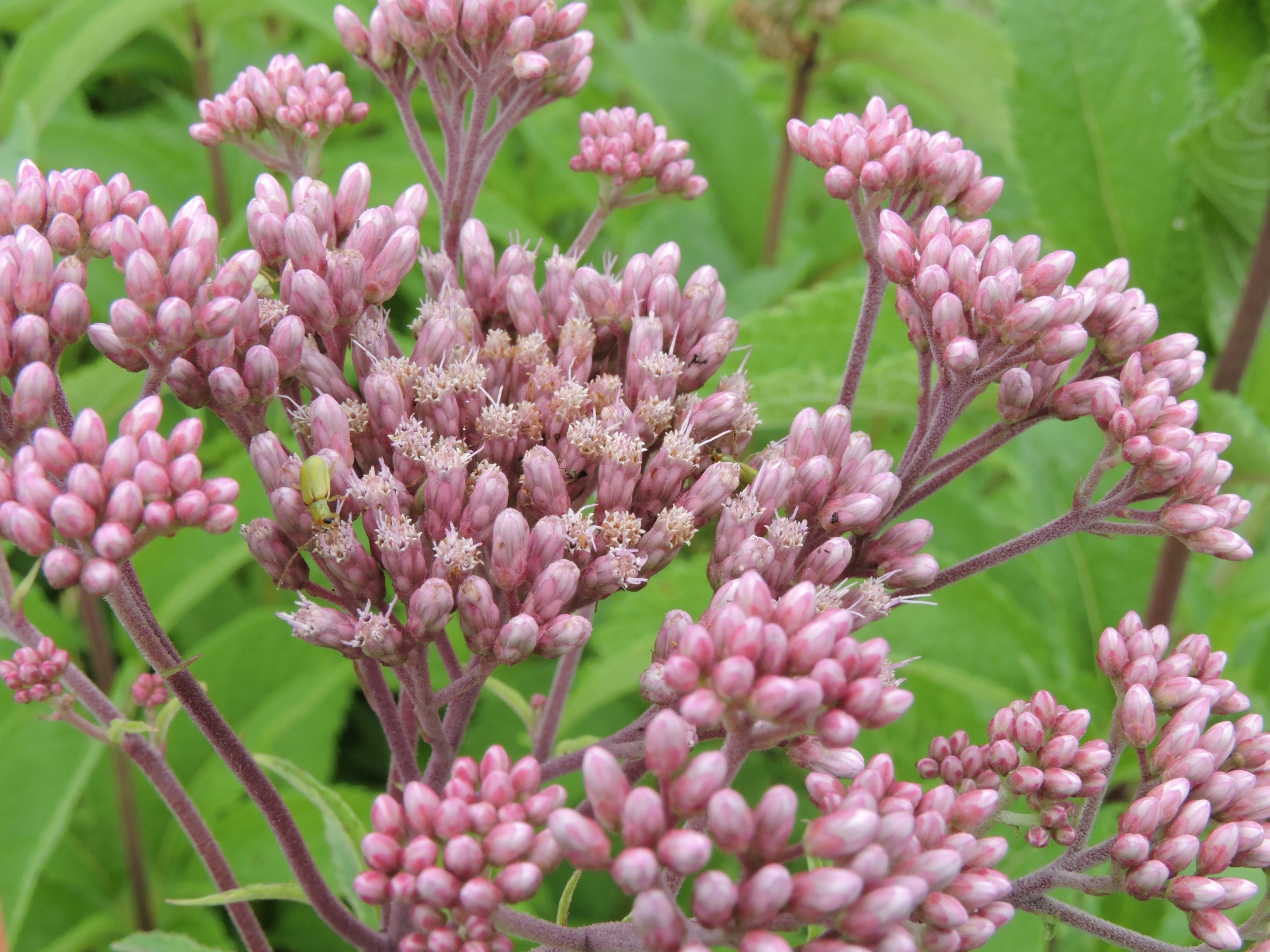
- Seed
Seed characteristics
Seeds per ounce: 95,000 (IA NRCS)
1000 seed weight: 0.28 g (Seed Information Database)
Description: Slender, charcoal-gray seeds about 3 mm long with a tuft of tan pappus.
Typical seed test
PLS: 74% (n = 5)
Purity: 86% (n = 5)
Germination: 17% (n = 4)
Dormant: 72% (n = 4)
(averages obtained from n tests of purchased seed lots)
- Habitat and range
Habitat: Moist to wet soil; full sun; wet prairies, sedge meadows, fens, ditches, and other wet places. The USDA classifies it as an Obligate Wetland species in the Midwest region. It benefits from irrigation in production systems.
Conservation status: Global- G5, secure; Idaho and West Virginia- S1, critically imperiled; Montana- S1/S2, critically imperiled to imperiled; Arizona, Virginia, and Georgia- S2, imperiled; Wyoming- S3, vulnerable (NatureServe)
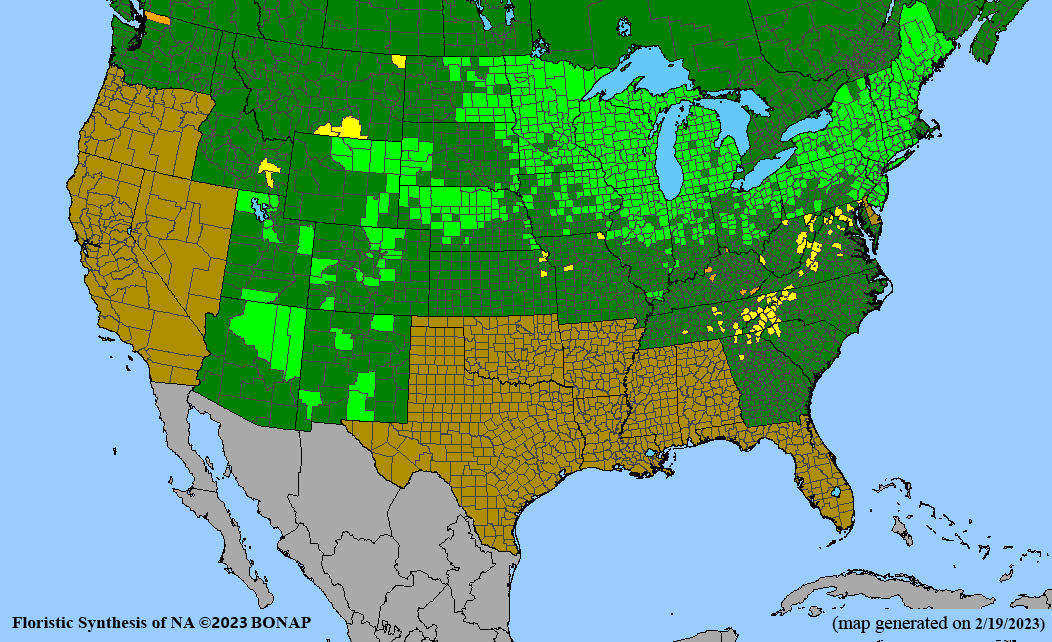
General Comments
The sweet-scented flowerheads attract numerous and diverse pollinators including the endangered rusty patched bumble bee. We once identified seven species of butterflies along a 150 foot row of flowering spotted joe pye weed in one 15-minute observation. Traditional uses of this species by Native tribes include treatments for digestive, urinary, kidney, and women’s complaints and using the hollow stems as straws. The clumped stems and whorled leaves produce dense shade that excludes most weeds from a well-established plot. Irrigation is important for seed production.
Recommendations for Seed Production
- Establishment for seed production
Direct seeding
We do not have experience direct seeding this species for seed production.
Greenhouse
Seed pre-treatment: 60 days cold-moist stratification.
Sowing: Seed is small and should be surface sown or very lightly covered or seedlings will not have enough energy to emerge. If started in germination flats, transplant to individual plugs when seedlings have their first pair of true leaves.
Transplanting: Seedlings are ready to transplant to the field about 8-12 weeks after starting in plugs, when their roots are well-branched and numerous root tips are visible at hole(s) in the base of the plug. Pop out a few plugs to check for adequate root development that will provide sturdy plugs for planting. A week or two before transplanting, move flats outside to ‘harden off.’ (See Propagation chapter in General Information for more details).
- Stand management
Weeds: In the first season after transplanting, weeds are suppressed by a plastic weed barrier. Plants spread by short rhizomes; in second and subsequent years, holes in plastic must be expanded or plastic removed to make room for new stems. Well-established plots shade out most weeds.
Pests: None noted.
Diseases: None noted.
Soil moisture: Irrigation is necessary in most soils to obtain maximum seed yield.
- Seed production
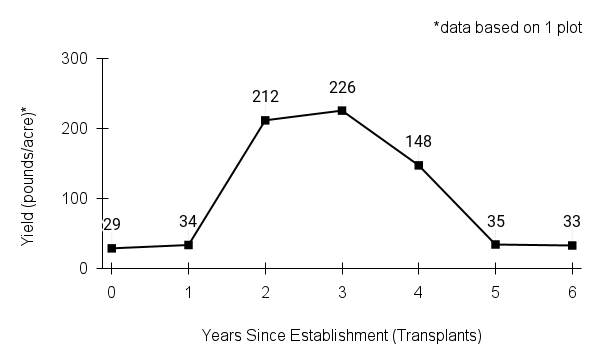 First harvest: Plants flower and set a little seed the first year when transplanted in spring.
First harvest: Plants flower and set a little seed the first year when transplanted in spring.Yield: 29-226 pounds/acre (based on 1 plot)
Stand life: Peak seed production in years 3-5, but plants are long-lived and vigorous for many years.
Flowering date: late July - early September in northeast Iowa
Seed maturity: second to third week of September
Harvest date range at TPC (2016-2022): Aug 26 - Oct 3
Recommended harvest method: Watch for the centers of seed clusters to begin shattering, and pick early maturing seed heads (clip stalks below seed clusters). If some heads in a cluster are still closed (not fluffy), pull apart a few heads to see if the seeds are dark colored and separate easily from the base (receptacle). Combine the rest of the plot at peak maturity. Turn off air or combine will disperse the fluffy seeds.
- Seed cleaning and storage
Cleaning process: If hand clipped, run dried material through a ¼ in mesh to thresh seed from stalks. Use a brush machine (medium bristles, minimum vacuum) to remove pappus. Winnow with a box fan to separate seed from most of the pappus and chaff. Airscreen 2-3 times to finish cleaning. See Appendix C for specific settings.
Seed storage: cool/dry (orthodox)
Released Germplasm
Source Identified material: Natural Selections/Iowa Ecotype Zone 1
Cultivated variety: ‘Gateway’ is a compact cultivar used in landscaping.
- References
Chayka, Katy. (n.d.). Eutrochium maculatum (Spotted Joe-pye Weed). Minnesota Wildflowers. https://www.minnesotawildflowers.info/flower/spotted-joe-pye-weed
Eutrochium maculatum. Prairie Moon Nursery. (2024). https://www.prairiemoon.com/eutrochium-maculatum-joe-pye-weed-prairie-moon-nursery.html
Hilty, J. (n.d.). Spotted Joe-Pye Weed - Eutrochium maculatum. Illinois Wildflowers. https://www.illinoiswildflowers.info/wetland/plants/sp_joepye.htm
Kartesz, J.T., The Biota of North America Program (BONAP). 2023. North American Plant Atlas. (http://bonap.net/napa). Chapel Hill, N.C. [maps generated from Kartesz, J.T. 2023. Floristic Synthesis of North America, Version 1.0. Biota of North America Program (BONAP). (in press)]
Lamont, Eric E. (2020, November 6). Eutrochium maculatum (Linnaeus) E. E. Lamont. Flora of North America. http://floranorthamerica.org/Eutrochium_maculatum
Missouri Botanical Garden. (n.d.). Eutrochium maculatum “Gateway.” Plant Finder. https://www.missouribotanicalgarden.org/PlantFinder/PlantFinderDetails.aspx?taxonid=302488&is
Moerman, D. (2003). Native American ethnobotany database. BRIT. http://naeb.brit.org/uses/search/?string=eupatorium%2Bmaculatum
NatureServe. 2024. NatureServe Network Biodiversity Location Data accessed through NatureServe Explorer [web application]. NatureServe, Arlington, Virginia. Available https://explorer.natureserve.org/. (Accessed: February 28, 2024).
SER, INSR, RBGK, Seed Information Database (SID). (2023). Eupatorium maculatum. https://ser-sid.org/species/567dc915-c79f-4608-a9d6-e1351ee9a2cb
USDA NRCS National Plant Data Team. (n.d.). Eutrochium maculatum (L.) E.E. Lamont. USDA plants database. https://plants.usda.gov/home/plantProfile?symbol=EUMA9
Species Guide Updated 3/5/2024
swamp milkweed
swamp milkweed sagem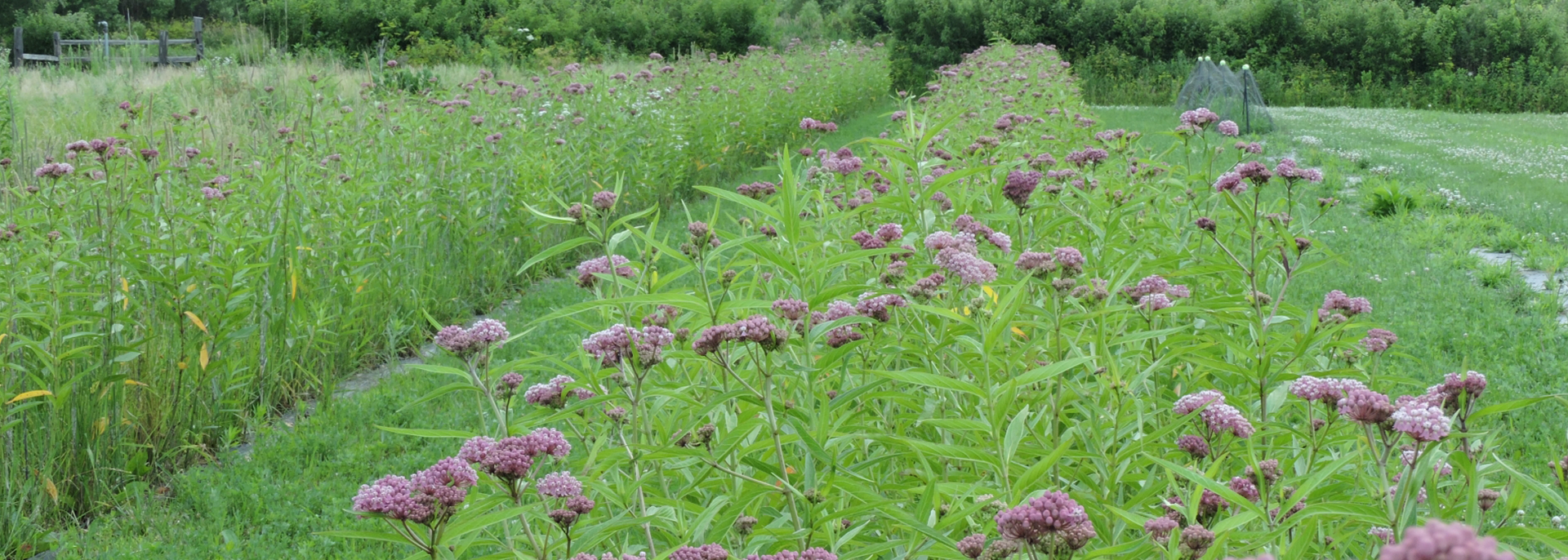
Asclepias incarnata, L.
Alternate Common Names: rose milkweed, silkweed, water nerve root, white Indian hemp, swamp silkweed
Family: dogbane family (Apocynaceae), formerly assigned to the milkweed family (Asclepiadaceae)
Functional Group: forbs (wildflowers)
Description
- Life cycle and growth form
Perennial, weakly rhizomatous, forming small clones of several stems; root systems are more fibrous than other commonly cultivated milkweeds such as butterfly milkweed (e.g., A. tuberosa).
Height: 2-5 ft
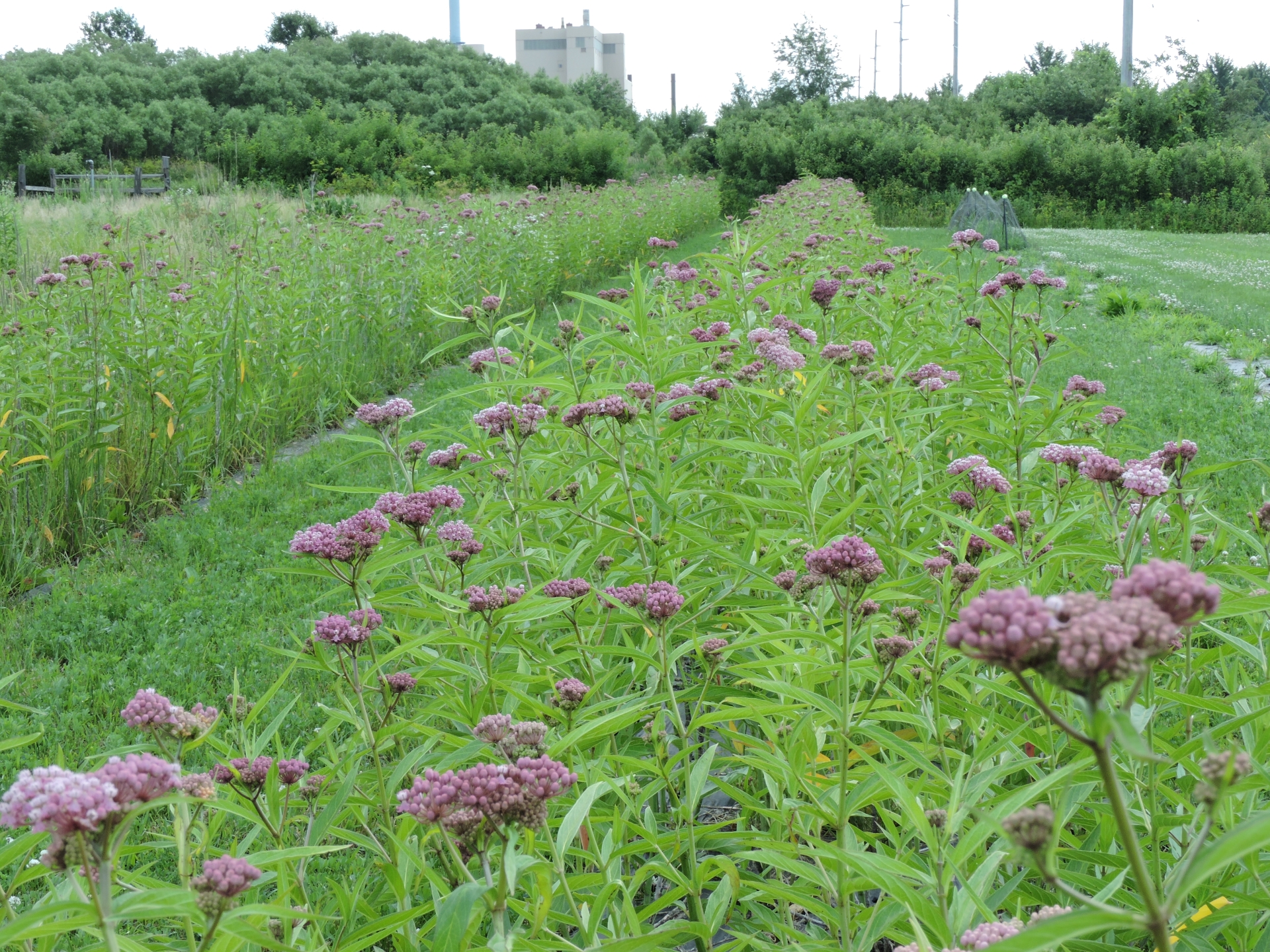
- Leaves and stem
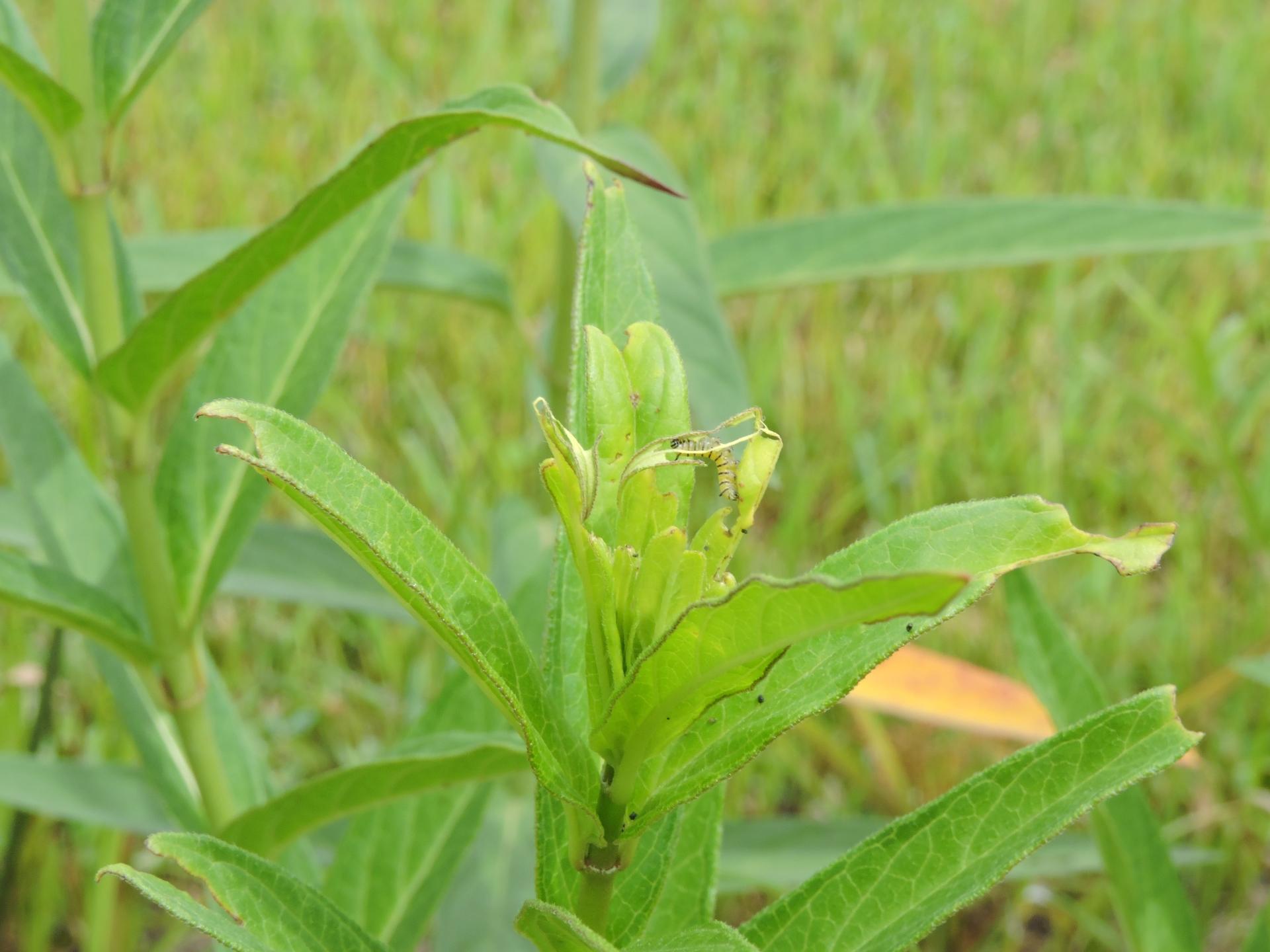
Leaves 3-6 in long, usually narrowly lanceolate with smooth, untoothed edges and sessile on the stem or short-stalked, opposite arrangement; stems mostly hairless, usually unbranched (occasionally branched above).
- Flower, fruit and seedhead
Flower: Numerous, various shades of rose-pink with a pronounced fragrance similar to bubblegum, in domed clusters 2-3 in across; individual flowers five-parted, radially symmetrical, with a crown of five tubular hoods surrounding a central column, petals and sepals curved downward (typical milkweed flowers).
Fruit/seedhead: Pods (follicles) are 2-4 in long, smooth/waxy, and teardrop-shaped; follicles open along one side at maturity, revealing many shiny brown seeds each of which bears a flattened wing and a plume of soft, white floss.
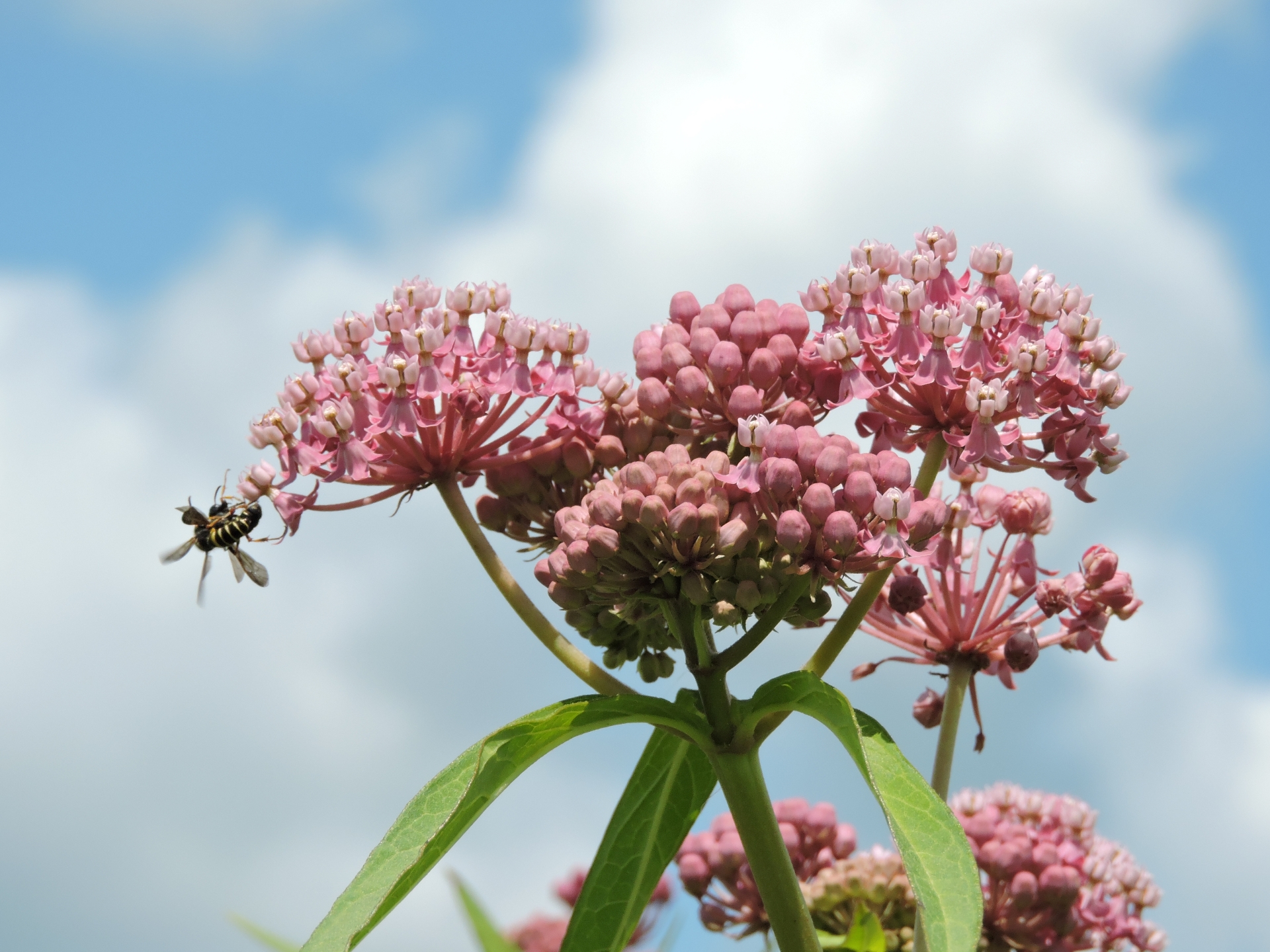
- Seed
Seed characteristics
Seeds per ounce: 4,800 (IA NRCS)
1000 seed weight: 3.65 g (Seed Information Database)
Description: Dark brown, oval, surrounded by flattened ‘wing’ and tuft of soft hairs.
Typical seed test
PLS: 89% (n = 11)
Purity: 98% (n = 11)
Germination: 7% (n = 7)
Dormancy: 58% (n = 7)
(averages obtained from n tests of purchased seed lots)
- Habitat and range
Habitat: Moist to wet, neutral to slightly acidic soil in partial to full sun. Wild populations are found in open floodplains, lakeshores, ditches, and wet prairies. Obligate wetland status (OBL) in Midwest, facultative (FACW) in Great Plains. Benefits from irrigation in production systems.
Conservation status: Global- G5, secure; Arizona, Mississippi, Montana, and Nevada- S1, critically imperiled; Arkansas, Idaho, and Louisiana- S2, imperiled; Wyoming- S2/S3 imperiled to vulnerable; Georgia- S3, vulnerable (NatureServe)
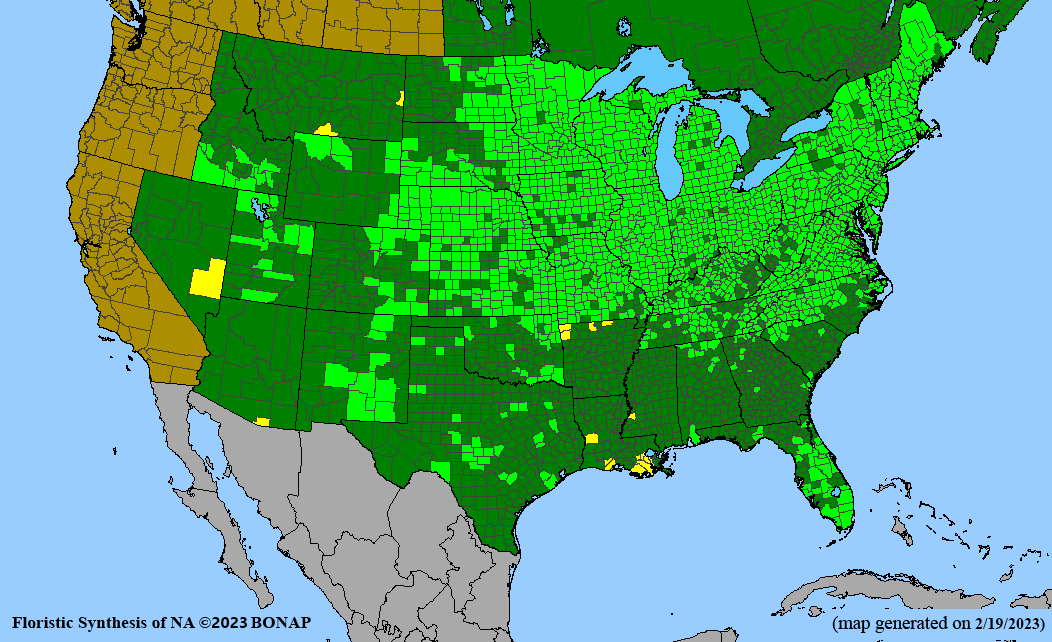
General Comments
Swamp milkweed is a valuable addition to pollinator habitat plantings on wetter soils and a showy, mannerly milkweed for home landscaping. This species is an important host for caterpillars of the monarch butterfly which feed upon its leaves. The fragrant flowers attract and provide nectar for numerous pollinators including various species of butterflies, bees, wasps, and flies. The strong, silky stem fibers are used as nesting material by songbirds and have traditionally been used for spinning and weaving by Native peoples, giving rise to some of the alternate common names such as silkweed and white Indian hemp. Establishment from plugs is rapid, and seed can be harvested the first fall, but production stands are short-lived (2-3 years).
Recommendations for Seed Production
- Establishment for seed production
Direct seeding
We do not have experience with direct seeding this species for seed production.
Greenhouse
Seed pre-treatment: To break dormancy, use 30-60 days cold stratification (check frequently for early germination) or a 24-hour soak in 250 ppm gibberellic acid (GA-3).
Sowing: Seed directly into plugs (2-3 seeds per cell) or on germination flat and lightly cover with potting mix, or germinate between sheets of moistened paper toweling and move to individual plugs as radicles (seed roots) emerge from seeds; start seeds 8-10 weeks before the average frost-free date.
Transplanting: Move plug flats outdoors 1-2 weeks before transplanting to allow seedlings to adjust to ambient conditions; plant with 1 ft spacing in plastic mulch with drip irrigation.
- Stand management
Weeds: Field preparation through repeated tillage and application of plastic mulch reduces weed issues; hand harvesting of pods as they mature results in very pure seed.
Pests: Non-native oleander aphids (Aphis nerii) can form dense infestations, reducing plant vigor and causing abortion of flowers or pods or, in extreme cases, death of the plant. Scout for these golden yellow aphids when plants are in bud, as it is easier to control small aphid infestations. Aphid predators (e.g., ladybug larvae, hoverfly larvae, and lacewing larvae) and aphid mummy wasps help reduce damage. Use the least toxic treatment possible (e.g., horticultural oils or insecticidal soaps) to avoid harming aphid enemies and pollinators, as aphids often occur at the time plants are in flower. Native seed-feeding milkweed bug species (Oncopeltus fasciatus and Lygaeus kalmii) pierce pods and feed on seeds. Manually remove clusters of red-orange milkweed bug nymphs from pods. A small proportion of pods is ruined by larvae of native milkweed stem weevils (Rhyssomatus lineaticollis or R. annectans). These appear as grubs or pupae inside the cluster of seeds. Affected pods have a small entry hole on the side and often mature prematurely. Earlier in the growing season, red milkweed longhorn beetles (Tetraopes spp.) feed on the tips of milkweed leaves. Their larvae feed within milkweed roots and rhizomes and may weaken plants over time. Monarch butterflies (Danaus plexippus) are attracted to lay eggs on swamp milkweed. In smaller-scale production systems, caterpillars can be hand-picked from production rows and transferred to nearby wild milkweeds before applying treatments for problem insects.
Diseases: Milkweeds are susceptible to a variety of fungal, bacterial, and viral diseases. Cultural methods such as reducing stand size or density, intercropping, and crop rotations may reduce disease spread and severity.
Soil moisture: Plant in naturally wet soils and/or supply irrigation, especially in dry weather.
Note: Refer to Milkweeds: A Conservation Practitioner’s Guide, published by the Xerces Society, for more detailed information on milkweed insects and diseases and their control.
- Seed production
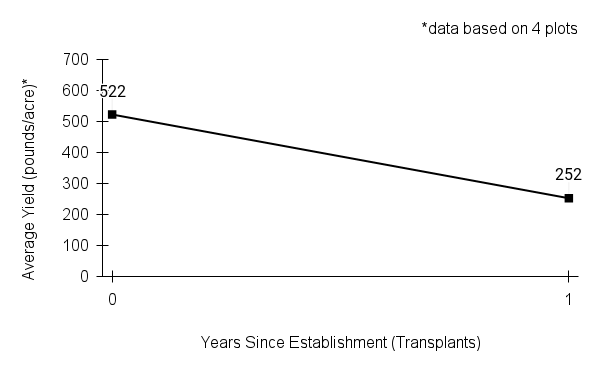 First harvest: Fall of planting year, when started from transplanted plugs.
First harvest: Fall of planting year, when started from transplanted plugs.Yield: 200-300 pounds/acre, with largest harvest in the first year (based on 4 plots)
Stand life: Two years from transplanting. Plants are reported to be longer lived in natural populations.
Flowering date: July in northern Iowa
Seed maturity: Early September - mid-October in northern Iowa
Harvest date range at TPC (2009-2020): Aug 31 - Oct 17
Recommended harvest method: Harvest by hand as pods (follicles) mature; collect pods that are changing color from green to yellowish and split when subjected to gentle pressure on the suture (seam), revealing dark brown seeds.
- Seed cleaning and storage
Cleaning process: Dry pods in cloth bags for two weeks with fan-forced air. Pass pods through a debearder or stationary combine to release seeds and detach fluff. Follow up by fan winnowing (outside on a relatively calm day) to remove most of the fluff. Air-screen the remaining material. Indent cylinder removes broken bits of pods and stems from seed.
Seed storage: cool/dry (orthodox)
Released Germplasm
Source Identified material: Natural Selections/Iowa Ecotype Zones 1, 2, IA
Cultivated varieties: ‘Ice Ballet,’ ‘Cinderella,’ and ‘Milkmaid’
- References
Borders, B. and E. Lee-Mäder. 2014. Milkweeds: A Conservation Practitioner’s Guide. 143 pp. Portland, OR. The Xerces Society for Invertebrate Conservation. https://www.xerces.org/sites/default/files/2018-05/17-031_02_XercesSoc_Milkweeds-Conservation-Guide_web.pdf
Chayka, K. (2010). Asclepias incarnata (swamp milkweed). Minnesota Wildflowers. https://www.minnesotawildflowers.info/flower/swamp-milkweed
Cochrane, T. S., Elliot, K., & Lipke, C. S. (2014). Swamp Milkweed. In Prairie Plants of the University of Wisconsin, Madison Arboretum (3rd ed., p. 55). University of Wisconsin-Madison Arboretum.
Hilty, J. (2020). Swamp Milkweed - Asclepias incarnata. Illinois Wildflowers. https://www.illinoiswildflowers.info/wetland/plants/sw_milkweed.htm
Kartesz, J.T., The Biota of North America Program (BONAP). 2023. North American Plant Atlas. (http://bonap.net/napa). Chapel Hill, N.C. [maps generated from Kartesz, J.T. 2023. Floristic Synthesis of North America, Version 1.0. Biota of North America Program (BONAP). (in press)]
Kirk, S. and Belt, S. (2011). Plant fact sheet for swamp milkweed (Asclepias incarnata). USDA-Natural Resources Conservation Service, Norman A. Berg National Plant Materials Center. Beltsville, MD 20705. https://plants.usda.gov/DocumentLibrary/factsheet/pdf/fs_asin.pdf
NatureServe. 2024. NatureServe Network Biodiversity Location Data accessed through NatureServe Explorer [web application]. NatureServe, Arlington, Virginia. Available https://explorer.natureserve.org/. (Accessed: February 28, 2024).
Runkel, S. T., & Roosa, D. M. (2009). Swamp milkweed. In Wildflowers of the Tallgrass Prairie: The Upper Midwest (Second, p. 179). University of Iowa Press.
Schultz, Jan; Beyer, Patty; Williams, Julie. (2001). Propagation protocol for production of Container (plug) Asclepias incarnata L. plants USDA FS - Hiawatha National Forest Marquette, Michigan. In: Native Plant Network. US Department of Agriculture, Forest Service, National Center for Reforestation, Nurseries, and Genetic Resources. https://NativePlantNetwork.org (accessed 2024/01/09).
Society for Ecological Restoration and Royal Botanic Gardens Kew. (2024). Asclepias incarnata L. SWAMP MILKWEED. Seed Information Database. https://ser-sid.org/species/62fbef4e-ed33-4c71-a18f-f78f9018fda7
University of Wisconsin. (2024). Common milkweed insects. Wisconsin Horticulture, Division of Extension. https://hort.extension.wisc.edu/articles/common-milkweed-insects/
Species Guide Updated 3/5/2024
swamp verbena
swamp verbena sagem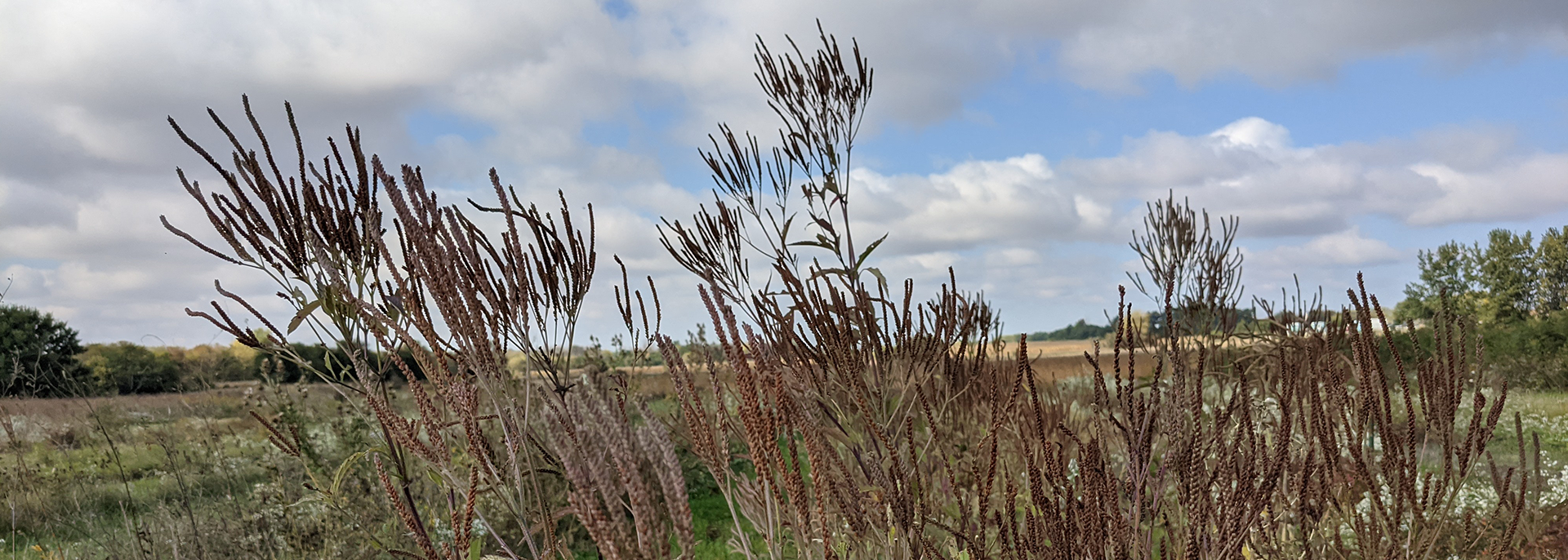
Verbena hastata, L.
Alternate Common Names: blue vervain, simpler’s joy, American blue vervain, American simpler’s joy, wild hyssop
Family: verbena family (Verbenaceae)
Functional Group: forbs (wildflowers)
Description
- Life cycle and growth form
Perennial, short-rhizomatous.
Height: 2-6 ft
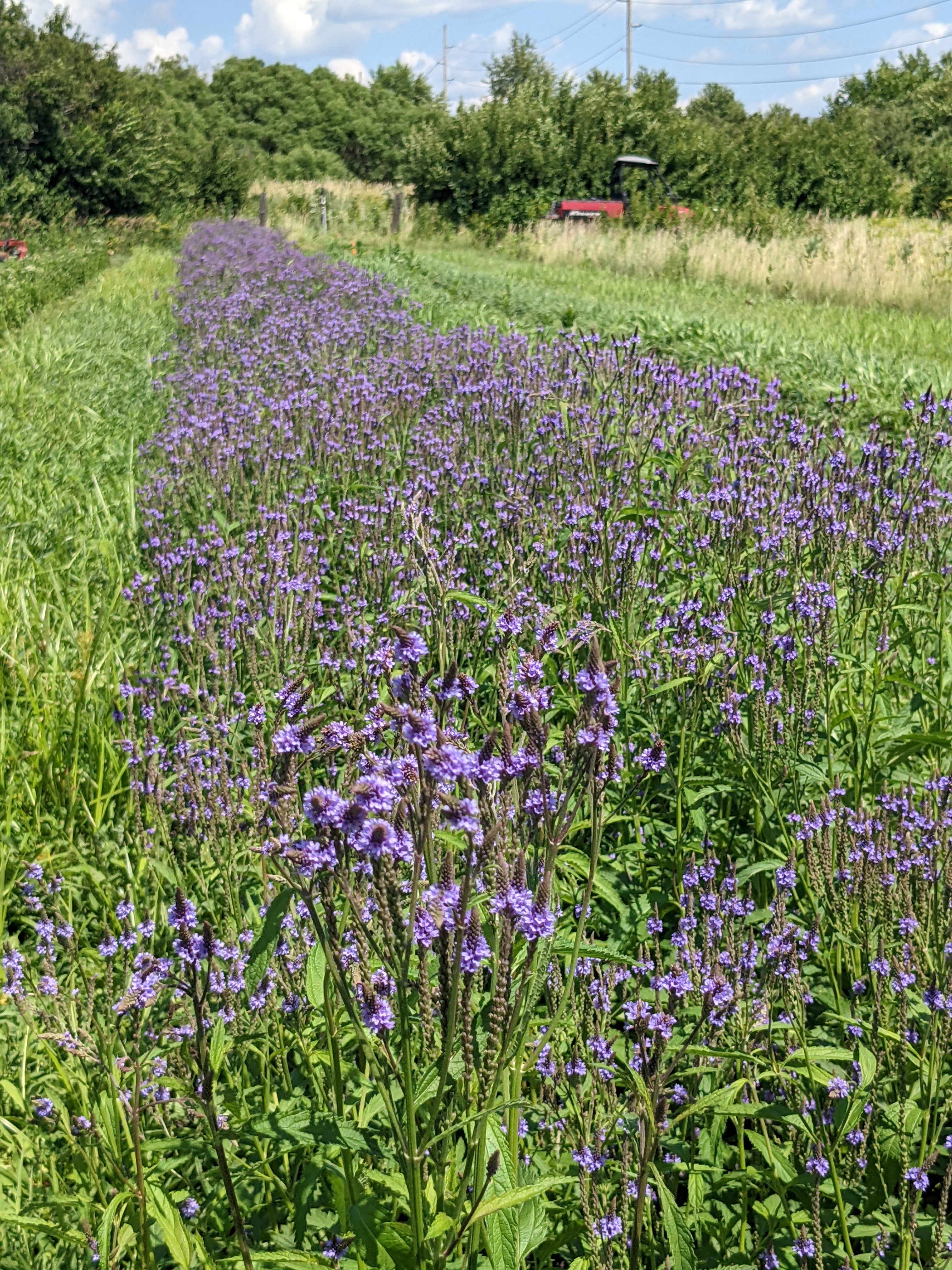
- Leaves and stem
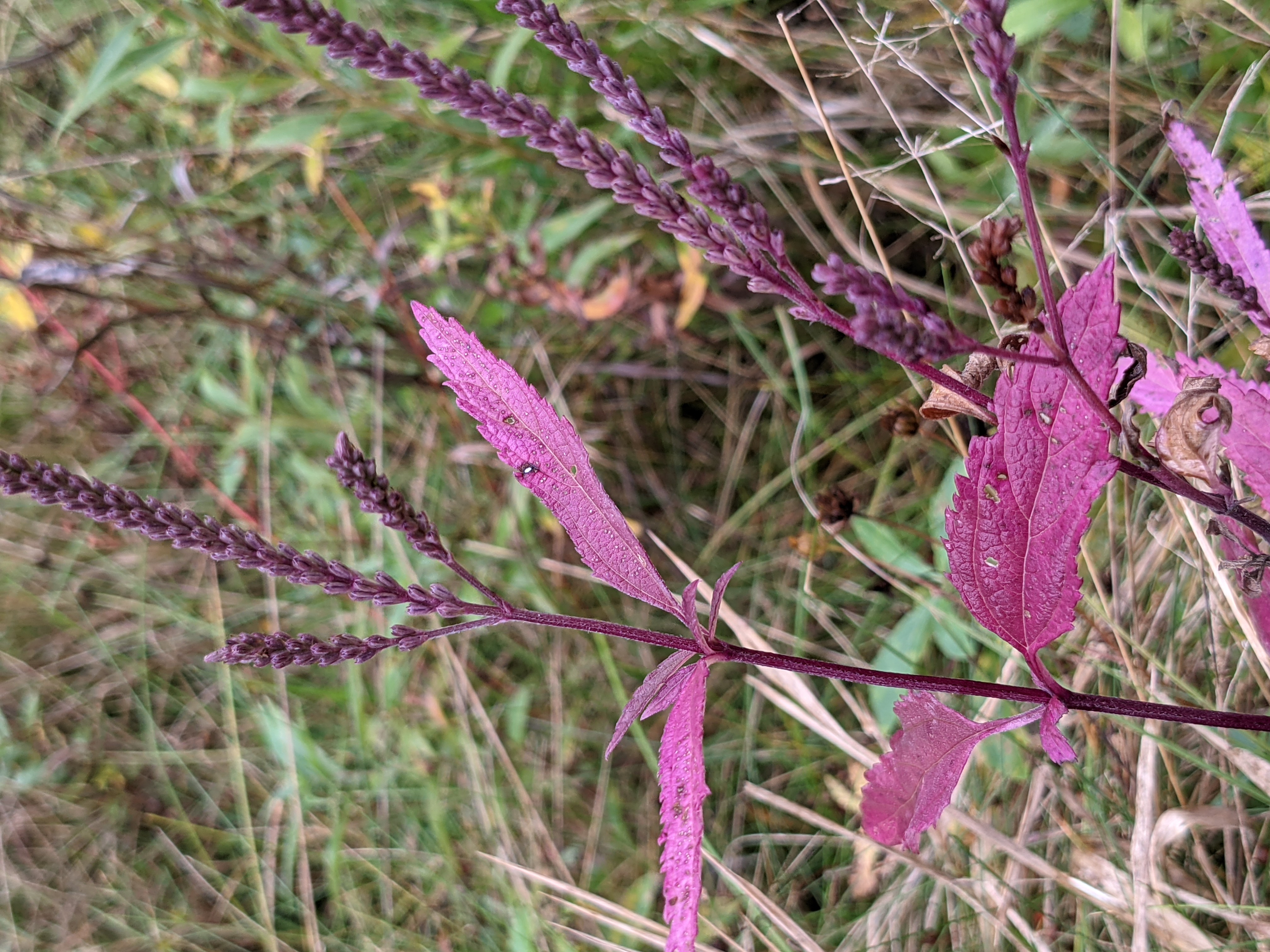
Leaves are opposite, lance-shaped (up to 6 in long and 1 in wide), coarsely toothed, strongly veined above, and usually short-hairy beneath; stems square, grooved, and green to purple, with flattened hairs, often branched in the upper half of the plant.
- Flower, fruit and seedhead
Flower: Individual flowers are blue-purple, ¼ in across, with five expanded lobes (petals) attached to a short tube; flowers are arranged in a branched “candelabra” (panicle) of spikes; spikes elongate through the flowering season as new flowers emerge in whorls (rings) near the tops while seeds (nutlets) mature near their bases.
Fruit/seedhead: Each calyx of fused sepals contains four developing seeds (nutlets); spikes ripen from the bottom up.
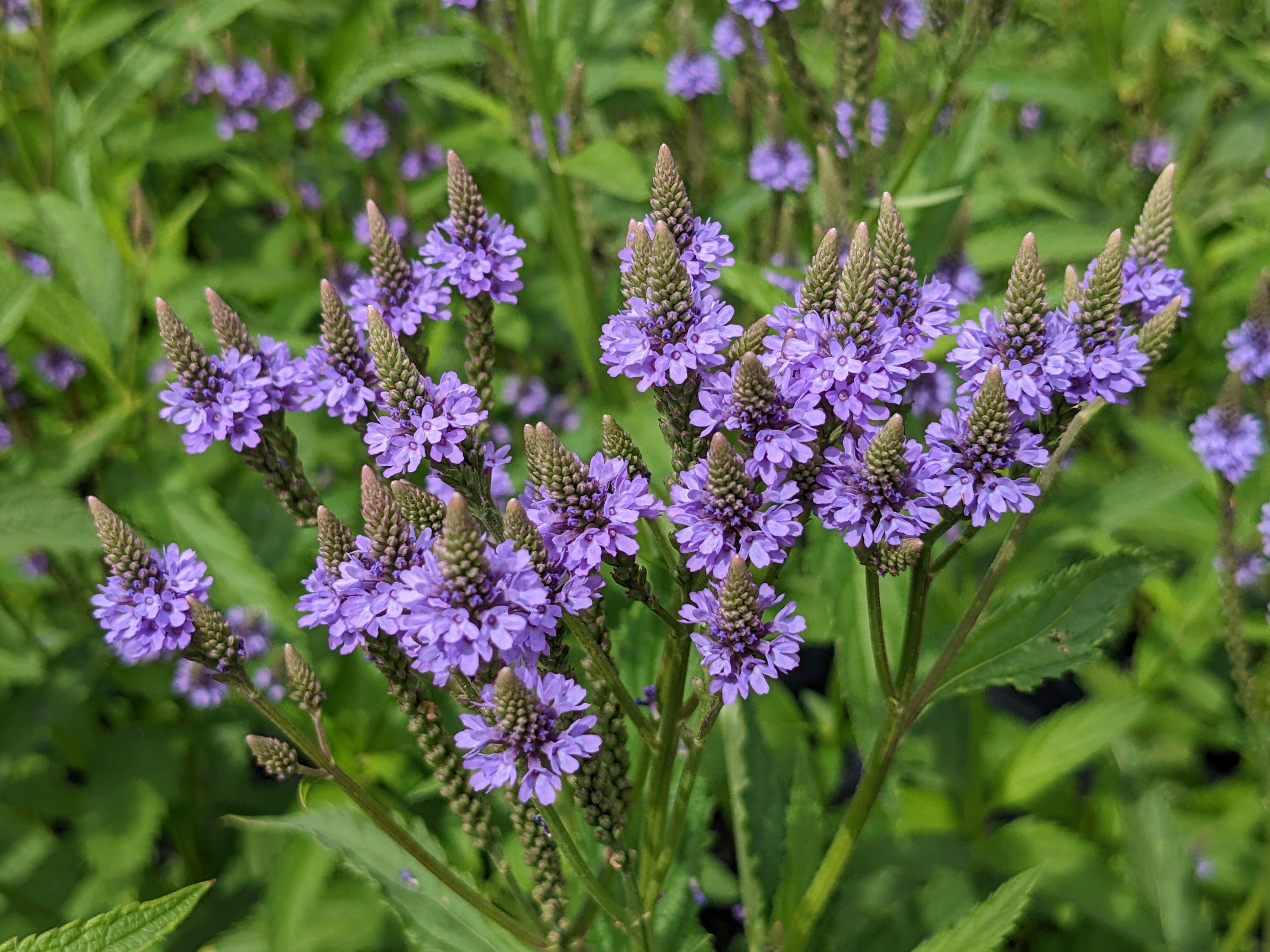
- Seed
Seed characteristics
Seeds per ounce: 93,000 (IA NRCS)
1000 seed weight: 0.23 g (Seed Information Database)
Description: Seed unit is technically a type of dry fruit called a nutlet. Rust-brown nutlets are 2 mm long and approximately 0.5 mm wide.
Typical seed test
PLS: 97%
Purity: 100%
Germination: 13%
Dormancy: 84%
(averages obtained from 5 tests of purchased seed lots)
- Habitat and range
Habitat: Swamp verbena grows best in full sun and moist to wet, organic-rich soils. Plants are typically found in wet places such as wet prairies, sedge meadows, fens, and ditches. Wetland Indicator Status is Facultative Wetland (FACW) for the Midwest. Production fields benefit from irrigation.
Conservation status: Global- G5, secure; North Carolina- S2/S3, imperiled to vulnerable; Wyoming- S3, vulnerable (NatureServe)
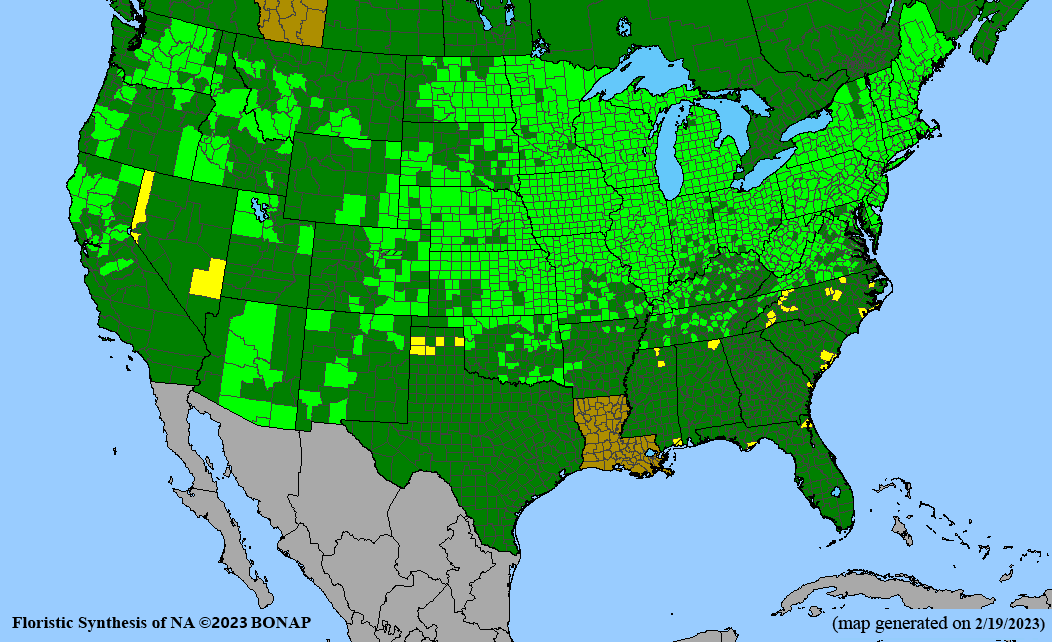
General Comments
Swamp verbena is well suited for planting in moist soils or seasonally wet sites such as roadside ditches. It grows quickly and flowers in the planting year, producing abundant seed that is relatively easy to harvest and clean. Most mammalian herbivores avoid the bitter foliage, hence this species has persisted even in heavily grazed, wet prairie pastures. Swamp verbena has a long flowering period and is visited by diverse species of bees and small butterflies. The seeds are eaten by native sparrows and juncos. Swamp verbena has numerous uses in traditional Native medicine, including as a treatment for digestive and obstetric complaints. Caution: Extracts of this species are known to interfere with prescription medication and can cause vomiting and diarrhea in high doses.
Recommendations for Seed Production
- Establishment for seed production
Direct seeding
We do not have experience direct seeding this species for seed production.
Seeding rate: 0.5 PLS pounds/acre (40 seeds/linear foot)
Row spacing: 30-36 in rows
Seeding time: Dormant (needs 30-90 days cold stratification).
Seeding depth: surface
Weed control: Prepare clean, firm, weed free seedbed prior to seeding.
Greenhouse
Seed pre-treatment: Cold/moist stratification is recommended. Different sources suggest a minimum of 30 days (RNGR) up to 3 months (NRCS Plant Guide). Most northern Iowa accessions showed high rates of germination after 30 day stratification, but a few accessions appeared to have a higher degree of dormancy. In these cases, we saw a second flush of germination after a week of very high temperatures in the greenhouse, more than 2 months after sowing.
Sowing: Sow seed on surface of germination mix (light needed for germination).
Transplanting: Seedlings grow rapidly with fibrous root systems that form firm plugs for transplanting. Plan on sowing seed in greenhouse containers 8-10 weeks before transplanting. If seedlings grow too tall in plug trays, they should be pinched back to adjust the shoot:root ratio.
- Stand management
Hybridization: Maintain separation between fields of swamp verbena and other species in the genus Verbena (e.g., hoary vervain, Verbena stricta) as hybrids readily form.
Weeds: Plastic mulch prevents weed competition in the first year, and tall fast-growing verbena plants are fairly competitive. Holes in the plastic may need to be widened to accommodate rhizomatous spread in the second and subsequent years. Focus weeding or roguing efforts on weeds that could contaminate the seed (i.e., species with small, elongated seed).
Pests: None noted. Bitter foliage deters mammalian herbivores.
Diseases: None noted, though plants appear to be short-lived (2-4 years) in production rows.
Soil moisture: Irrigation is recommended.
- Seed production
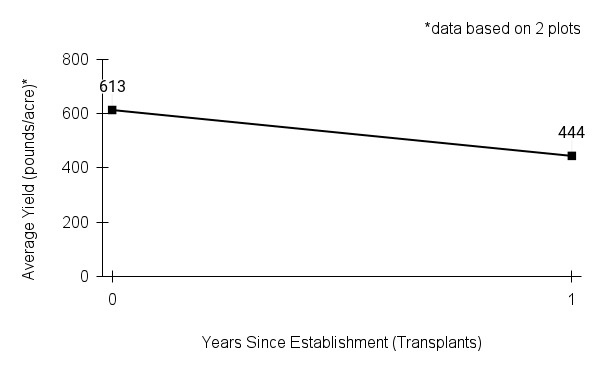 First harvest: In planting year, when grown from transplants.
First harvest: In planting year, when grown from transplants.Yield: 440-610 pounds/acre (based on 2 plots)
Stand life: Estimated 3-4 years, with peak harvest in year one.
Flowering date: late June - September
Seed maturity/Harvest date: mid-September - mid-October
Harvest date range at TPC (2021-2023): Sept 16 - Oct 19
Recommended harvest method: Seed heads turn from green to purple to brown as they mature. Harvest when all, or nearly all, parts of the spikes have turned brown. Some seeds will shatter from lower parts of spikes as the seeds in the upper parts mature, but most seed is retained on the plant. Hand harvest early maturing individuals to preserve genetic diversity, then combine the rest of the plot at peak maturity.
- Seed cleaning and storage
Cleaning process
Hand-collected material: Dry on tarp or in a cloth bag for 2 weeks. Thresh by passing through a stationary combine or by stomping/beating material on the tarp or in a plastic tub. Pass through a ¼ in and ⅛ in mesh to remove sticks before airscreening.
Combined material: Dry for two weeks. Pass through ¼ in and ⅛ in mesh to remove larger sticks (if any) before airscreening.
Note: Airscreening one-two times results in a very pure product.
Seed storage
cool/dry (orthodox)
Released Germplasm
Source Identified material: Natural Selections/Iowa Ecotype Zone NI
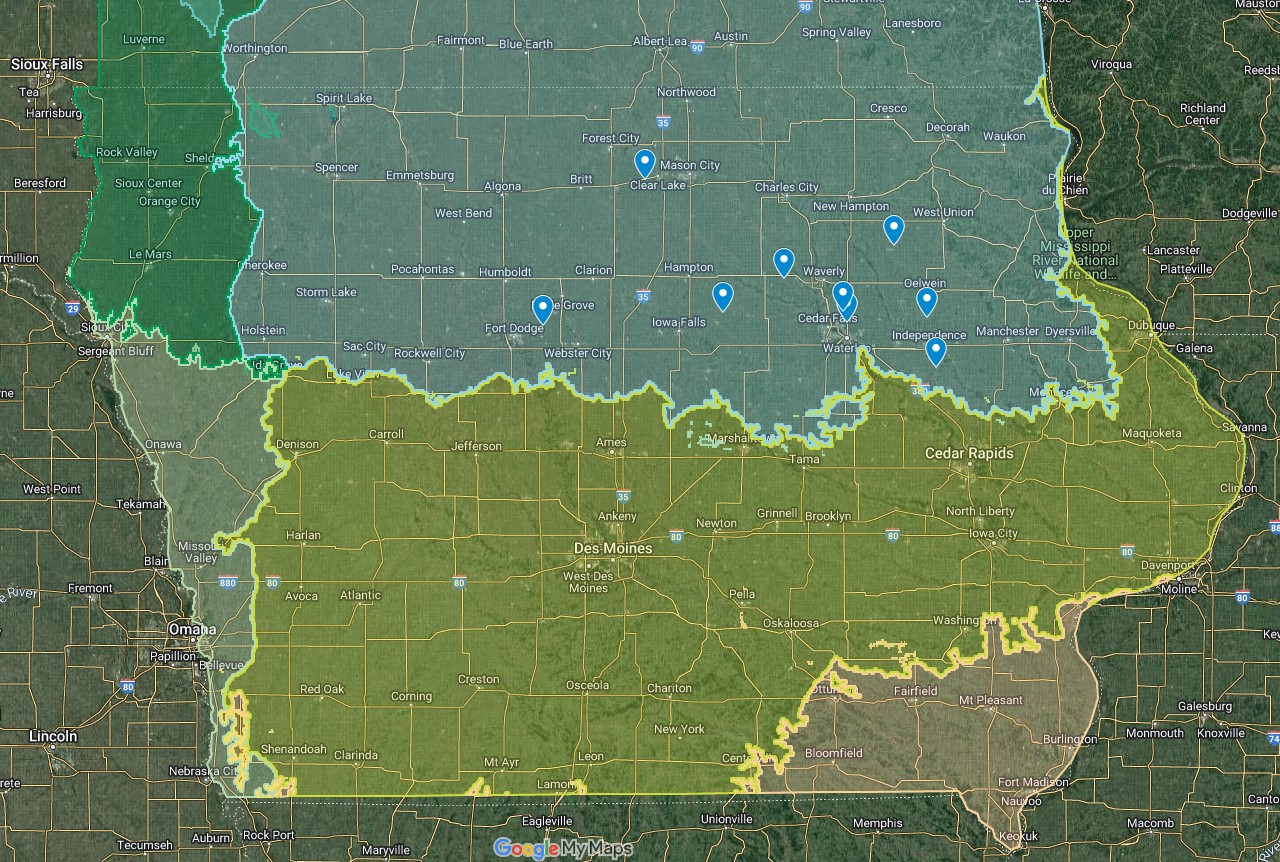
- References
Chayka, Katy. (n.d.). Verbena hastata (Blue Vervain). Minnesota Wildflowers. https://www.minnesotawildflowers.info/flower/blue-vervain
Hilty, J. (2019). Blue vervain - Verbena hastata. Illinois Wildflowers. https://www.illinoiswildflowers.info/wetland/plants/bl_vervain.htm
Kartesz, J.T., The Biota of North America Program (BONAP). 2023. North American Plant Atlas. (http://bonap.net/napa). Chapel Hill, N.C. [maps generated from Kartesz, J.T. 2023. Floristic Synthesis of North America, Version 1.0. Biota of North America Program (BONAP). (in press)]
Kirk, S. and S.Belt. (2010). Plant fact sheet for blue vervain (Verbena hastata). USDA-Natural Resources Conservation Service, Norman A. Berg National Plant Materials Center. Beltsville, MD 20705.
Moerman, D. (2003). Native American ethnobotany database. BRIT. http://naeb.brit.org/
NatureServe. 2024. NatureServe Network Biodiversity Location Data accessed through NatureServe Explorer [web application]. NatureServe, Arlington, Virginia. Available https://explorer.natureserve.org/. (Accessed: February 28, 2024).
Society for Ecological Restoration, International Network for Seed Based Restoration and Royal Botanic Gardens Kew. (2023) Seed Information Database (SID). Available from: https://ser-sid.org/ (February 2023)
USDA-NRCS. (2022). Iowa NRCS Conservation Cover Native Seeding Calculator. https://www.nrcs.usda.gov/wps/cmis_proxy/https/ecm.nrcs.usda.gov%3A443/fncmis/resources/WEBP/ContentStream/idd_D0038083-0000-C716-9B80-F4A34594D552/0/327_IA_OTH_Conservation_Cover-Native_Seeding_Calculator_2022.xlsm
USDA NRCS National Plant Data Team. (n.d.). Verbena hastata L. USDA plants database. https://plants.usda.gov/home/plantProfile?symbol=VEHA2
Species Guide Updated 3/5/2024
white sagebrush
white sagebrush parkecag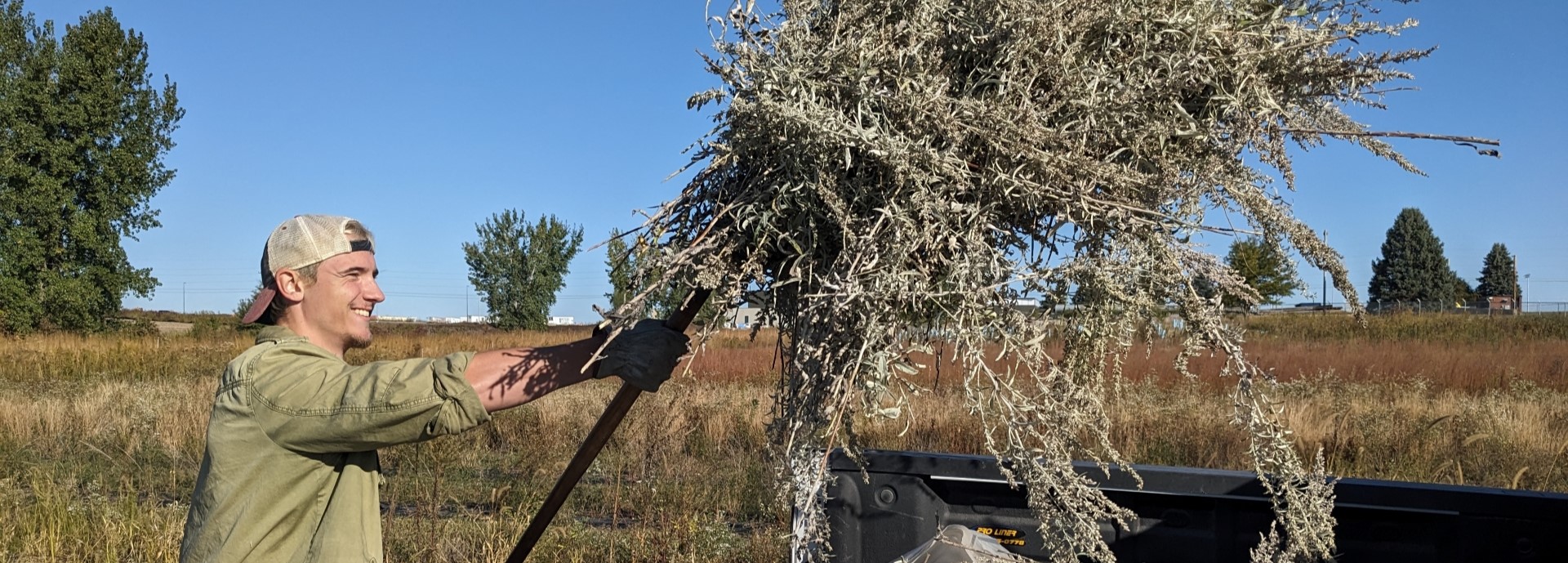
Artemisia ludoviciana, Nutt.
Alternate Common Names: white sage, prairie sage, western mugwort, Louisiana sage, prairie wormwood, cudweed, mugwort, dark-leaved mugwort, sagewort, western sage, sailor’s tobacco, sagebrush
Scientific Synonym: Artemisia vulgaris var. ludoviciana (Nuttall) Kuntze
Functional Group: forbs (wildflowers)
Family: aster or sunflower family (Asteraceae)
Description
- Life cycle and growth form
Perennial, spreading by rhizomes to form large colonies that exclude some other plants.
Height: 1-3 ft
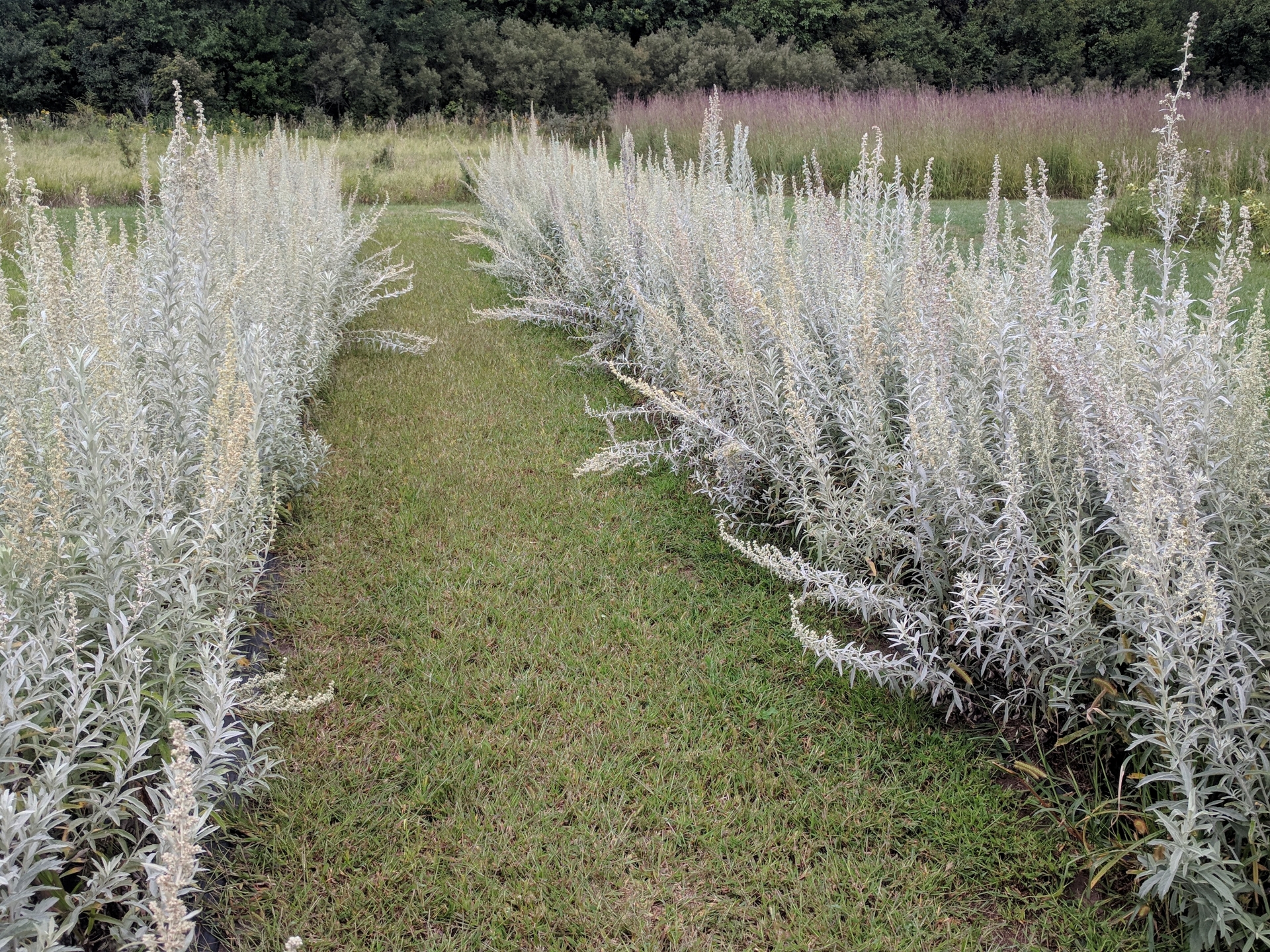
- Leaves and stem
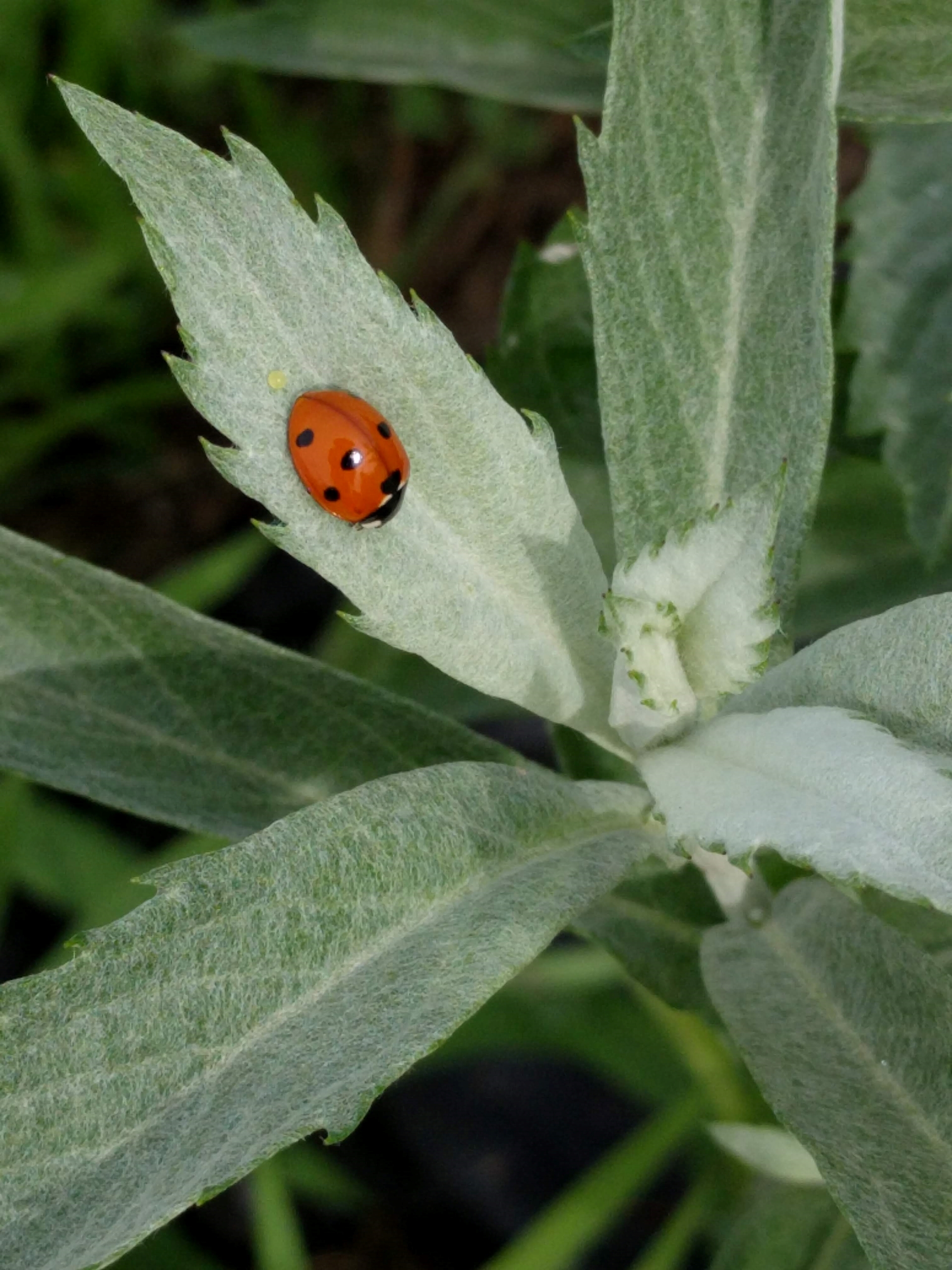
Alternate leaves, aromatic when crushed, of variable shape but mostly narrow, elongated ellipses up to 1 in wide and 3.5 (occasionally up to 5) in long, short-stalked or sessile, with silvery-white hairs on leaves and stems giving them a felt-like texture; stems may be branched or unbranched.
- Flower, fruit and seedhead
Flower: Individual florets are inconspicuous within silvery, barrel-shaped, ⅛ in heads arranged in clusters in upper leaf axils or in spike-like to open, branched arrays up to 17 in in length; at full flowering, yellow stamens and minute, yellow to reddish corollas may be visible; wind-pollinated.
Fruit/seedhead: Roughly cylindrical in shape, approximately ⅛ in long, pappus is absent, heads open to release seed (achenes) when mature.
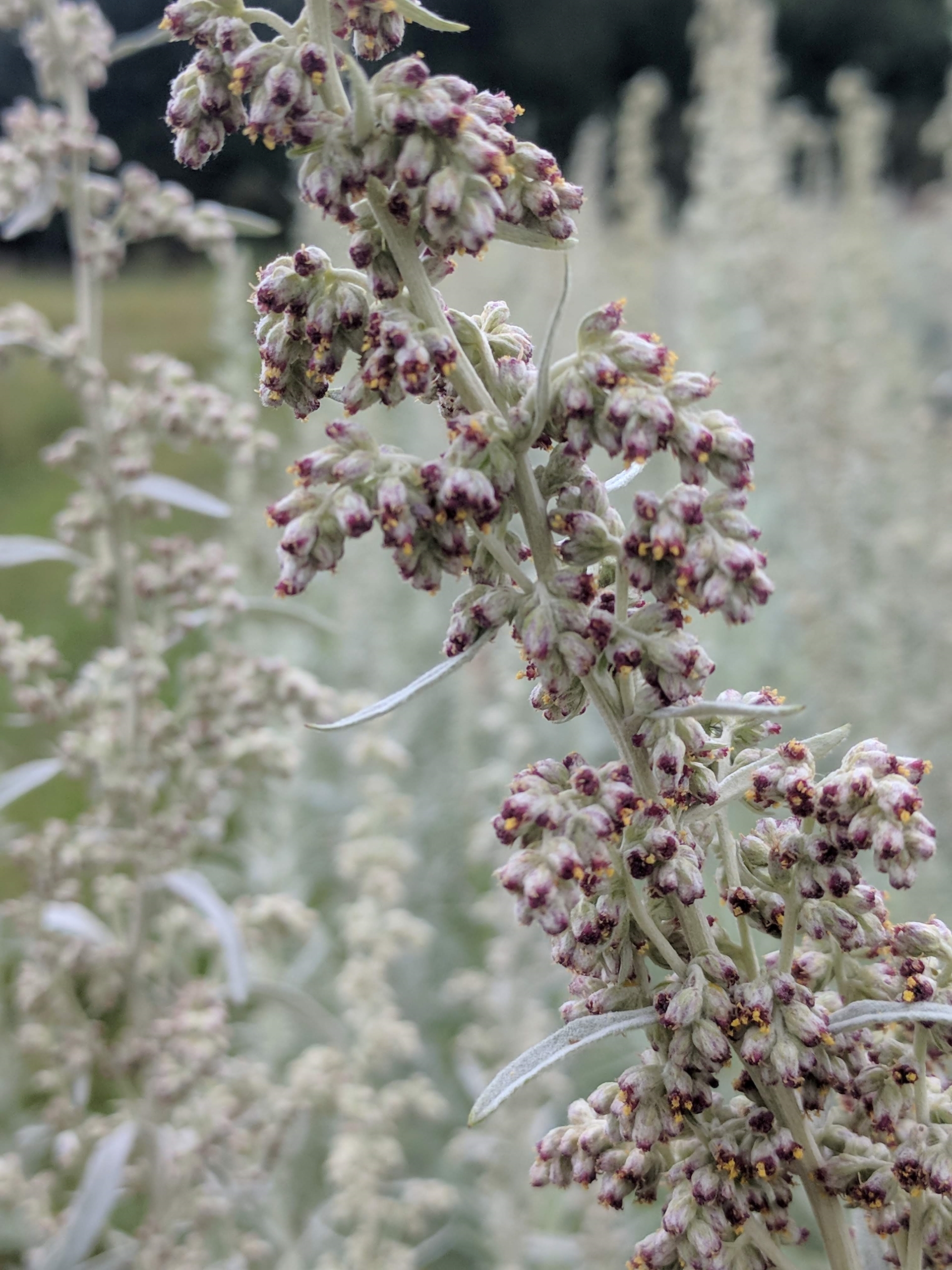
- Seed
Seed characteristics
Seeds per ounce: 250,000 (IA NRCS)
1000 seed weight: 0.11 g (Seed Information Database)
Description: Cypsela (achene), elliptical in outline, about 0.5 mm long, light grayish-brown, without hairs or attached fluff (pappus).
Typical seed test
PLS: 84% (n = 11)
Purity: 92% (n = 11)
Germination: 30% (n = 10)
Dormancy: 57% (n = 11)
(averages obtained from n tests of purchased seed lots)
- Habitat and range
Habitat: Full sun, mesic to dry, sandy, or rocky prairies, roadsides. Wetland Indicator Status is Obligate Upland (UPL) for the Midwest.
Conservation status: Global- G5, secure; Michigan- S1, critically imperiled (NatureServe)
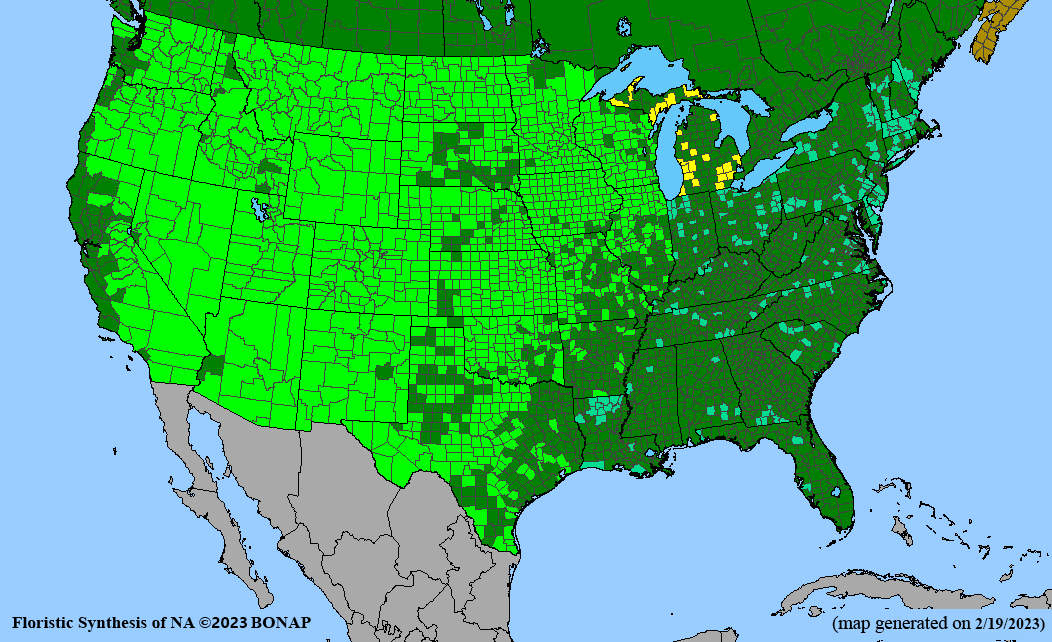
General Comments
All above ground parts of the plant have a distinctive sage-like fragrance when rubbed or crushed. This species has traditional medicinal and ceremonial uses among numerous Native American tribes. Because it is wind-pollinated, white sagebrush is not considered a resource for pollinators, though it is a larval host for at least one species of moth caterpillar, Phaneta argenticostana. Its mode of vegetative spread produces a dense network of rhizomes and roots that function in erosion control.
Recommendations for Seed Production
- Establishment for seed production
Direct seeding
We do not have experience direct-seeding this species for seed production.
Greenhouse
Seed pre-treatment: 60 days cold-moist stratification (fine silica sand)
Sowing: Surface (seed is small and must not be buried too deeply); seed directly onto plug flats or start seedlings in germination trays and dibble into plugs when seedlings have first true leaves; start in greenhouse about 8-10 weeks prior to transplanting.
Transplanting: Harden off seedlings 1-2 weeks prior to transplanting; transplant with 12 in plant spacing in plasticulture plots or into bare soil in 36 in rows, after danger of frost; cut or remove plastic after the first full growing season to allow plants to spread by rhizomes.
Note: Also readily propagated through division or rhizome cuttings (see NRCS Plant Guide referenced below).
- Stand management
Weeds: Few issues as dense, young colonies tend to exclude weeds; other small-seeded members of the aster family (e.g., frost aster, Symphyotrichum pilosum, and marestail, Erigeron canadensis) could contaminate seed and should be rogued out before harvest.
Pests: None noted.
Diseases: None noted.
- Seed production
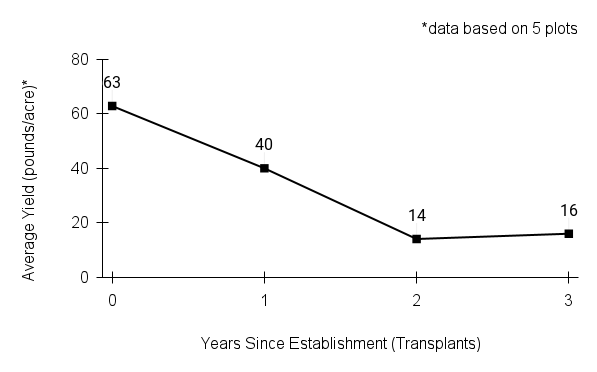 First harvest: In fall of first year when started from greenhouse transplants.
First harvest: In fall of first year when started from greenhouse transplants.Yield: 15-60 pounds/acre (based on 5 plots)
Stand life: Peak seed production in the first two years, then declining.
Flowering date: late August - September
Seed maturity: Mid-October in northeast Iowa; gauge maturity by sampling heads from several plants and crushing to reveal developing seeds (a hand lens is helpful); mature seed will have a grayish-brown color and separate easily from the receptacle; watch for heads to open and release seed when mature; seed shatters easily and will be lost if harvest delayed.
Harvest date range at TPC (2005-2022): Oct 19 - 24
Recommended harvest method: Combine at maturity or cut/swath stems when about 10% of plants in the plot have open seed heads and lay to dry in shed, then run through stationary combine.
- Seed cleaning and storage
Cleaning process: Brush (Westrup LA-H) with stiff bristles and #14 screen mantle to release seed from heads, use minimal vacuum; airscreen several times.
Seed storage: cool/dry (orthodox)
Released Germplasm
Source Identified material: Natural Selections/Iowa Ecotype Project Zones 1, 2, and 3
NRCS release: ‘Summit’ Artemisia ludoviciana
Cultivated varieties: Several named cultivars are available in the horticultural trade.
- References
Chayka, K. (n.d.). Artemisia ludoviciana (white sage). Minnesota Wildflowers. https://www.minnesotawildflowers.info/flower/white-sage
Christiansen, P., & Muller, M. (1999). White sage - Artemisia ludoviciana Nutt. Prairie Plants of Iowa - Artemisia ludoviciana Nutt. https://uipress.lib.uiowa.edu/ppi/display.php?record=Artemisia_ludoviciana
Cochrane, T. S., Elliot, K., & Lipke, C. S. (2014). White Sage. In Prairie Plants of the University of Wisconsin, Madison Arboretum (3rd ed., p. 68). University of Wisconsin-Madison Arboretum.
Flora of North America Editorial Committee. 2006a. Flora of North America North of Mexico. Vol. 19. Magnoliophyta: Asteridae, part 6: Asteraceae, part 1. Oxford University Press, New York. xxiv + 579 pp.
Hilty, J. (2020). White Sage - Artemisia ludoviciana. Illinois Wildflowers. https://www.illinoiswildflowers.info/prairie/plantx/white_sagex.htm
Kartesz, J.T., The Biota of North America Program (BONAP). 2023. North American Plant Atlas. (http://bonap.net/napa). Chapel Hill, N.C. [maps generated from Kartesz, J.T. 2023. Floristic Synthesis of North America, Version 1.0. Biota of North America Program (BONAP). (in press)]
NatureServe. 2024. NatureServe Network Biodiversity Location Data accessed through NatureServe Explorer [web application]. NatureServe, Arlington, Virginia. Available https://explorer.natureserve.org/. (Accessed: February 16, 2024).
Runkel, S. T., & Roosa, D. M. (2009). Prairie sage. In Wildflowers of the Tallgrass Prairie: The Upper Midwest (Second, p. 237). University of Iowa Press.
Shultz, Leila M. (2020, November 6). Artemisia ludoviciana Nuttall. Flora of North America. http://floranorthamerica.org/Artemisia_ludoviciana
Society for Ecological Restoration, International Network for Seed Based Restoration and Royal Botanic Gardens Kew. (2023) Seed Information Database (SID). Available from: https://ser-sid.org/ (February 2023)
Stevens, M., & Roberts, W. (2000). Plant Guide - USDA Plants Database - White Sage, Artemisia ludoviciana Nutt. https://plants.usda.gov/DocumentLibrary/plantguide/pdf/cs_arlu.pdf
Shultz, Leila M. (2020, November 6). Artemisia ludoviciana Nuttall. Flora of North America. http://floranorthamerica.org/Artemisia_ludoviciana
Species Guide Updated 3/5/2024
Legumes
Legumes sagemThe Species Production Guides for legumes provide specific information about growing each of these species for seed production.
Scroll the list (alphabetized by scientific name) or press ctrl-f (or command-f) to search for any name in this page.
A printable file (pdf) is also provided on each species page for those needing a print version.
This section is a work in progress. We will continue to add new species guides as they are completed.
Amorpha canescens / leadplant
Astragalus canadensis / Canada milkvetch
Baptisia alba / white wild indigo
Baptisia bracteata / longbract wild indigo
Dalea purpurea / purple prairie clover
Desmodium canadense / showy ticktrefoil
Desmodium illinoense / Illinois ticktrefoil
Glycyrrhiza lepidota / American licorice
- Lespedeza capitata / roundhead lespedeza
Warm Season Grasses
Warm Season Grasses sagemThe Species Production Guides for warm season grasses provide specific information about growing each of these species for seed production.
Scroll the list (alphabetized by scientific name) or press ctrl-f (or command-f) to search for any name in this page.
A printable file (pdf) is also provided on each species page for those needing a print version.
This section is a work in progress. We will continue to add new species guides as they are completed.
Andropogon gerardii / big bluestem
Bouteloua curtipendula / sideoats grama
Muhlenbergia racemosa / marsh muhly
Panicum virgatum / switchgrass
Schizachyrium scoparium / little bluestem
Sorghastrum nutans / Indiangrass
Spartina pectinata / prairie cordgrass
Sporobolus compositus / composite dropseed
Sporobolus heterolepis / prairie dropseed
Cool Season Grasses
Cool Season Grasses sagemThe Species Production Guides for cool season grasses provide specific information about growing each of these species for seed production.
A printable file (pdf) is also provided on each species page for those needing a print version.
This section is a work in progress. We will continue to add new species guides as they are completed.
Calamagrostis canadensis / bluejoint
Elymus canadensis / Canada wildrye
Elymus villosus / hairy wildrye
Elymus virginicus / Virginia wildrye
Festuca paradoxa / clustered fescue
Glyceria striata / fowl mannagrass
Hesperostipa spartea / porcupinegrass
Koeleria macrantha / prairie Junegrass
Woody Species
Woody Species sagemThe Species Production Guides for woody species (prairie shrubs) provide specific information about growing each of these species for seed production.
A printable file (pdf) is also provided on each species page for those needing a print version.
This section is a work in progress. We will continue to add new species guides as they are completed.
Rosa arkansana / prairie rose
- Spiraea alba / white meadowsweet
false indigo bush
false indigo bush sagem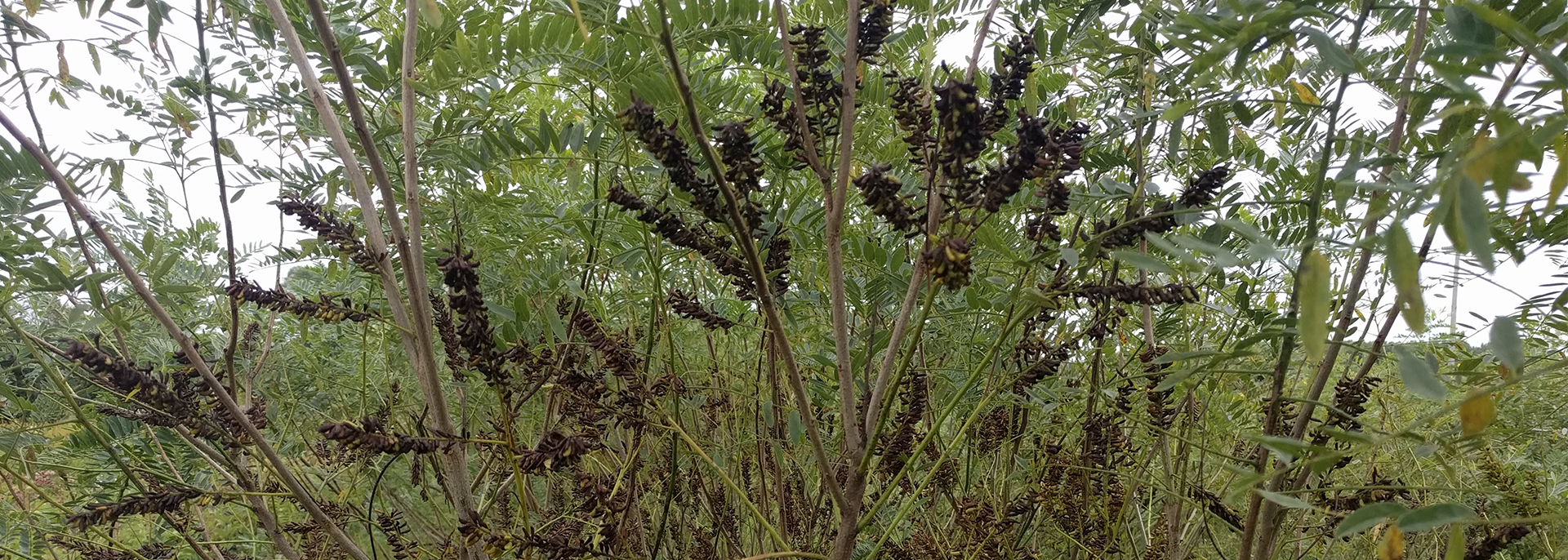
Amorpha fruticosa, L.
Alternate Common Names: false indigo, bastard indigo, river locust, wild indigo, indigo bush, desert false indigo
Scientific Synonyms: Amorpha angustifolia (Pursh) Boynt., Amorpha bushii Rydb., Amorpha croceolanata P.W. Watson, Amorpha curtissii Rydb., Amorpha dewinkeleri Small, Amorpha occidentalis Abrams, Amorpha tennesseensis Shuttlw. ex Kunze, Amorpha virgata Small
Family: legume or pea family (Fabaceae (Leguminosae))
Functional Group: woody species, shrubs
Description
- Life cycle and growth form
Fast-growing, long-lived perennial shrub, spreads by self seeding and suckering, flowers on second-year wood.
Height: 3 -12 ft
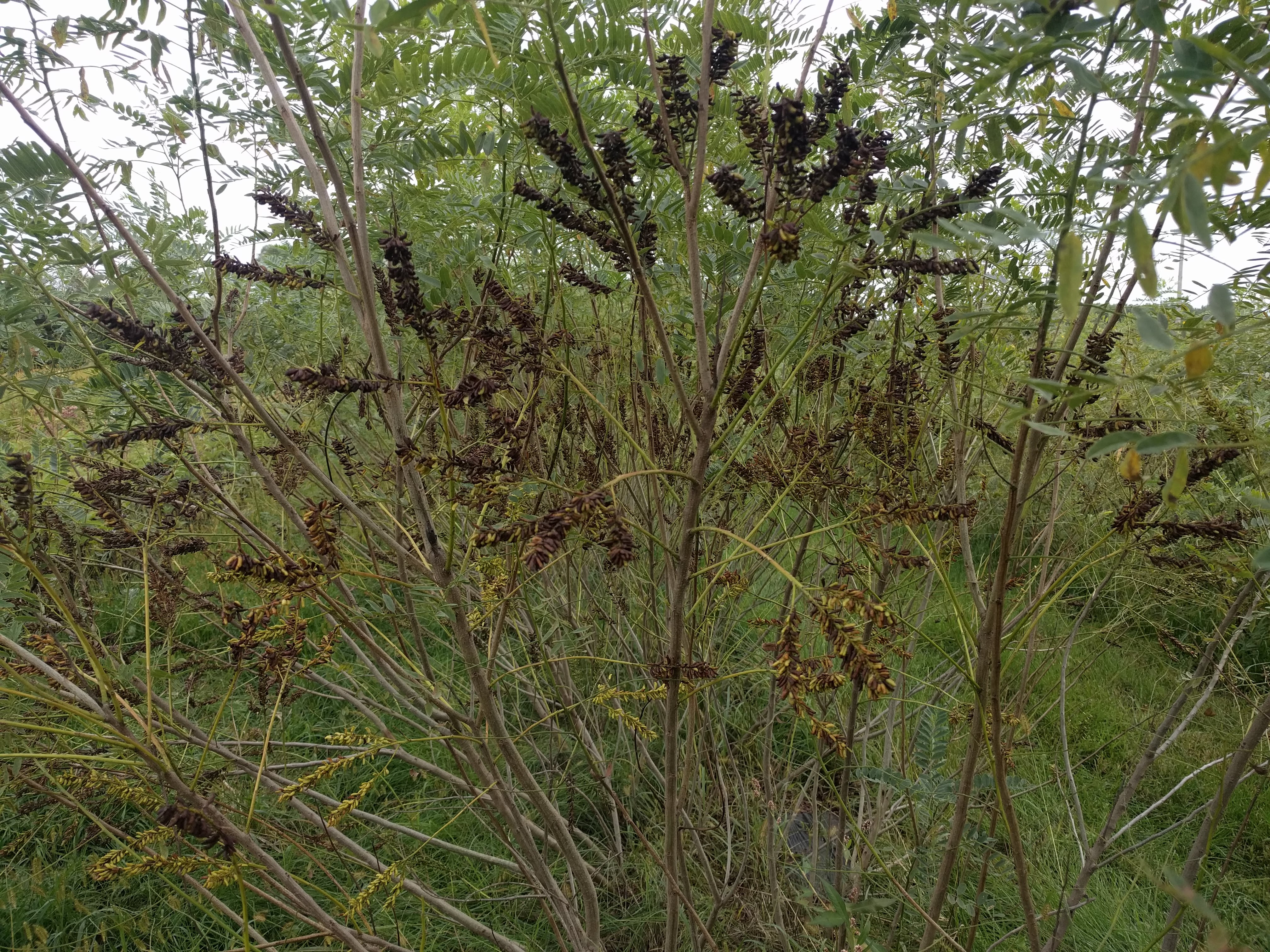
- Leaves and stem
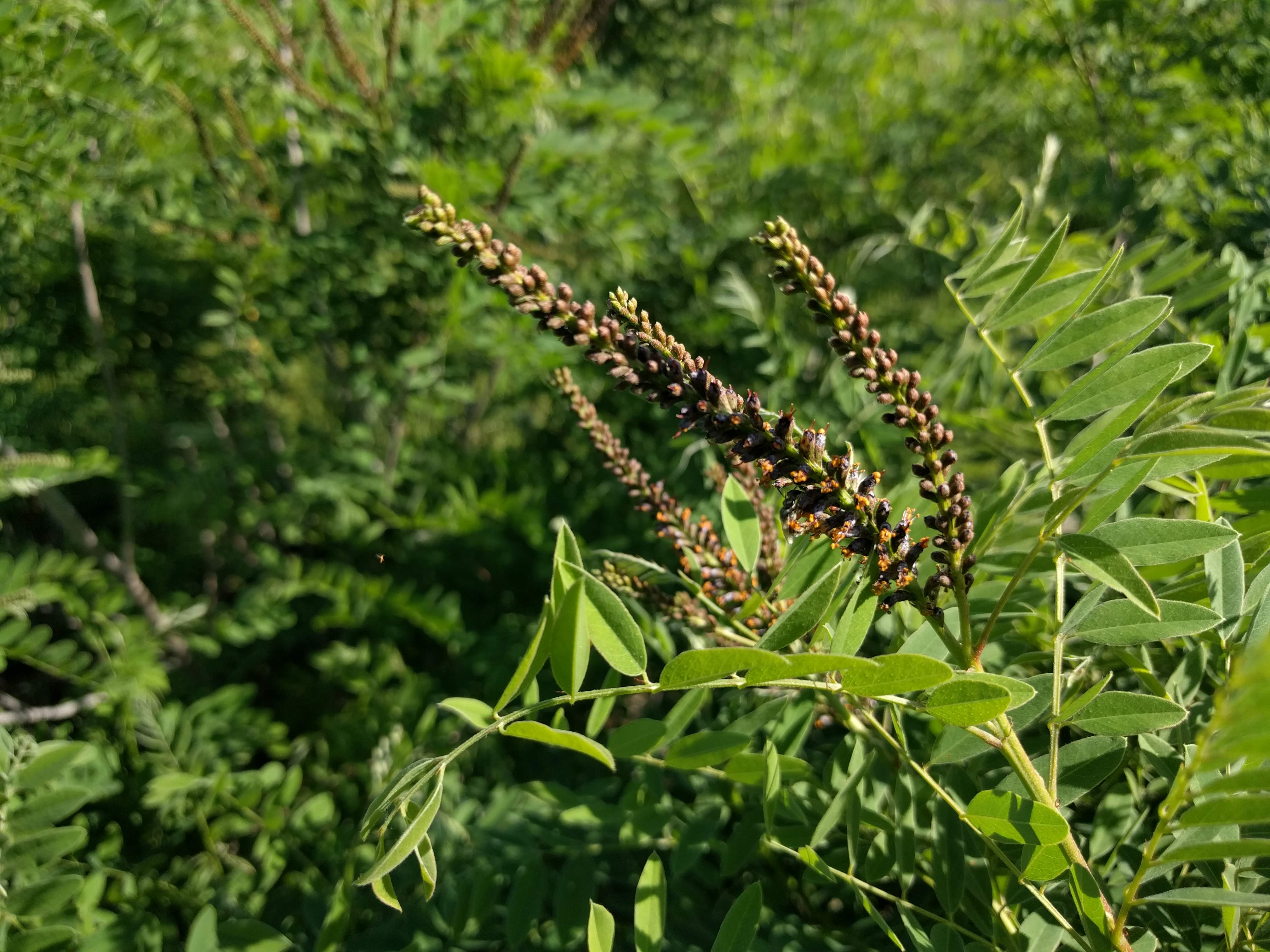
Leaves 4-8 in long, pinnately compound with 11-25 oblong leaflets, alternate arrangement; multi-stemmed shrubs with smooth, gray, woody stems, forming thickets of spreading, cane-like stems that begin sparsely branching at about 3-4 ft in height.
- Flower, fruit and seedhead
Flower: Irregular, with one slightly enlarged petal (unlike the typical legume flower), deep purple corolla ⅓ in long, with bright orange stamens that stick out prominently; flowers tightly packed in spikelike racemes 3-6 in long (each looking like a tapered bottle brush).
Fruit/seedhead: ¼ in long, tough, leathery seed pods with prominent oil glands, each pod with one seed (sometimes two).
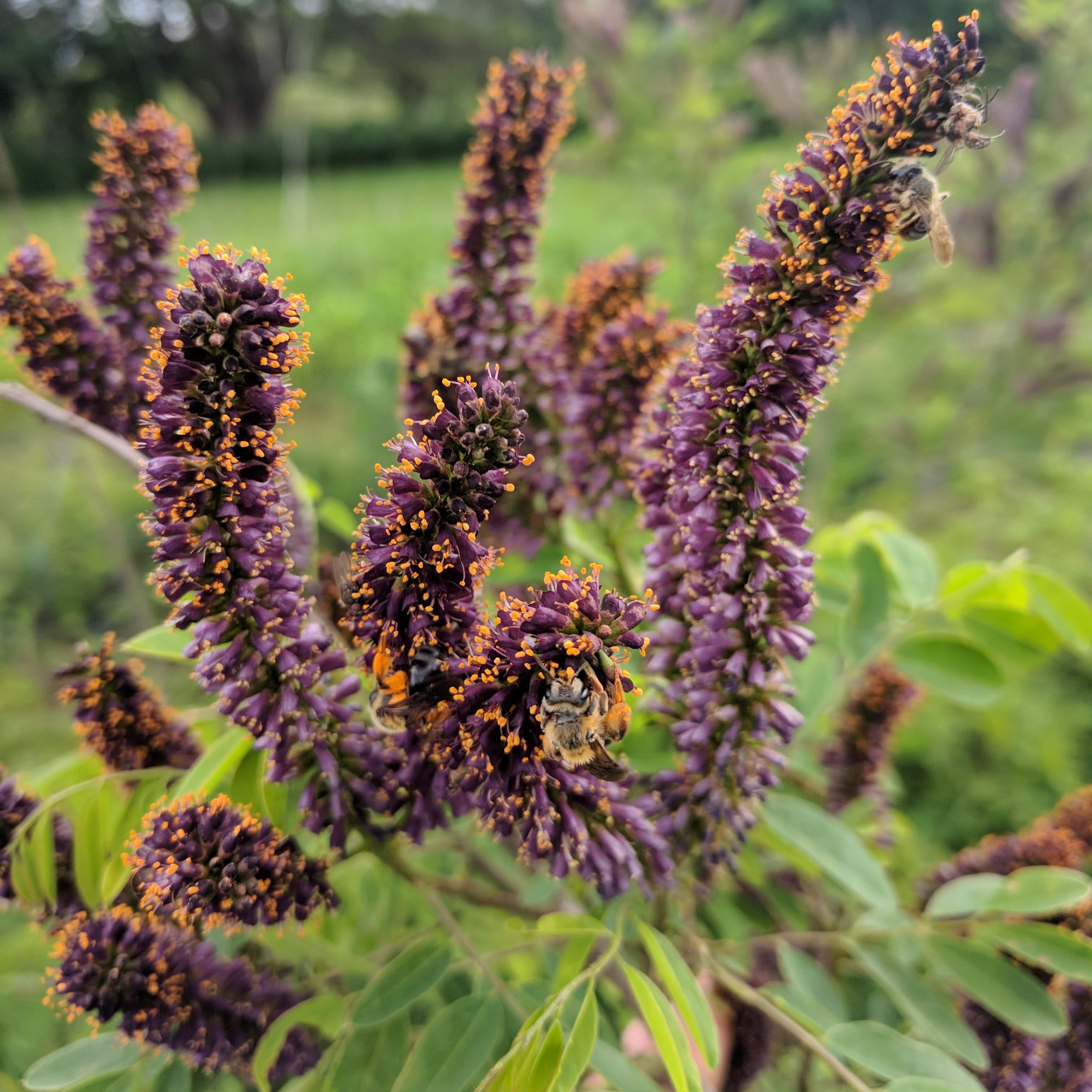
- Seed
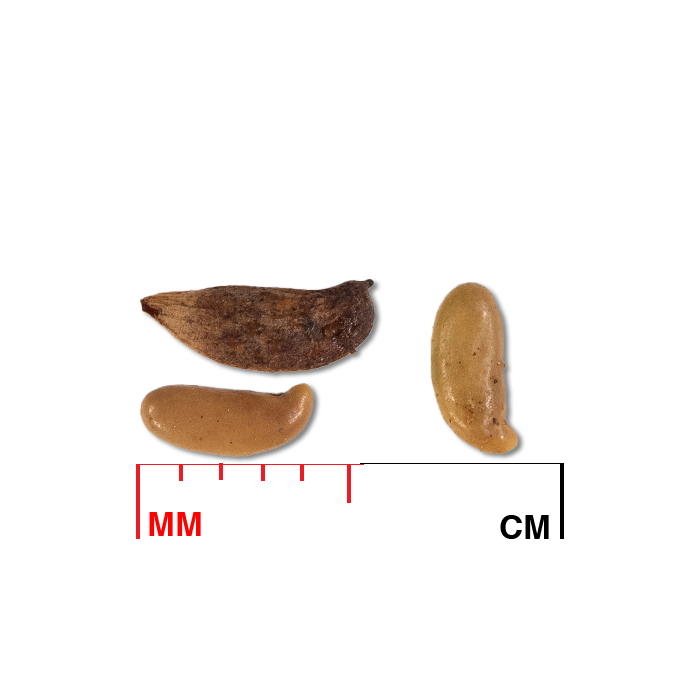
Note: Seed produced from unirrigated rows at the TPC had much lower viability (PLS: 16-23%, not included in the typical seed test above).
Seed characteristics
Seeds per ounce: 3,700 (IA NRCS)
Seeds per pound: 77,000 (Woody Plant Seed Manual)
1000 seed weight: 7.76 g (Seed Information Database)
Description: Glossy, light-brown seed resembles a small bean, 4 mm long and 1.5 mm wide, with a slightly hooked end.
Typical seed test
PLS: 90-94%
Purity: 98%
Germination: 31-92%
Dormancy: 0-65%
(based on tests of one lot of commercial seed and one lot produced at the TPC)
- Habitat and range
Habitat: Moist soil; partial to full sun; along river and stream banks, islands, ditches, wet prairies, and seeps; designated a Facultative Wetland species for the Midwest by the USDA. Plants survive for many years in mesic soils without irrigation, but seed yield (and possibly viability) increases with irrigation.
Conservation status: Global- G5, secure; Wyoming- S2, imperiled; West Virginia- S2/S3, imperiled to vulnerable (NatureServe); Listed as a noxious weed or invasive plant in Maine, Rhode Island, New Jersey, New Hampshire, Oregon, and Washington.
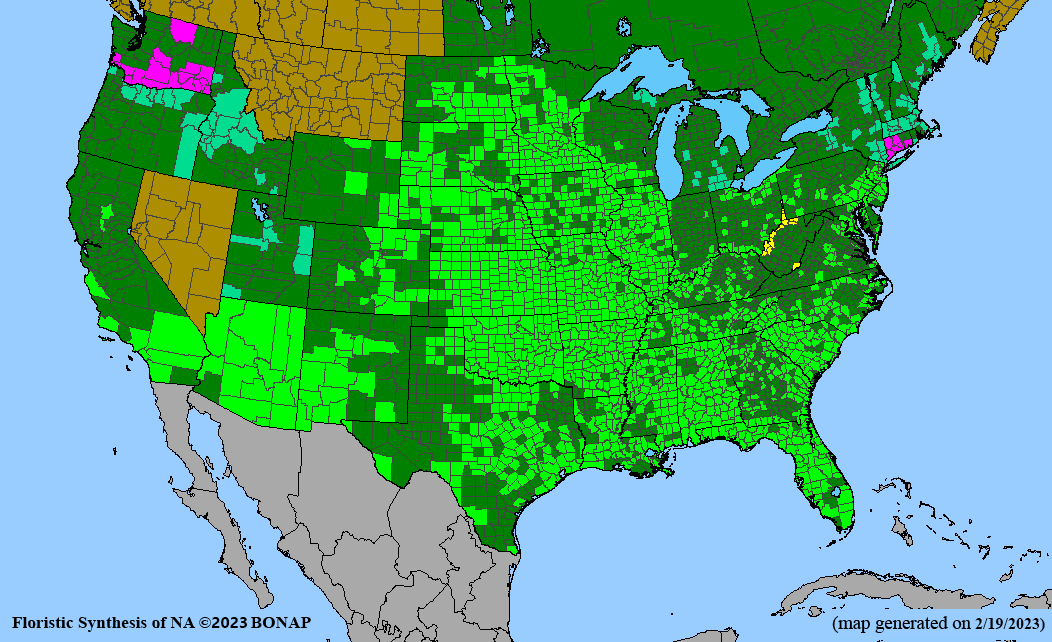
General Comments
The dark purple flower spikes with brilliant orange pollen-bearing stamens attract numerous species of native bees in great abundance, along with skippers, other butterflies, and moths. The foliage and pods, when crushed, have an unusual scent, reminiscent of cumin, citrus, and creosote. Aromatic compounds from this species have been investigated as medicines, natural insecticides and insect repellents. The foliage is eaten by larvae of silver-spotted skipper and southern dogface butterflies, larvae of amorpha borer beetles live within the stems and roots, and tiny bruchid beetles feed on the seeds. The long, weakly branched stems have been used in arrow-making and as a foundation for bedding materials by Native peoples. The functions this species provides in restoration include erosion control, streambank stabilization, wildlife cover, and windbreaks, and it shows potential for use in living snow fences.
Recommendations for Seed Production
- Establishment for seed production
Direct seeding
We do not have experience with direct seeding this species for seed production. Widely spaced rows (6 ft or more) are recommended.
Greenhouse
Seed pre-treatment: Start seed pretreatment about 3-4 months before outplanting. Mechanical or chemical scarification is recommended as these seeds have physical dormancy, followed by 10-14 days cold/moist stratification (40°F).
Sowing: Cover seed lightly (¼ in depth) with potting mix; adding a layer of perlite or chick grit to the surface of the soil may help prevent damping off.
Transplanting: Seedlings are ready for transplanting when roots have reached the bottom of the plug and are well-branched, creating a firm plug. Harden off outdoors, then transplant into plasticulture rows with drip irrigation, 2-3 plants per linear foot.
- Stand management
Weeds: Plastic mulch controls weeds in year one. Shrubs grow vigorously and shade out most weeds.
Pests: In very snowy winters, rabbits feed on bark and may girdle stems. Shrubs will resprout but flowering and seed set will be delayed for a year. Deer occasionally browse the tops of plants. Some native insects feed on foliage or within stems/roots, but not at densities that cause production issues. Bruchid beetles feed on developing seeds within pods and can reach significant densities. However, seed yield is still high in “good years” and when rows are irrigated.
Diseases: An unidentified rust fungus causes leaves to appear distorted in some years.
Note: Rows can be cut back to the ground in the dormant season if plants have become too lanky for efficient harvesting. Note that this shrub species does not flower or set seed on first year growth.
- Seed production
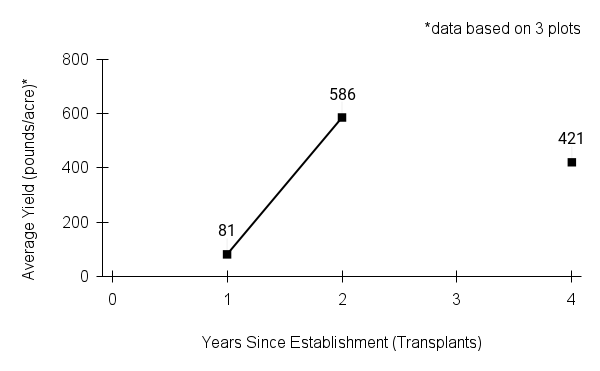 First harvest: Plants flower and set seed one year after transplanting.
First harvest: Plants flower and set seed one year after transplanting.Yield: 80-580 pounds/acre (based on 3 plots)
Stand life: More than 10 years (estimated) for these long-lived shrubs.
Flowering date: June
Seed maturity: October
Harvest date range at TPC (2018-2021): Oct 17 - 31
Recommended harvest method: Strip pods from stalks by hand (wear sturdy gloves). We have not attempted to combine this species due to the woody stems. A more efficient approach might be to cut the fruiting stems onto tarps using a hedge trimmer, then run the material through a stationary combine.
- Seed cleaning and storage
Cleaning process: Pass hand-collected pods through a coarse screen (¼ to ½ inch hardware cloth) to remove sticks. Run through a brush machine with canvas beater bars. Seed pods have oil glands (visible under low magnification) and become very sticky when brushed. Spread oily material on a tarp and dry with a fan for a few days. Material may need to be brushed a second time after drying and before airscreening.
Seed storage: Cool/dry (orthodox) - seed retains viability for 3-5 years at room temperature (Woody Plant Seed Manual).
Released Germplasm
Source Identified material: Natural Selections/Iowa Ecotype Zones 1, 2, 3
NRCS releases: Iowa Covey Germplasm, Illinois Covey Germplasm, Missouri Covey Germplasm, Survivor Germplasm
- References
Bonner, F. T., Karrfalt, R. P., & Nisley, R. G. (Eds.). (2008). Woody Plant Seed Manual. RNGR - Reforestation, Nurseries, and Genetic Resources. https://rngr.net/publications/wpsm
Hilty, J. (2019). False Indigo - Amorpha fruticosa. Illinois Wildflowers. https://www.illinoiswildflowers.info/trees/plants/false_indigo.htm
Kartesz, J.T., The Biota of North America Program (BONAP). 2023. North American Plant Atlas. (http://bonap.net/napa). Chapel Hill, N.C. [maps generated from Kartesz, J.T. 2023. Floristic Synthesis of North America, Version 1.0. Biota of North America Program (BONAP). (in press)]
Lady Bird Johnson Wildflower Center - The University of Texas at Austin. (2022). Amorpha fruticosa. Plant Database. https://www.wildflower.org/plants/result.php?id_plant=amfr
Moore, L. M. (2006). Desert false indigo - Amorpha fruticosa L. Plant Guide. USDA-NRCS National Plant Data Center. https://plants.usda.gov/DocumentLibrary/plantguide/pdf/pg_amfr.pdf
NatureServe. 2024. NatureServe Network Biodiversity Location Data accessed through NatureServe Explorer [web application]. NatureServe, Arlington, Virginia. Available https://explorer.natureserve.org/. (Accessed: February 22, 2024).
Newcomb, L. (1977). Shrubs / Leaves Divided. In Newcomb’s Wildflower Guide (pp. 106–107). Little, Brown and Company.
Runkel, S. T., & Roosa, D. M. (2009). Indigo bush. In Wildflowers of the Tallgrass Prairie: The Upper Midwest (2nd ed., pp. 66–67). University of Iowa Press.
University of Georgia - Center for Invasive Species and Ecosystem Health. (n.d.). Indigobush (Amorpha fruticosa) - eddmaps. EDDMapS.org. https://www.eddmaps.org/species/subject.cfm?sub=5086
USDA NRCS National Plant Data Team. (n.d.). Amorpha fruticosa L. USDA plants database. https://plants.usda.gov/home/plantProfile?symbol=AMFR
Species Guide Updated 3/5/2024
white meadowsweet
white meadowsweet sagem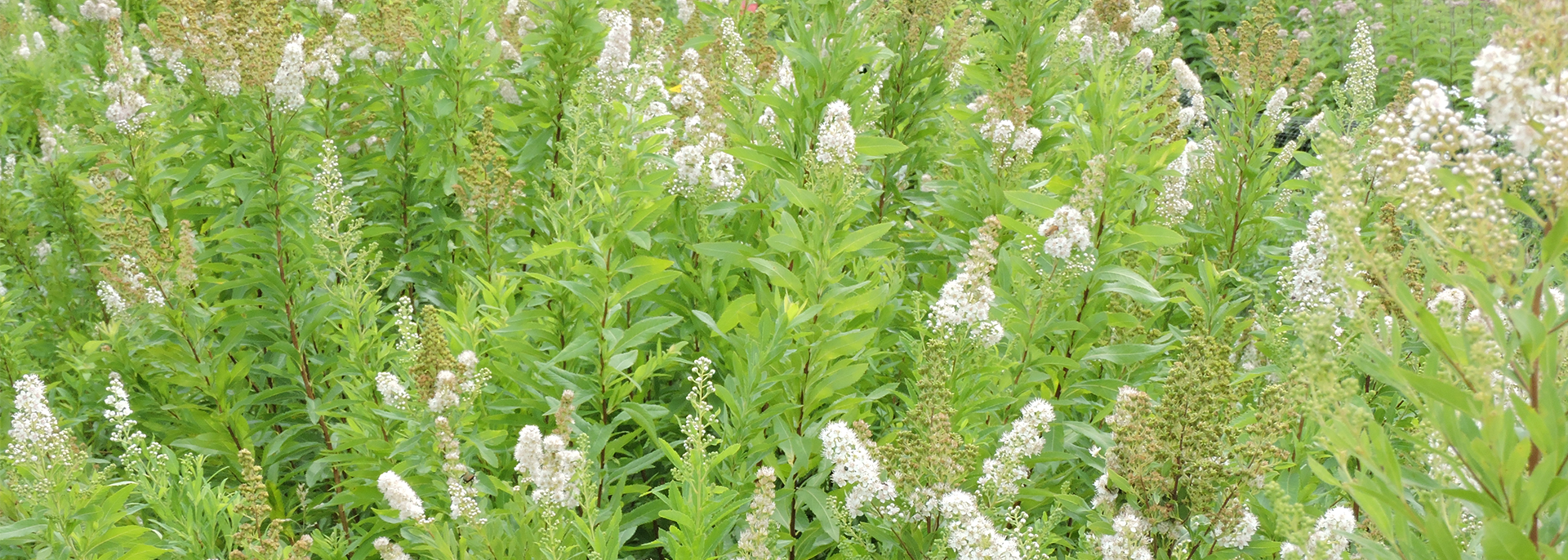
Spiraea alba, Du Roi
Alternate Common Names: meadow sweet, meadowsweet, narrow-leaved meadowsweet, American meadowsweet, pale bridewort, pipestem, queen of the meadows
Family: rose family (Rosaceae)
Functional Group: woody species, shrubs
Description
- Life cycle and growth form
Perennial shrub with woody root system, growing in colonies of slender stems.
Height: 2-4 ft
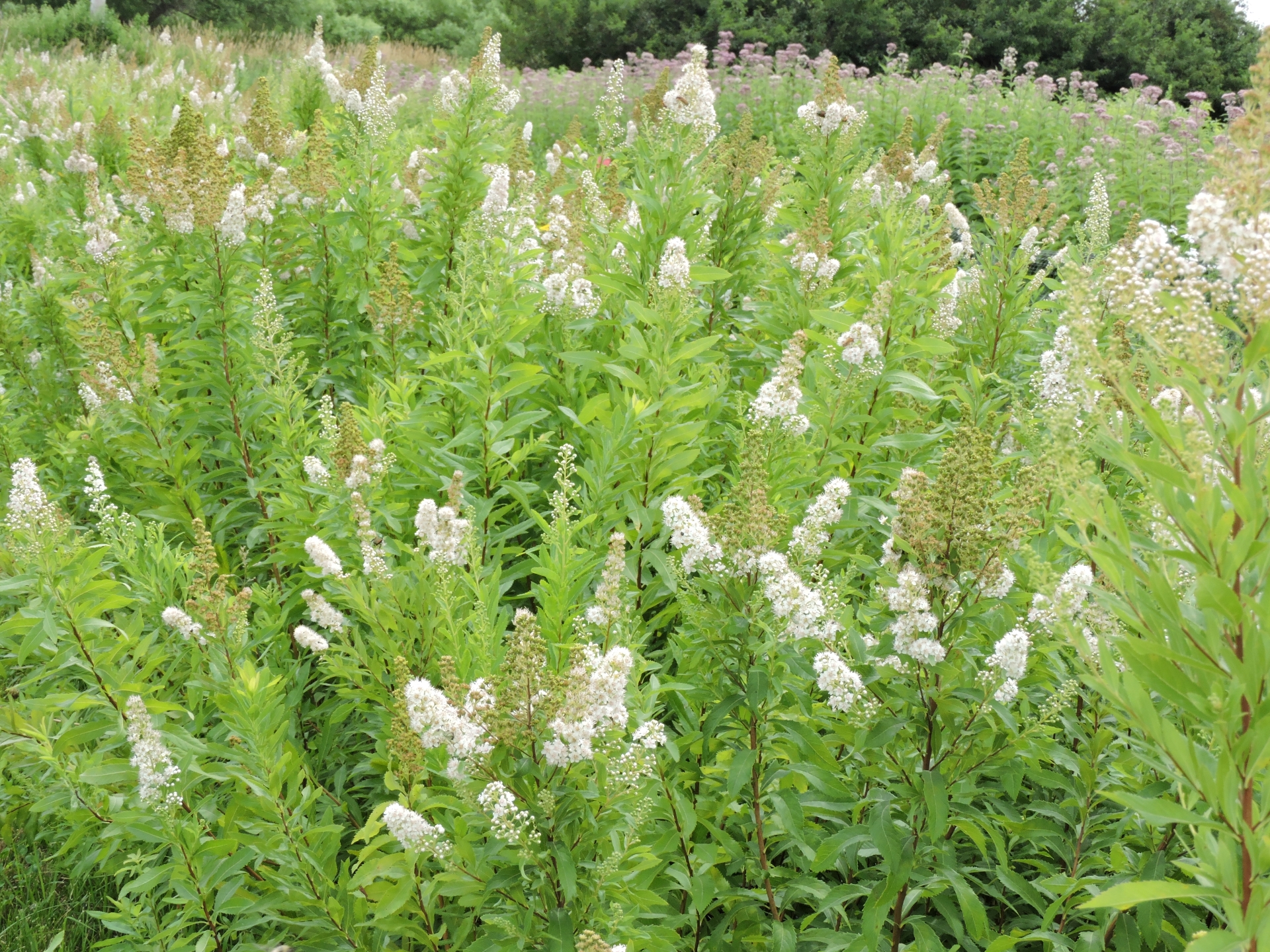
- Leaves and stem
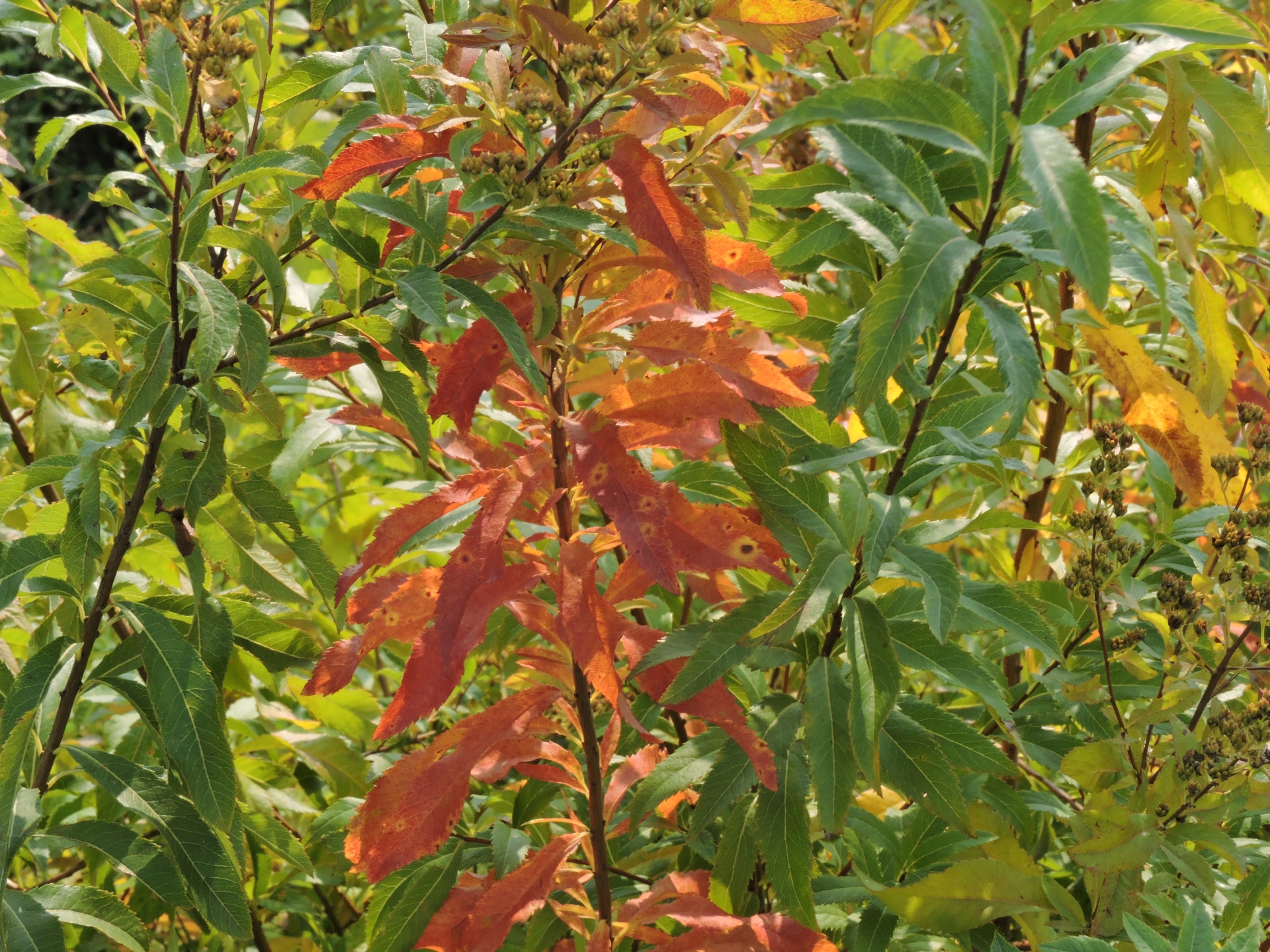
Leaves alternate, mostly hairless, narrowly elliptic, 2-3 in long and ¾ in wide, with finely serrate margins and short petioles; stems smooth, slender, and woody, with few branches, becoming brown with age, multiple stems produced from the same rootstock.
- Flower, fruit and seedhead
Flower: Radially symmetrical, ¼ in wide flowers are five-parted with white petals, a pink, yellow, or orange center ring, and long stamens that stick out from the flowers; inflorescence is a branched cluster of spikes 2 - 6 in long, each with numerous flowers, blooming from the top down.
Fruit/seedhead: Each flower forms four to six (usually five) dry, reddish-brown fruits (follicles), arrayed in a star-like cluster; each follicle is tough, short-beaked, hairless, and contains 2-5 seeds; ripe follicles split open along one side to release the seeds.
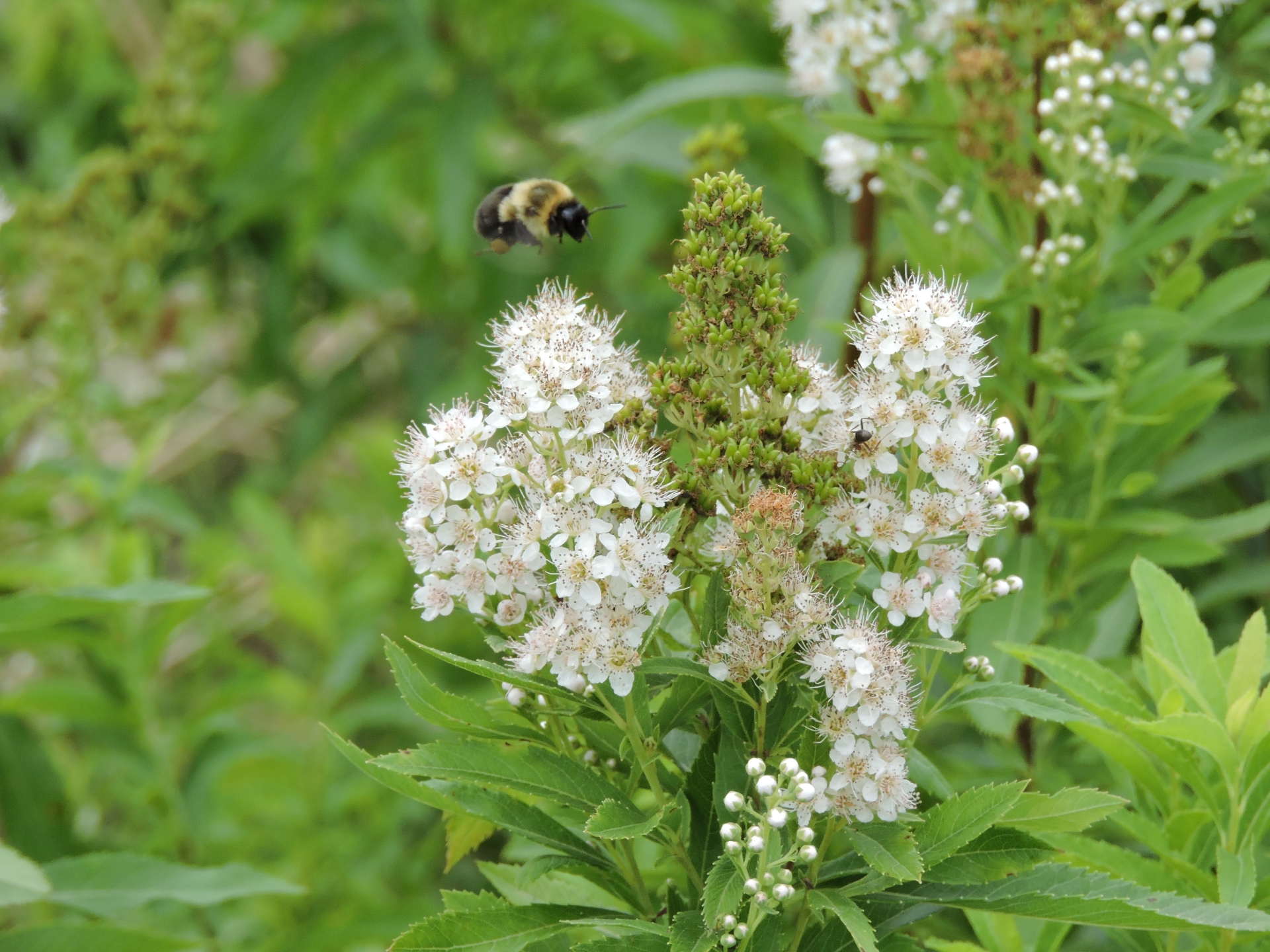
- Seed
Seed characteristics
Seeds per ounce: 300,000 (Prairie Moon)
1000 seed weight: 0.88 g (Seed Information Database)
Description: Slender, banana-shaped seeds are 2 mm long by less than 0.5 mm wide and a rusty orange color.
Typical seed test
TZ-PLS: 53%
Purity: 60%
TZ: 88%
(based on 3 seed lots produced at TPC)
- Habitat and range
Habitat: Grows in moist to wet soil in full sun; found in wet prairies, along streams, bogs, marsh edges, ditches; Facultative Wetland status in Midwest (USDA Plants Database); benefits from irrigation in seed production systems.
Conservation status: Global- G5, secure; Delaware and Tennessee- S1, critically imperiled; North Carolina- S2, imperiled; South Dakota- S3, vulnerable (NatureServe)
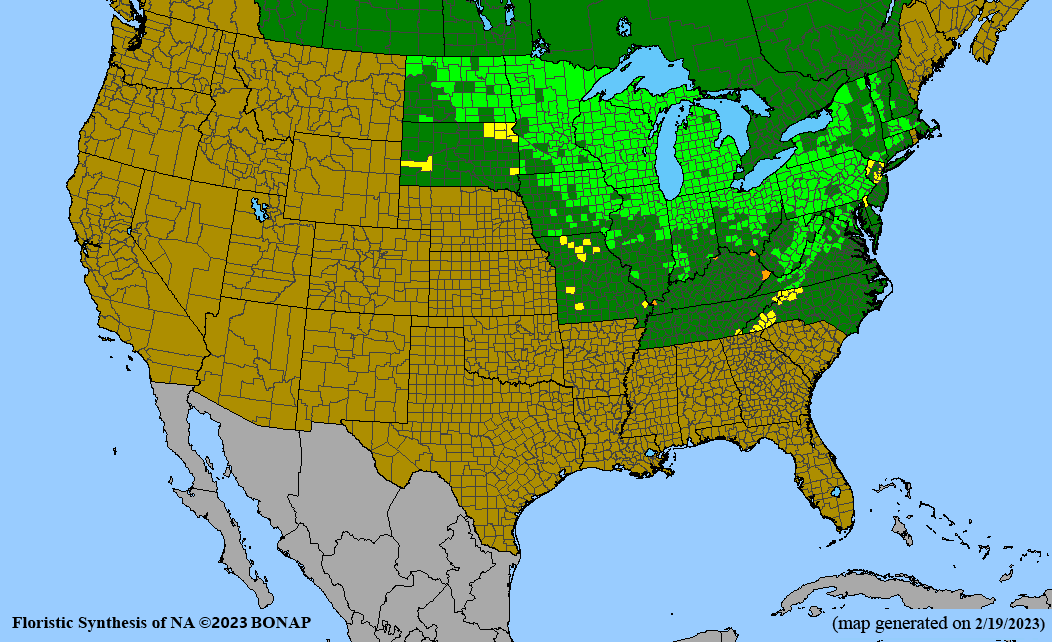
General Comments
The long flowering time and abundance of nectar and pollen make this an important food plant for many kinds of bees as well as small butterflies, wasps, beetles, and flies. We have observed the endangered Rusty Patched Bumble Bee visiting the flowers in white meadowsweet seed production plots. The dense colonies of stems provide shelter and nesting habitat for some bird species. The leaves, stems, and/or roots have uses in the traditional medicine and foodways of several Indigenous groups within the plant’s native range. Recommended for use as a low hedge, in perennial borders, wet prairie restorations, and roadside plantings.
Recommendations for Seed Production
- Establishment for seed production
Direct seeding
We do not have experience with direct seeding this species for seed production.
Greenhouse
Seed pre-treatment: 45 days cold-moist stratification.
Sowing: Seeds are small and must be surface-sown; stratified seed germinates quickly (starting 5 days from sowing).
Transplanting: Seedling plugs (2.5 in deep, 73-cell trays) are ready to transplant about 12 weeks from germination. After several weeks in plugs, seedlings benefit from fertilizer application such as a sprinkling of coated fertilizer pellets. Harden off outside, then dibble into a weed barrier in irrigated production rows.
- Stand management
Weeds: Few issues if weed barrier used in planting year; dense foliage shades out most weeds in subsequent years; mow and trim between rows.
Pests: A few stems are affected by dark colored aphids that cause distortion of leaves and growing shoot tips.
Diseases: None noted.
Note: Mow plots down to 4 in during the dormant season every other year to stimulate production of robust new stems.
- Seed production
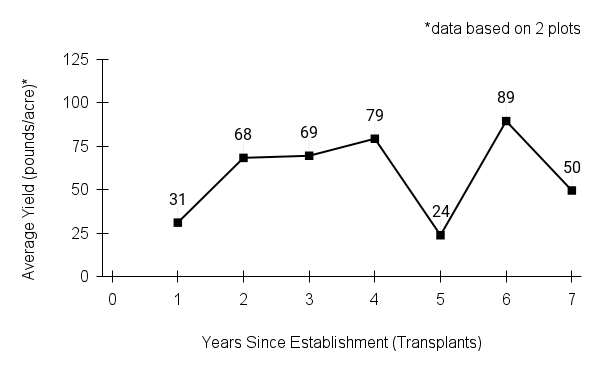 First harvest: second year
First harvest: second yearYield: 25-90 pounds/acre (based on 2 plots)
Stand life: at least 8 years
Flowering date: June - August
Seed maturity: late October - early November
Harvest date range at TPC (2017-2023): Oct 17 - Nov 1
Recommended harvest method: Check plots frequently from mid-October through early November; hand clip or combine when follicles (dry fruits) have split open on most stalks.
- Seed cleaning and storage
Cleaning process: Do NOT use a brush machine. Brushing pulverizes the dried leaves, making it very difficult to extract the fine seed. Hand-clipped material can be beaten in a cloth bag to release seed. Combined or hand collected material can then be treated in the same way: run through ¼ in hardware cloth to remove sticks, then airscreen. If greater purity is desired, passing the cleaned seed through soil sieves can remove residual chopped leaf material.
Seed storage: cool/dry (orthodox)
Released Germplasm
Source Identified material: Natural Selections/Iowa Ecotype Zones 1 and 2
- References
Chayka, Katy. (n.d.). Spiraea alba (White Meadowsweet). Minnesota Wildflowers. https://www.minnesotawildflowers.info/flower/white-meadowsweet
Cochrane, T. S., Elliot, K., & Lipke, C. S. (2014). White Meadowsweet. In Prairie Plants of the University of Wisconsin-Madison Arboretum (3rd ed., p. 314). University of Wisconsin-Madison Arboretum.
Hilty, J. (2019). Meadowsweet - Spiraea alba. Illinois Wildflowers. https://www.illinoiswildflowers.info/wetland/plants/meadowsweet.htm
Kartesz, J.T., The Biota of North America Program (BONAP). 2023. North American Plant Atlas. (http://bonap.net/napa). Chapel Hill, N.C. [maps generated from Kartesz, J.T. 2023. Floristic Synthesis of North America, Version 1.0. Biota of North America Program (BONAP). (in press)]
NatureServe. 2024. NatureServe Network Biodiversity Location Data accessed through NatureServe Explorer [web application]. NatureServe, Arlington, Virginia. Available https://explorer.natureserve.org/. (Accessed: February 28, 2024).
Runkel, S. T., & Roosa, D. M. (2009). Meadow sweet. In Wildflowers of the Tallgrass Prairie: The Upper Midwest (2nd ed., pp. 142–143). University of Iowa Press.
USDA NRCS National Plant Data Team. (n.d.). Spiraea alba Du Roi. USDA plants database. https://plants.usda.gov/home/plantProfile?symbol=SPAL2
Species Guide Updated 3/5/2024
Sedges
Sedges sagemThe Species Production Guides for sedges and rushes provide specific information about growing each of these species for seed production.
Scroll the list (alphabetized by scientific name) or press ctrl-f (or command-f) to search for any name in this page.
A printable file (pdf) is also provided on each species page for those needing a print version.
This section is a work in progress. We will continue to add new species guides as they are completed.
Carex annectens / yellowfruit sedge
Carex bebbii / Bebb's sedge
Carex bicknellii / Bicknell's sedge
Carex brevior / shortbeak sedge
Carex buxbaumii / Buxbaum's sedge
Carex cristatella / crested sedge
Carex gravida / heavy sedge
Carex hystericina / bottlebrush sedge
Carex interior / inland sedge
- Carex laeviconica / smoothcone sedge
Carex molesta / troublesome sedge
Carex pellita / woolly sedge
Carex sartwellii / Sartwell's sedge
Carex scoparia / broom sedge
Carex stricta / upright sedge
Carex suberecta / prairie straw sedge
Carex tribuloides / blunt broom sedge
Carex vulpinoidea / fox sedge
Scirpus atrovirens / green bulrush
Scirpus cyperinus / woolgrass
